
Working Identity, Updated Edition, With a New Preface: Unconventional Strategies for Reinventing Your Career
by
Herminia Ibarra
Published 17 Oct 2023
“This gave me the confidence that I could actually run something, that I could manage a senior team,” she said. Another side project, a biotech start-up she worked on with her brother-in-law, taught her how to negotiate with venture capitalists. None of those were intended as moves toward a new career. But when she saw a satisfying client relationship come to an end and realized that she would not be happy returning to a job selling new business and implementing short-term engagements, her side projects gave her a base from which to explore further. Remembering that she had vowed to herself that she would not “turn forty still a consultant,” she moved into an exploratory phase in which she investigated three options.
…
Each of these unconventional strategies below corresponds to a chapter in the book (except chapter 7, which covers three strategies). Unconventional strategy 5 (chapter 5): Identify projects that can help you get a feel for a new line of work or style of working. Try to do these as extracurricular activities or parallel paths so that you can experiment seriously without making a commitment. Think in terms of side projects and temporary assignments, not binding decisions. Pursue these activities seriously, but delay commitment. Slowly ascertain your enduring values and preferences, what makes you unique in the world. Just make sure that you vary your experiments so that you can compare and contrast experiences before you narrow your options.
…
This error is so undermining because, as we have seen, we learn about ourselves by doing, by testing concrete possibilities. And few of us change careers from one day to the next. We don’t, as a rule, leap into the unknown. Instead, most of us build a new working identity by developing the girders and spans as “side projects”—extracurricular ventures that allow us to test possible selves without compromising our current jobs. Crafting experiments refers to the practice of implementing the small probes and projects that allow us to try out new professional roles on a limited but tangible scale without committing to a particular direction.
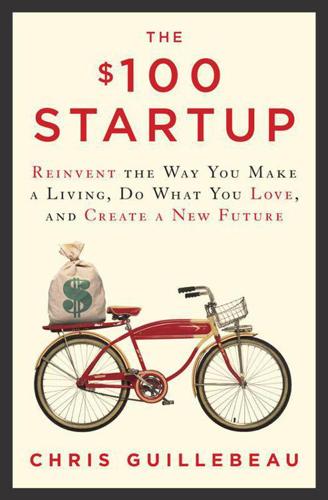
The $100 Startup: Reinvent the Way You Make a Living, Do What You Love, and Create a New Future
by
Chris Guillebeau
Published 7 May 2012
As we saw with Michael’s example in Chapter 1, car dealerships were going out of business, and he was able to rent his first temporary mattress space on the cheap. Not everyone would have thought of locating a mattress shop in a former car dealership, but Michael grabbed the opportunity. A spin-off or side project. One business idea can lead to many others. Whenever something is going well, think about offshoots, spin-offs, and side projects that could also bring in income. Brandon Pearce, whom we’ll see more of in Chapter 4, founded Studio Helper as a side project to his main business of Music Teacher’s Helper. It now brings in more than $100,000 a year on its own. Tip: When thinking about different business ideas, also think about money.
…
Instead of living in Utah, he now wakes up in sunny Escazú, Costa Rica, where he lives with his wife and three young daughters. He has ten employees living in different places around the world. He carefully tracks his time and estimates that he spends eight to fifteen hours a week directly related to the business. The rest of his time is spent with his family and on various side projects that he pursues for fun. Brandon and his family used to live in Utah and now they live in Costa Rica, but that’s not the whole story; the whole story is that they could live anywhere they want. When they needed to do a visa run, they went over to Guatemala for eight days, and since Brandon and his wife are “unschooling” their children and can easily take them anywhere, there’s no telling where they’ll end up next.
…
Instead, it will continue to increase as more and more music teachers join the ranks. Case Study 2: The Accidental Worldwide Photographer Originally from Michigan, Kyle Hepp is an “accidental” entrepreneur in the literal sense. Having relocated to Chile with her husband, Seba, Kyle made ends meet by working on side projects for AOL while she looked for a job in her planned field of sports management. The South American lifestyle was great, but Seba’s job as a construction engineer was far from secure, and the company started to go under. One Friday afternoon, he received notice that his salary was being cut 20 percent.

Pivot: The Only Move That Matters Is Your Next One
by
Jenny Blake
Published 14 Jul 2016
That is when I first realized that financial security and great benefits were important to me, but not the ultimate drivers of my career decisions. I knew it would not be fair to Google or to my book to give both projects short shrift by taking on too much. I also knew that I could not sustain the pace of keeping side projects and a full-time job much longer. I was exhausted and on the express train back to burnout, where I had unfortunately been too many times in prior years. Moreover, I had a hunch that leaving to start my own business would spring me out of proactive mode and challenge me to become the innovative impacter I longed to be.
…
Her one-year vision was to be engaged in a flexible work environment that would keep her physically active, surrounded by like-minded people, and provide stepping-stones toward a career that was conducive to starting a family and running a business with her husband. After taking the bar exam, Gillian completed CorePower Yoga Teacher Training as a side project and reward to herself for finishing law school. Even though she hadn’t planned to do much with it at the time, practicing yoga became an important element of her happiness formula. A few months later, when she found out that she did pass the bar exam, Gillian decided to teach at a yoga studio rather than continue at the law firm where she was interning.
…
As a result, she started looking for full-time jobs—her first time seeking office work since college. Prior to kicking off her job search, Monica started hosting a monthly dinner salon called Cheshire Parlour. These events connected interesting people with each other around big ideas like freedom, time, and fortune—not the usual Saturday night networking and bar banter. This side project was a natural extension of her core strengths as a people connector and facilitator of meaningful conversations. Though Monica loved these monthly dinners, her funds available for hosting began to dwindle. It was a classic “pursue your passion” conundrum. This was her passion, but it was not providing sustainable income.
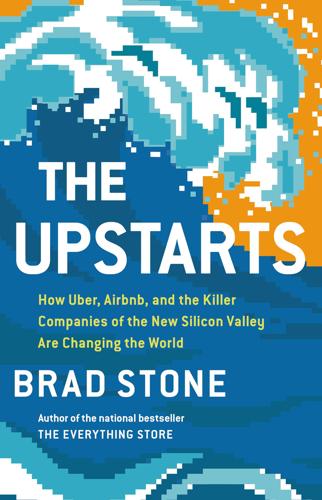
The Upstarts: How Uber, Airbnb, and the Killer Companies of the New Silicon Valley Are Changing the World
by
Brad Stone
Published 30 Jan 2017
It is instead a book about a pivotal moment in the century-long emergence of a technological society. It’s about a crucial era during which old regimes fell, new leaders emerged, new social contracts were forged between strangers, the topography of cities changed, and the upstarts roamed the earth. PART I SIDE PROJECTS CHAPTER 1 THE TROUGH OF SORROW The Early Years of Airbnb Every great startup starts as a side project that isn’t anybody’s main priority. AirBed & Breakfast was a way to pay our rent. It was a way to pay rent and buy us time and help us get to the big idea. —Brian Chesky The first guest to use Airbedandbreakfast.com was Amol Surve, a recent graduate of the Biodesign Institute at Arizona State University.1 He arrived at his rental late in the afternoon on Tuesday, October 16, 2007, fifteen months before Barack Obama’s historic inauguration, and was greeted at the door by the site’s twenty-six-year-old co-creator Joe Gebbia, who politely asked him to remove his shoes.
…
To find out more, go to hachettespeakersbureau.com or call (866) 376-6591. The publisher is not responsible for websites (or their content) that are not owned by the publisher. ISBN 978-0-316-38838-2 E3-20161221-JV-PC Contents Cover Title Page Copyright Dedication Upstart Introduction PART I: SIDE PROJECTS CHAPTER 1: THE TROUGH OF SORROW The Early Years of Airbnb CHAPTER 2: JAM SESSIONS The Early Years of Uber CHAPTER 3: THE NONSTARTERS SeamlessWeb, Taxi Magic, Cabulous, Couchsurfing, Zimride CHAPTER 4: THE GROWTH HACKER How Airbnb Took Off CHAPTER 5: BLOOD, SWEAT, AND RAMEN How Uber Conquered San Francisco PART II: EMPIRE BUILDING CHAPTER 6: THE WARTIME CEO Airbnb Fights on Two Fronts CHAPTER 7: THE PLAYBOOK Uber’s Expansion Begins CHAPTER 8: TRAVIS’S LAW The Rise of Ridesharing CHAPTER 9: TOO BIG TO REGULATE Airbnb’s Fight in New York City PART III: THE TRIAL OF THE UPSTARTS CHAPTER 10: GOD VIEW Uber’s Rough Ride CHAPTER 11: ESCAPE VELOCITY Fights and Fables with Airbnb CHAPTER 12: GLOBAL MEGA-UNICORN DEATH MATCH!
…
Airbnb and Uber didn’t spawn “the sharing economy,” “the on-demand economy,” or “the one-tap economy” (those labels never quite seemed to fit) so much as usher in a new trust economy, helping regular folks to negotiate transportation and accommodations in the age of ubiquitous internet access. The nearly simultaneous emergence of both companies has been striking. For most of its first year, Airbnb was a side project that many dismissed as wildly outlandish. Why would a sane person ever want to sleep in a stranger’s bed? Eight years later, investors valued the company at thirty billion dollars, more than any hotel chain in the world. Those founders who slept on the hardwood floor in Washington, DC? They are worth about three billion dollars each, at least on paper.2 Uber’s potential was underestimated even by its own creators, who saw the service as a useful tool in San Francisco, a city whose cab industry badly underserved the needs of a booming business capital.
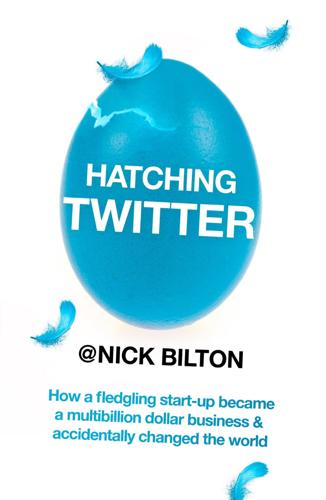
Hatching Twitter
by
Nick Bilton
Published 5 Nov 2013
The group planned to build software to increase workplace productivity. But, starting a pattern that would follow Ev through his career, something better accidentally grew out of Pyra. Ev and an employee had built a simple internal diary Web site that would help Pyra employees keep up to date about work progress. Meg didn’t like the side project and was not shy in expressing her views, calling it just another Ev distraction. One week in the summer of 1999, while she was away on vacation, Ev released the diary Web site to the world. He called it Blogger, a word that had not existed until then. He believed it would allow people without any computer-programming knowledge to create a Web log, or blog.
…
When he came across one that might make sense, he muttered it to himself to see how it sounded aloud. “Worship.” “Quickly.” “Tremble.” Then, shaking his head with disapproval, he continued to flip through the dictionary. As the day drew on, he left the office and went home to continue his search for a name to give to the new side project. Finally he stopped, frozen as he stared down at a word, instantly knowing that this might be it. He read the definition, reread it, then quickly dashed off an e-mail to the group. Ev’s efforts to keep Noah out of the status project had lasted about twenty minutes. Just as in the early days of Odeo, if Ev said one thing, Noah would do exactly the opposite.
…
Mike Arrington, who ran TechCrunch, a popular Valley tech blog, wrote that Twitter had launched officially and “a few select insiders were playing with the service at the Valleyschwag party in San Francisco last night.” But Arrington didn’t seem too impressed by the new service. He questioned its privacy issues and, in a direct slam to Ev, wondered why Odeo, a podcasting company, was wasting its time on side projects. Although Om Malik’s blog post was kinder, showing interest in the new Twitter contraption, he gave all the credit to a certain drunk cofounder he had shared cigarettes and vodka with the night before. “A new mobile social networking application written by Noah Glass (and team),” Om wrote. Ev tried to fix the press afterward, but it was too late.

The Start-Up of You: Adapt to the Future, Invest in Yourself, and Transform Your Career
by
Reid Hoffman
and
Ben Casnocha
Published 14 Feb 2012
This is what I did when I began advising PayPal while still working at Socialnet: it was a side project that had the potential to become a full-blown Plan B later on (which it ultimately did). Companies ranging from 3M to Gore-Tex, Google to LinkedIn, pay employees to spend a portion of their time experimenting on side projects. Why not make this a personal career policy? Set aside one day a week or month or even every few months to work on something that could be part of your Plan B. If you have a business idea you want to pursue, a skill you want to learn, a relationship you want to form, or some other curiosity or aspiration, start on it as a side project and see where it goes.
…
Writing skills, general management experience, technical and computer skills, people smarts, and international experience or language skills are examples of skills with high option value—that is, they are transferable to a wide range of possible Plan B’s. Once you’ve figured out which transferable skills to invest in, make a concrete action plan you can stick to, whether by signing up for a course or conference, or simply by pledging to spend one hour each week self-learning. In the next month: • Begin on an experimental side project that you work on during some nights and weekends. Orient it around a skill or experience that is different but related—something that either enhances what you do now or can serve as a possible Plan B if your Plan A doesn’t work out. Ideally, collaborate on this project with someone else in your network
…
You gain the “ability to absorb shocks gracefully.”8 Some job paths automatically provide regular volatility (e.g., entrepreneurship or freelancing). In other jobs you’ll have to introduce shocks and disruptions manually. Do so by aggressively implementing the opportunity-creating strategies we discussed in the previous chapter (opportunity and risk are two sides of the same coin, after all): join and create groups, be in motion, take on side projects, hustle. In a phrase, say “yes” more. What would happen if you defaulted to “yes” for a full day? A full week? If you say yes to the conference invite you were tempted to skip, might you overhear a comment that ignites your imagination for a new business or new research or a new relationship? Perhaps.
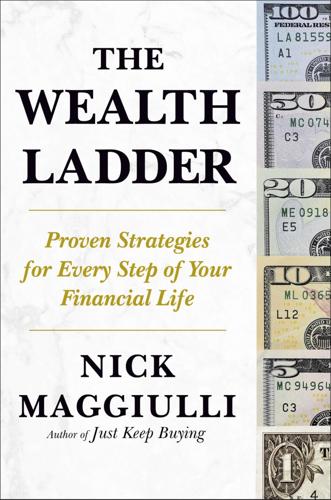
The Wealth Ladder: Proven Strategies for Every Step of Your Financial Life
by
Nick Maggiulli
Published 22 Jul 2025
Once you frame your career decisions in terms of their opportunity costs (i.e., what you give up), then you can determine whether a particular choice makes sense. Should you take that new job or stay where you are? Is that new investment worth your time? How about that side hustle you heard about? Once you know what you have to give up to take on a new job or side project, then you can decide if it’s worth it. Unfortunately, this process is more difficult than it first appears, as highlighted in a blog post by Eric Jorgenson, writer and CEO at Scribe Media: As I reflect on my last year, the biggest mistakes I see are failures to change my decision-making to suit a new context.
…
You’ll go from working for money to having money work for you. This seemingly small shift in thinking can have a profound impact on how you spend your time and energy. For example, as you get to a certain point on the Wealth Ladder, you may stop prioritizing your traditional career altogether. Instead, you might start focusing on side projects and investments that offer more upside potential. The framework to use when thinking about this problem is what Naval Ravikant calls leverage. And no, I’m not talking about the “borrow money to invest” kind of leverage. I’m talking about the leverage that determines how much output you get for each unit of input.
…
What You’re Good At + What You’re Interested In If you work on something that you’re good at and that you’re interested in, you will probably find a way to make money on it. Maybe not today, but eventually. This describes the journey of YouTuber James “Jimmy” Donaldson, aka MrBeast. Donaldson started his channel in 2012 when he was just fourteen years old by posting videos about Minecraft and other video games. This wasn’t just a fun side project for Donaldson though. He wanted to make a career out of it. So he studied the YouTube algorithm for a thousand days to get better at making videos. In that time, he examined every detail about what it takes to make a great YouTube video. He analyzed a video’s pacing, the brightness of its thumbnail, what made it go viral, and much more.

Choose Yourself!
by
James Altucher
Published 14 Sep 2013
Since I do a podcast now, this seems like a great idea to me. So they raised a ton of money from professional venture capitalists. Then one of their programmers started working on a side project. The side project got a little traction but not much. But the CEO of Odeo decided to switch strategies and go full force into the side project without having a clue if it would work. He felt bad, since this wasn’t what the investors had invested in. So he called up all of the investors and described the side project to them and all the traction they were getting, etc., and then made an offer: “Since this is a different direction, I’d be willing to buy all of your shares back so nobody will lose any money.”
…
So he called up all of the investors and described the side project to them and all the traction they were getting, etc., and then made an offer: “Since this is a different direction, I’d be willing to buy all of your shares back so nobody will lose any money.” One hundred percent of his investors said, “Yes! Give it back!” and so he bought all of his investors’ shares back. The side project was Twitter—and now founder Ev Williams is a billionaire as a result. Nobody knew. Nobody knows. You have to try multiple ideas and see which ones create excitement among customers and employees, and you can see that people are legitimately using it and excited by it. When I started Stockpickr, (what I called then “the MySpace of Finance”) someone once wrote me and said, “Please block me from the site. I’m too addicted to it and it’s ruining my life.”
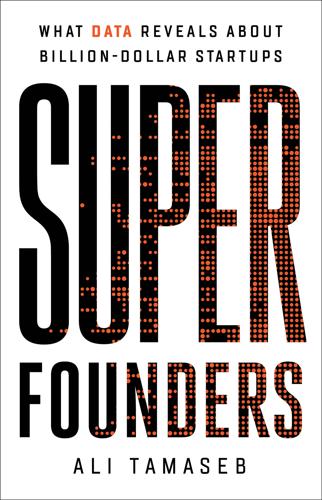
Super Founders: What Data Reveals About Billion-Dollar Startups
by
Ali Tamaseb
Published 14 Sep 2021
It was a little ridiculous. There was so much potential there versus things other people were using. Nobody outside the core Linux and Git communities was seriously using it for anything. I very purposefully wanted to work on a side project that, unlike Gravatar, if it became successful, would be something that I could work on full-time and have it pay for me to do that. So initially GitHub was a side project. It was just something that I started working on. I knew some other Ruby programmers through a user’s group that we put together, and we would meet every two weeks at someone’s office, and there’d be some technical talk for maybe an hour.
…
They brought the idea to Y Combinator in the winter of 2007 and raised a small seed round from investors including Chris Sacca and Paul Buchheit. Ten months after incorporating, Auctomatic was acquired by a Canadian public company for around $5 million, turning the Collison brothers into millionaires before their twenty-first birthdays. Not long after the acquisition, the brothers started building some side projects and found that it was very difficult to accept payments on the web. They started a project to make doing so easier. The effort became Stripe, which was founded in 2010. Today, it’s used on over a hundred thousand websites and was last valued at more than $35 billion. Even though their first company’s acquisition didn’t pass the $10 million bar, Patrick and John Collison still embodied the traits of a Super Founder.
…
Zuckerberg worked on Synapse with a classmate, Adam D’Angelo, who also had a habit of building stuff for fun. D’Angelo would go on to start Quora, yet another billion-dollar company that builds a community around asking and answering questions and showing relevant ads. Almost all the founders of billion-dollar companies are builders. Going back to high school or even younger, many of them started side projects, student clubs, or even companies. Aaron Levie, the founder of Box, spent his high school years spinning up company ideas with friends in his parents’ hot tub. He built some of them too, like a website for buying and selling homes, and a search engine that Levie described as the “world’s fastest search engine if you have never been to Google.”2 In college, Nat Turner, the founder of Flatiron Health, had started an on-demand food-delivery company and before that a gift-card exchange service.

The Personal MBA: A World-Class Business Education in a Single Volume
by
Josh Kaufman
Published 2 Feb 2011
In your optimism, forget ye not prudence: changing the world is difficult if you can’t pay the bills. Some ideas don’t have enough of a market behind them to support a business, and that’s perfectly okay. That doesn’t mean you should ignore them: side projects can help you expand your knowledge, improve your skills, and experiment with new methods and techniques. I’m a huge advocate of pursuing side projects as long as you don’t count on them to reliably produce income. Once you have your financial bases covered, crusade all you want. Before attempting to launch a business, take the time to do a thorough evaluation using the Ten Ways to Evaluate a Market.
…
Everything from the shape of the bottle to the scent of the product is optimized—including the text on the cardboard boxes used to ship inventory to the store. My work at P&G, however, wasn’t the only thing on my mind. My decision to skip business school in favor of educating myself developed from a side project into a minor obsession. Every day I would spend hour after hour reading and researching, searching for one more tidbit of knowledge that would help me to better understand how the business world worked. Instead of using the summer after graduation to relax and go on vacation, I spent my days haunting the business stacks at the local bookstore, absorbing as much as I possibly could.
…
The Personal MBA recommended reading list has been profiled by BusinessWeek4 and has been updated with the results of my latest research every year since 2005. Thousands of do-it-yourself business students from around the world help one another learn and grow every day in the PMBA Community forums.5 In an amazingly short period of time, the Personal MBA grew from a one-man side project into a major global movement, and I left P&G to focus on building the PMBA and working with my clients full-time. As much as I enjoyed leading the efforts of the worldwide PMBA community, I quickly realized that providing a reading list wasn’t enough. People read business books to solve specific challenges or to improve themselves in some tangible way.

Making Ideas Happen: Overcoming the Obstacles Between Vision and Reality
by
Scott Belsky
Published 31 Mar 2010
People will likely respect the efforts you take and the decisions you make when they understand the source of your strengths and ambitions. While at work, you might consider volunteering for internal or side projects that will best showcase your strengths and take full advantage of your differentiating attributes. For Noah Brier, this involved a continuing series of breakfasts and a few quick side projects that shared his perspective and talent with the world. For others, it may involve setting up a dynamic portfolio site, doing pro bono work for a nonprofit, or writing freelance articles for local newspapers.
…
There are many famous long-term partnerships between Doers and Dreamers that have yielded extraordinary results. One such partnership is between Jeffrey Kalmikoff and Jake Nickell, the co-founders of the online T-shirt design community known as Threadless. Starting in the year 2000, Kalmikoff and Nickell grew Threadless from a small side project into a $35 million business. The partnership worked because Kalmikoff is a Dreamer and Nickell is a Doer. During the preparatory phase for Behance’s first annual 99% Conference in 2009, I had the occasion to listen in as the two explained their relationship. “I’m always on to something new,” Kalmikoff said.
…
Unfortunately, the reality is that bosses and clients are as worried about their own careers as you are about your own. You must take the task of marketing your strengths into your own hands. Once you accept responsibility for marketing yourself, you can start to mine for opportunities. Often, the opportunity to showcase your greatest strengths arises as a side project or extracurricular activity outside the scope of your official duties. Little problems pop up all the time that are, in fact, opportunities to which you can add a unique value. Fight the desire to wait for instructions, and learn to showcase your skills and expertise without an invitation. Effective Self-Marketing Builds Respect Not surprisingly, the serial idea makers who I have met are, across the board, focused on marketing themselves and their brands.
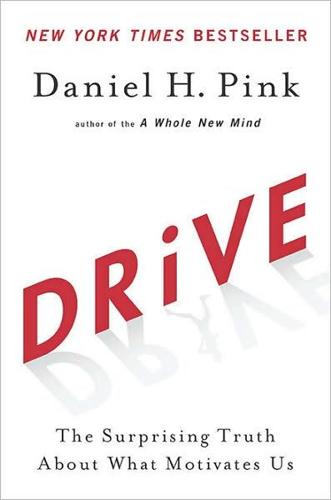
Drive: The Surprising Truth About What Motivates Us
by
Daniel H. Pink
Published 1 Jan 2008
Or we can listen to the research, drag our business and personal practices into the twenty-first century, and craft a new operating system to help ourselves, our companies, and our world work a little better. It won't be easy. It won't happen overnight. So let's get started. Drive Part Two The Three Elements Drive CHAPTER 4 Autonomy I 've seen the future and it works. It works in around-the-clock bursts in Sydney, Australia. It works on guerrilla-style side projects in Mountain View, California. And it works whenever it damn well pleases in Charlottesville, Virginia. The reason why it works is because of how it works. On the edges of the economy slowly, but inexorably old-fashioned ideas of management are giving way to a newfangled emphasis on self-direction.
…
According to 3M's former head of research and development, most of the inventions that the company relies on even today emerged from those periods of bootlegging and experimental doodling. McKnight's innovation remains in place at 3M. But only a surprisingly small number of other companies have moved in this direction, despite its proven results. The best-known company to embrace it is Google, which has long encouraged engineers to spend one day a week working on a side project. Some Googlers use their 20 percent time to fix an existing product, but most use it to develop something entirely new. Of course, Google doesn't sign away the intellectual property rights to what's created during that 20 percent which is wise. In a typical year, more than half of Google's new offerings are birthed during this period of pure autonomy.
…
At Georgetown University Hospital in Washington, D.C., for instance, many nurses have the freedom to conduct their own research projects, which in turn have changed a number of the hospital's programs and policies. Autonomy measures can work in a range of fields and offer a promising source for innovations and even institutional reforms. Initiatives like FedEx Days and sanctioned side projects aren't always easy to execute in the day-to-day maw of serving customers, shipping products, and solving problems. But they're becoming urgent in an economy that demands nonroutine, creative, conceptual abilities as any artist or designer would agree. Autonomy over task has long been critical to their ability to create.
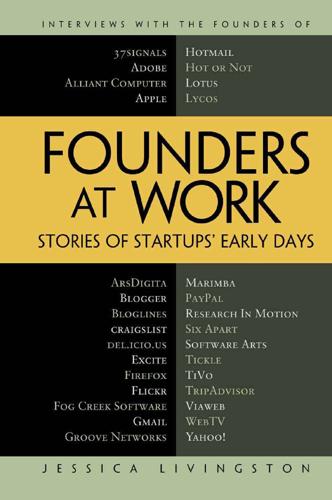
Founders at Work: Stories of Startups' Early Days
by
Jessica Livingston
Published 14 Aug 2008
I still had some other projects that I would have to spend some time on, and inevitably I end up with side projects just because something catches my eye and I go off and work on it for a little bit. I think I may have something to do with 20 percent projects as well because I’ve created a few things on the side. AdSense, the content-targeted ads, was actually something that, if I recall, I did on a Friday. It was an idea that we had talked about for a long time, but there was this belief that somehow it wouldn’t work. But it seemed like an interesting problem, so one evening I implemented this content-targeting system, just as sort of a side project, not because I was supposed to.
…
I walked to my dorm and told my roommates, “It’s a good thing I didn’t pay the quarterly parking fee.” So after my third year of college, I took a year off to work, to earn money for my fourth year. Then I got that job at Hewlett-Packard. What an incredible job. And then my career started going up, and I had all these side projects that I was working on and then Apple. So I never really had a chance to get back. But I was close, and I wanted to get back. And in 1981, I had a plane crash. As soon as I came out of amnesia from the plane crash—within 5 minutes I knew that this was the time I was going back to college. I’d never get another chance.
…
Although not a founder, Buchheit probably contributed more to Google than many founders do their startups. Gmail was in effect a startup within Google—a dramatically novel project on the margins of the company, initiated by a small group and brought to fruition against a good deal of resistance. Livingston: Take me back to how things got started. Was Gmail a side project or commissioned by Google? Buchheit: A little bit of both, actually. I started working on email software a long time ago. I think it was maybe 1996, but it was just a little project. I had all these ideas that never really went anywhere. Oddly enough, I think I was calling it Gmail at the time, for some other reason.
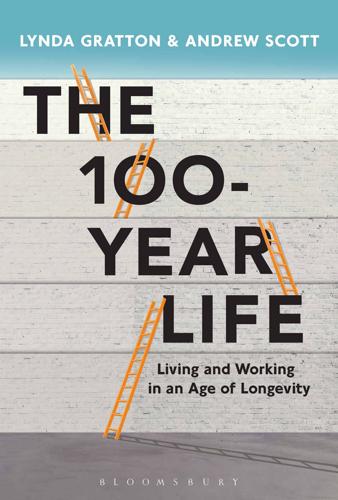
The 100-Year Life: Living and Working in an Age of Longevity
by
Lynda Gratton
and
Andrew Scott
Published 1 Jun 2016
Jimmy decides to take a week off as holiday from SPG and goes out to India to see what they are doing and visit their offices. The more Jimmy investigates, the more he can see the commercial value in his plan. So he decides to take action and begins to learn more about these technologies. He develops a series of side projects that give him a taster of what he could become. For example, he joins a local entrepreneurs’ club that meets every month. He also signs up for an online course in accounting and marketing. In the entrepreneurs’ club, he meets a whole bunch of new people, some of whom are already running their own business.
…
As Jimmy thinks more about the options he faces, he begins to realize that Bob would be a great partner to work with him. Bob knows the industry and the location well, and points him in the direction of government-sponsored schemes that train start-ups and also provide seed funding. Jimmy in 2019: Three years later and Jimmy is ready to make the leap. All the side projects he has been involved with while he has been at SPG are beginning to pay off. He feels he knows enough about the cloud technologies, has strong links to providers in India, has positioned himself in the heart of a cluster of high-growth small companies, and has good links with government schemes.
…
Many other people over the age of 50 are already making the same decision as Jimmy to start their own company – some, of course, because they have no other option. What is interesting about Jimmy is that this is a decision he planned and prepared for. He began three years earlier to get his tangible and intangible assets in better shape, and the experiments and side projects gave him ample opportunity to learn more about himself and the market. Of course this planning period is rarely available to people who have lost their jobs and are now self-employed. Nevertheless, many small businesses fail and we can assume that there is a high change that Jimmy’s will fail too.
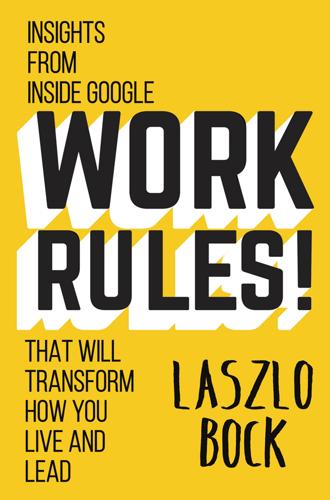
Work Rules!: Insights From Inside Google That Will Transform How You Live and Lead
by
Laszlo Bock
Published 31 Mar 2015
Caesar and the team started an informal 20-percent-time project to do better. They stripped out all the unnecessary steps, built on the Chrome browser platform, and created their first prototype Chromebook laptop. It booted in eight seconds. Utilization varies in practice, with some individuals focusing virtually 100 percent on side projects and many others not having any side projects at all. Some joke that it’s really “120 percent time,” where work is done after the day job rather than instead of it. More typically, a successful project starts with 5 or 10 percent of someone’s time, and as it demonstrates impact it consumes more and more time (and attracts more and more volunteers) until it becomes a formal product.
…
Give candidates a reason to join. 6 Let the Inmates Run the Asylum Take power from your managers and trust your people to run things Does your manager trust you? I’m sure she doesn’t hide her jewelry when you enter the room, but if you thought you were ready for a promotion, could you promote yourself? If you wanted to spend one day a week working on a side project or organizing lectures for other employees, and you figured out a way to still get your job done, could you? Is there a limit to how many sick days you can take? Just as important, do you trust your manager? Does she sponsor and fight for you and help you get work done? If you’re thinking about taking another job, can you talk to her about it?
…
Our version is 20 percent time, meaning that engineers have 20 percent of their week to focus on projects that interest them, outside of their day jobs but presumably still related to Google’s work (at Google that still covers a lot of territory). Outside of engineering, we don’t formally label projects as 20 percent time, but Googlers often find time for their own side projects, whether it was salesman Chris Genteel deciding to help minority-owned businesses get online (which eventually turned into a full-time job for him) or Anna Botelho, a former competitive ballroom dancer and member of our real estate team, enlisting other Googlers to teach dance classes at Google.
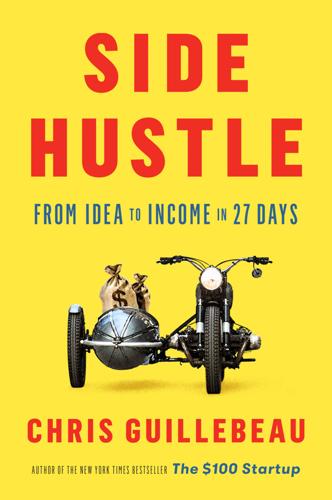
Side Hustle: From Idea to Income in 27 Days
by
Chris Guillebeau
Published 18 Sep 2017
To make it all work, he found a partner at an airline parking lot who would handle many of the pickups and returns for renters visiting from out of town. He spent a lot of time communicating with customers, but that back and forth was the majority of his hustle workload. Leasing sixteen cars might seem like a pretty risky investment for a side project, but once Tahsir did the math based on his initial experience with one vehicle, he knew it would turn a profit—or at least he was fairly confident. THE PROFIT EQUATION The secret to turning a profit for any business or venture, whether it’s a side hustle renting out cars or a multinational corporation, boils down to one basic principle: don’t spend more money than you take in.
…
When the initial response proved favorable, she began thinking about creating a whole series of planning documents for sale, another project that would require effort on the front end but then become pure upside with no further work required. Meredith had found an approach that was feasible, profitable, and persuasive. Because new teachers were coming on board with the Waldorf approach each year, there was a virtually inexhaustible supply of customers. For Meredith, this side project was the perfect match. “TINDER FOR SIDE HUSTLES” The world of online dating is estimated to be a two-billion-dollar-a-year industry. With so much at stake, it’s no surprise that the most successful dating websites invest tremendous amounts of money in fine-tuning their “matching” algorithms.
…
Thus was born the idea: Why not offer his “Guest Post Tracker” to other writers with the same problem? After putting together a simple sales page, he asked a friend to write about it in an online business forum. Right away, more than ten people signed up, paying a $49 fee. Before the end of the week, another ten payments had come through. Adam had another side project! The interesting thing about this hustle is that it essentially promotes itself. To market it, Adam simply writes short guest posts…about guest posts. Each one typically brings in another batch of customers right away, as well as an ongoing stream of customers who find the post over time. Ninety days in, Guest Post Tracker was bringing in $1,000 a month.
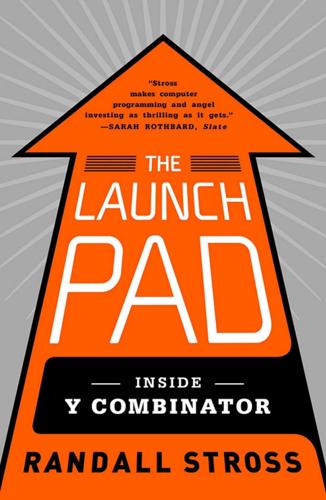
The Launch Pad: Inside Y Combinator, Silicon Valley's Most Exclusive School for Startups
by
Randall Stross
Published 4 Sep 2013
Ted Suzman has his own apartment in the Mission district, so the three are not housed as compactly as the Ridejoy trio. But to an observer watching them work, the Graffiti Lab’s threesome is a seamless unit. • In the middle of the summer, the Graffiti Labs founders find themselves, most unexpectedly, working on two different ideas simultaneously. The second idea began as a side project of Tim Suzman’s—hackers cannot resist side projects. He wanted to do an improved version of “Ask Me Anything” found on Reddit. In Reddit’s “I Am A” (IAmA) section, anyone can offer to field questions about their work or exploits or some aspect of their life that is unusual. The heading typically takes the form “I Am A—” followed by a noun, such as “Nightclub Doorman in Miami,” and then the initials AMA, for Ask Me Anything.
…
She had begun college at Bard College at Simon’s Rock, the college in the Berkshires for teenagers who have no need to finish the last two years of high school. After transferring to Berkeley, she met Andy Su, another computer science major and a wunderkind himself: he was a year younger than Mah. The two began immediately working on side projects. In the spring of 2009, in their junior year, they decided to do a startup, inDinero, that would compete online against Quicken’s QuickBooks, offering financial management to small businesses, just as Mint.com had taken on Quicken’s consumer product with an online service. They had a working prototype of inDinero in short order.
…
What the YC partners might have missed is that willingness to attack sales. “When I say sales, I don’t just mean people calling you up. I mean going out and talking to customers to figure out what they want. So why don’t you try this: erring on the side of sales. Just spend all your time doing sales and treating hacking as this side project, right?” The outrageousness of his suggestion makes Graham more animated. “That—” He pauses for emphasis. “That will tend to produce really good results.” Graham has an example in mind. He looks out, searching. “Vidyard—where’s Vidyard? Vidyard tried to sell its services to Airbnb, and Airbnb said no, they had already signed this contract to write code or something like that.

Internet for the People: The Fight for Our Digital Future
by
Ben Tarnoff
Published 13 Jun 2022
At twenty-eight, Pierre Omidyar had followed the standard accelerated trajectory of Silicon Valley: he had learned to code in seventh grade, and was on track to becoming a millionaire before the age of thirty by having his startup bought by Microsoft. Now he worked for a company that made software for handheld computers, widely expected to be the next big thing. But he was fascinated by the internet. So he spent his spare time online, tinkering with side projects. The idea for this particular project would be simple: a website where people could buy and sell. Buying and selling was still a relatively new idea on the internet. The NSFNET backbone had been decommissioned only five months earlier, marking the end of the era of public ownership. The question was no longer whether the internet would be a business, but what kind of business it would be.
…
By its second week, the items listed for sale included a Yamaha motorcycle, a Superman lunchbox, and an autographed Michael Jackson poster. By February 1996, traffic had grown brisk enough that Omidyar’s web hosting company increased his monthly fee, which led him to start taking a cut of the transactions to cover his expenses. Almost immediately, he was turning a profit. The side project had become a business. But the perfect market turned out to be less than perfect. Disputes broke out between buyers and sellers, and Omidyar was frequently called upon to adjudicate. He didn’t want to have to play referee, so he came up with a way to help users work it out themselves: a forum.
…
Its business model would look different than that of the search and social media giants, but it resembled them in one key respect: its triumph was largely due to its evolution into a “platform”—that is, an online mall. Amazon opened its online bookstore in July 1995, a couple months before the website that would become eBay appeared. The two founders struck a clear contrast. Pierre Omidyar was a programmer with a ponytail pursuing a side project. His initial motivation—creating the perfect market—was essentially utopian. Jeff Bezos was a Wall Street hedge fund manager without a utopian bone in his body. He was pure calculation, relentless and methodical, the logic of capital personified. He saw a business opportunity with the internet and didn’t want to miss it.
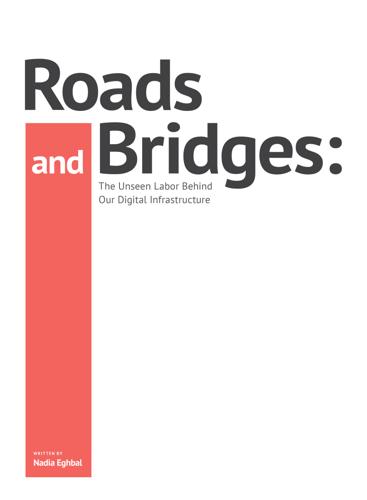
Roads and Bridges
by
Nadia Eghbal
Of his decision to continue maintaining the project, Payan says: It's not terribly exciting stuff, but there are so many people out there that use (depend, even?) on the project for their apps, that I feel obligated to be a good steward of it. Personally, I've moved on from iOS, so maintaining an iOS library isn't exactly my first choice for a side project.[66] Payan estimates the project only takes roughly 1-2 hours per month to keep up-to-date, so he doesn’t mind the work. Some projects become unexpectedly popular but take more time to support. Andrey Petrov is an independent developer who wrote a Python library called urllib3. He released it in 2008 as a significant improvement to the existing standard library, and it became popular among Python developers.
…
Corporate sponsorship of infrastructure projects On a larger scale, in some instances, a project’s value becomes so widely regarded that a company will hire a contributor to work on the project full-time. John Resig is the author of jQuery, a JavaScript programming library that is used by nearly two-thirds of the top million most-trafficked websites. [139] He built and released jQuery as a side project in 2006. John joined Mozilla in 2007 as a developer evangelist, specifically focusing on JavaScript libraries. [140] As jQuery continued to grow in popularity, it became apparent that, in addition to further technical development, it needed to formalize some of its governance aspects. Mozilla suggested that John work on jQuery full-time from 2009 to 2011, which he did.

Smartcuts: How Hackers, Innovators, and Icons Accelerate Success
by
Shane Snow
Published 8 Sep 2014
A couple in New Jersey built a social network for yarn enthusiasts. Rails was so friendly that more people became programmers. In 2006 a couple of guys at a podcasting startup had an idea for a side project. With Rails, they were able to build it in a few days—as an experiment—while running their business. They launched it to see what would happen. By spring 2007 the app had gotten popular enough that the team sold off the old company to pursue the side project full time. It was called Twitter. A traditional software company might have built Twitter on a lower layer like C and taken months or years to polish it before even knowing if people would use it.
…
That same year, Google’s AdSense product accounted for more than $12 billion in revenue, about a quarter of the search giant’s total revenues. Each of those products—smart electronic mail and context-based advertising—caught an enormous wave when it launched. Like Twitter, as we learned in chapter 4, both Gmail and AdSense started off as side projects. Google was in the water when the waves of Internet traffic came because it was tinkering with new ideas under the umbrella of Google’s famous “20% Time.” “20% Time” is not Google indigenous. It was borrowed from a company formerly known as Minnesota Mining and Manufacturing, aka 3M, which allowed its employees to spend 15 percent of their work hours experimenting with new ideas, no questions asked. 3M’s “15% Time” brought us, among other things, Post-it Notes.
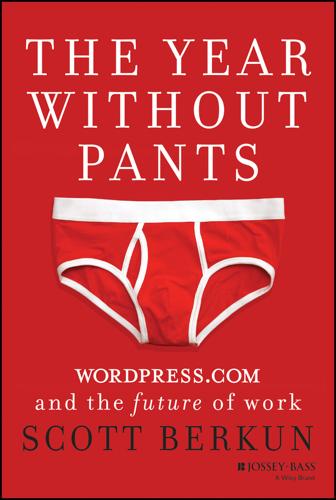
The Year Without Pants: Wordpress.com and the Future of Work
by
Scott Berkun
Published 9 Sep 2013
This powerful idea inspired Mullenweg and gave him a choice. While he had majored in jazz saxophone in high school, he'd also learned to program. His father was an engineer and had encouraged Matt's interests in computers, leading to small projects that Matt did for friends and at school. But these were side projects, fixing issues with software other people had made. He thought maybe he had the skills to do something more ambitious and knew the only way to find out was to try. The copyleft license gave him the freedom to start from where Cafelog had left off. On January 23, 2003, in a post titled, “The Blogging Software Dilemma,” he announced on his website he was going to start a new, unnamed project: My logging software hasn't been updated for months, and the main developer has disappeared, and I can only hope that he's okay.
…
BuddyPress was an entire system, an application layer that fundamentally changed what WordPress could do. It quickly gained in popularity because of this, and soon BuddyPress and Peatling were on Mullenweg's radar. Peatling was asked to join the company to continue working on it full time instead of as a side project. Born in England and living at the time in Vancouver, Canada, Peatling had a glorious combination of good-natured humor and a quiet competitiveness. He had, deep in his heart, a desire to make great things. He had studied multimedia and design in college, and through a work-study program in his third year, he had his first job working on the web.
…
It was the broken window theory gone wrong. I dubbed it NASCAR in reference to how race cars are covered from front to back with logos from different companies, creating a horror show of clashing styles. In what would prove to be one the great underestimations of all time, I asked Beau and Hugo to work on a side project to clean up NASCAR. The design and technical challenges seemed simple, but we were all surprised at how hard the engineering of WordPress made this problem to solve. WordPress excelled at allowing programmers to add new features. If all we wanted to do was add yet another widget to NASCAR, it'd have been easy.

Working in Public: The Making and Maintenance of Open Source Software
by
Nadia Eghbal
Published 3 Aug 2020
,” Stack Overflow Questions, accessed March 2, 2020, https://stackoverflow.com/questions/6344076/differences-between-distribute-distutils-setuptools-and-distutils2. 234 Nick Heath, “Python Is Eating the World: How One Developer’s Side Project Became the Hottest Programming Language on the Planet,” TechRepublic, August 6, 2019, https://www.techrepublic.com/article/python-is-eating-the-world-how-one-developers-side-project-became-the-hottest-programming-language-on-the-planet/. 235 Klint Finley, “GitHub ‘Sponsors’ Now Lets Users Back Open Source Projects,” Wired, May 23, 2019, https://www.wired.com/story/github-sponsors-lets-users-back-open-source-projects/. 236 J.
…
It’s the difference between living in a small town and a big city: in a city, communities easily divide into smaller groups, but in a small town everybody knows everybody else’s business and cares more about who’s spending time with whom. TOYS Toys are projects with low contributor growth and low user growth. They’re probably the least interesting production model to analyze for the purposes of this book, because they are effectively personal projects. Toys are like a side project or a weekend project. Eventually, they might become more widely used, but in their current stage they’re just something that an individual developer enjoys tinkering around with for fun. For example, developer Andrey Petrov made a project called ssh-chat, a client that lets users chat through the Secure Shell (SSH) protocol.

Alone on the Wall: Alex Honnold and the Ultimate Limits of Adventure
by
Alex Honnold
and
David Roberts
Published 2 Nov 2015
But if he dies during a reenactment, then in some way I’d feel that I killed Alex. I’d have to live with that.” Even so, every shoot with Alex took its toll on the filmmakers. In June 2011, to provide footage for the 60 Minutes interview with Alex, Mortimer had agreed to film another free solo in Yosemite. As a side project, the day before the big show, Alex chose to go after the Phoenix, a single 130-foot pitch, but one rated a solid 5.13a. It’s a climb you have to rappel to reach the start, since it hangs over a sheer precipice looming more than 500 feet above the valley floor. Mortimer had misgivings. As he recalls, “I was almost at the point of telling Alex, ‘No more reenactments.’
…
The day before the big show on Sentinel, Alex impulsively goes up to try to solo the Phoenix, the wildly overhanging 5.13a pitch above a drop to the Valley floor of at least 500 feet. Logan claims that he does so to “calm his nerves,” but anyone who knows Alex recognizes that he’s simply impatient and eager for yet another challenge. As he recalls today, “I had been working on the Phoenix as a personal side project. I wanted to wrap it up before we got into full film mode—to do something truly hard for me before spending four or five days posing and filming and interviewing and generally fluffing about.” Only Peter Mortimer goes up to record the Phoenix. Beforehand, on camera, face-to-face with Logan, Alex claims he doesn’t want “a bunch of people” hanging around that short but extreme free solo.
…
But by doing it publicly through the foundation, I’m hoping to inspire others to do the same—or at least to think about the issues more and reflect on their own lifestyles. And in a more self-serving sense, it’s good to have a hobby, particularly as I get older and pure rock climbing becomes less of a dominant force in my life. It’s fun to work on a side project and learn new things. Hand in hand with the critique that climbing is selfish is the claim that climbing is useless. But I think that perfecting your skills on rock (or ice and snow) ends up improving you in other ways. I fully believe that what I’ve learned from climbing translates into other aspects of life.

No Filter: The Inside Story of Instagram
by
Sarah Frier
Published 13 Apr 2020
He did not consider himself a stellar programmer. At Stanford, he felt like a regular person among prodigies from around the world, and barely scraped up a B in his first and only computer science course. Still, he fit the general category of what Zuckerberg needed. He did like photography, and one of his side projects was a website called Photobox, which allowed people to upload large image files and then share or print them, especially after parties at his fraternity, Sigma Nu. Photobox was enough to interest Zuckerberg, who wasn’t exactly picky at this point. Recruiting is always the hardest part of building a startup, and TheFacebook.com was growing so fast that he needed bodies in the room.
…
He was the kind of person who would say that he wasn’t good at something he was actually good at, or that he wasn’t cool enough to do something he was actually cool enough to do, toeing the line between being relatable and humblebragging. For instance, to fit in in Silicon Valley, he would often note his high school nerd credentials—his video gaming and coding side projects—but rarely mentioned that he’d also been the captain of the lacrosse team or that he was in charge of hyping parties for his college fraternity. His frat brothers considered him innovative for using viral video as a means of summoning attendees in the thousands. Systrom’s first such production, in 2004, was called Moonsplash and featured fraternity brothers dancing in off-color costumes to Snoop Dogg’s “Drop It Like It’s Hot.”
…
He was good-natured, levelheaded, always smiling, and a much more experienced engineer than himself. Krieger had straight brown hair just long enough to be floppy, with a clean-shaven oval face and rectangular glasses. Recently, Systrom and Krieger had been running into each other at a San Francisco cafe called Coffee Bar on the weekends, where they were giving each other feedback on side projects and exchanging advice. Krieger was one of the early Burbn testers and liked it because it included visual media, not just status updates. Krieger, like Systrom, had had no idea he’d end up in the startup world. He grew up in Brazil, with occasional stints in Portugal and Argentina, since his father worked for the beverage company Seagram.

The Wikipedia Revolution: How a Bunch of Nobodies Created the World's Greatest Encyclopedia
by
Andrew Lih
Published 5 Jul 2010
He bemoaned the helplessness he felt as the subject of a Wikipedia article that failed to go through the rigorous editorial process he expected as a journalist. Wikipedia’s honeymoon was over. The embarrassment created a cascade of criticism by the traditional media, and many rounds of self-examination within the community. Wikipedia was no longer just a curious side project and a darling of the tech elite. It was in the big leagues now. People depended on it every day. One very wrong entry could overshadow thousands of great ones, and it affected people’s reputations and livelihoods. And because it has become so influential and powerful, Wikipedia has become a target itself.
…
Souren, from the Netherlands, while on mission in Mali, helped establish Wikipedia in the Bambara language, only spoken by 6 million people in the country. Souren wrote in his report to an open source conference about his experiences: The Wikipedias in Bambara, Peul and Wolof were started in the beginning of 2005. The interface of the Bambara and Peul Wikipedias was partly translated and some articles had been written as part of a side project of a Geekcorps Mali volunteer, in which people were given one dollar for every article placed on-line (with total expenses less than $100). After 2005 there was only sparse activity, and in December 2007 there are respectively 142 and 28 articles. Not much happened to the version in Wolof until 2006, when many tiny articles with no real content were added to the Wolof Wikipedia.
…
But the pace at which it was going made the former Wikipedian feel like it was moving in slow motion. Sanger imagined being able to use some of Wikipedia’s open content principles to help Digital Universe push forward, but he did not find much support. In 2006 he started to contemplate other side projects. This culminated in September 2006, at the Wizards of OS conference, where he was invited to speak. He announced to the crowd the start of a project to be called Citizendium, which would be a fork of Wikipedia. He wanted to address some of the flaws he perceived in the Wikipedia model, most notably by eliminating anonymous editing, requiring the use of real names, and installing a layer of experts with extra authority.

Bitcoin Billionaires: A True Story of Genius, Betrayal, and Redemption
by
Ben Mezrich
Published 20 May 2019
They weren’t just part of his team, they were his friends, which these days to Charlie meant they were pretty much the only family he had. They were also both growing, just like he was. Voorhees was becoming as big of a name in Bitcoin as Charlie. Even though he ran BitInstant’s marketing, he was also working on a side project called SatoshiDice, a Bitcoin gambling website that was rapidly becoming a major draw in the Bitcoin community. The idea behind the game was simple: players sent bitcoin to an address that was either a winner or a loser. If “lucky,” they’d receive a multiple of the bitcoin they had wagered. If “unlucky,” they’d receive only a fraction.
…
Although Tyler and Cameron had previously discussed the possibility of losing Voorhees and Ira if they weren’t willing to join BitInstant full-time, he didn’t expect that to come to a head right here, right now, during this meeting. On the other hand, it made sense. Voorhees never had both feet in to begin with, and these days he had good reason to have both feet out. He was smart, maybe too smart to be a marketing guy working for Charlie Shrem. But more importantly, his side project, SatoshiDice, was already gaining so much traction in the Bitcoin community that it represented a meaningful percentage of overall Bitcoin transactions. It didn’t make sense for him to stick around as an employee when he was already the founder of his own fast-growing startup. “Nobody needs to leave,” Charlie sputtered, clearly dismayed by the turn of events.
…
Sure, maybe he hadn’t been the best soldier. Though he’d tried to put on a good face after the resignations of Voorhees and Ira, the loss of his brain trust had knocked the wind out of him. He knew that his friends had done fine since they’d left. Voorhees was eclipsing all of them; he’d recently sold his side project, SatoshiDice, for a whopping 126,315 bitcoin, which at the time of the sale, was valued at around eleven and a half million dollars. But without Voorhees and Ira, BitInstant hadn’t felt like home. Even Ver seemed to have moved his focus to other investments, and Charlie couldn’t really blame him.
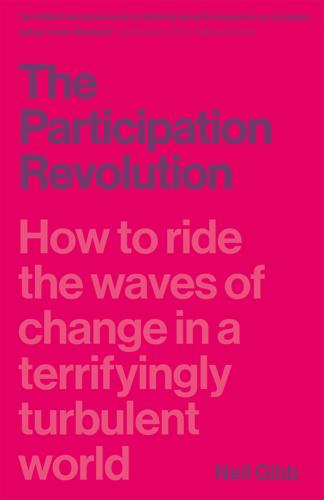
The Participation Revolution: How to Ride the Waves of Change in a Terrifyingly Turbulent World
by
Neil Gibb
Published 15 Feb 2018
It is why the East India Company, a mighty pan-national institution that once ran more than half the world’s trade, went bust in just a few decades. It is what underpinned the global financial crisis. It is why many of today’s corporations won’t exist in 10 years’ time. Kodak had massive resources and, in theory, a deep insight into its global market. It should have been able to knock out something like Instagram as a side project. With its size and resources, it would have been a piffling investment. The reason it didn’t, though, was because it had become obsessed with what it did rather than why it did it. It had become preoccupied with getting people to consume more of its products rather than why they actually wanted to take photographs.
…
It evolved very differently from large studio products, in a way that is now becoming familiar to us – by an enthusiast at the centre of a small vibrant community of like-minded people. What is more, it was created with virtually no funding. In 2009, Markus Persson, or “Notch” as he is known in the developer community, was working as a software developer in Stockholm. Minecraft started life as a side project he did in his spare time. Software development is pretty taxing on the brain, and Notch was also active on many online communities, so Minecraft had to be fitted in with a lot of other things. Its humble beginnings account for some of its simplicity. Notch was a software developer, not a designer, and he didn’t have a creative department to fall back on.
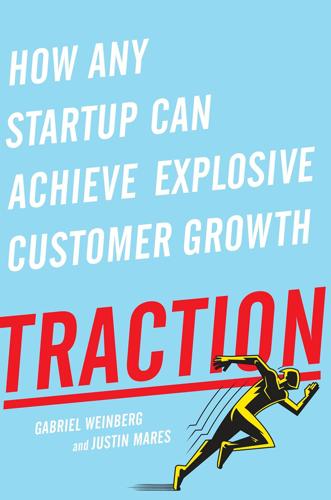
Traction: How Any Startup Can Achieve Explosive Customer Growth
by
Gabriel Weinberg
and
Justin Mares
Published 5 Oct 2015
A few months later my wife and I moved from our 865-square-foot apartment near Boston to a country house twenty-five miles outside of Philadelphia. I had just turned twenty-seven. She went to her job and I sat at home doing nothing for the first time in my life. We knew no one for a hundred miles in any direction. Naturally, I started tinkering on the computer again, starting about a dozen side projects simultaneously. A year and a half later, I thought I was on to something. I noticed two things that bothered me about Google: too much spam (all those sites with nothing but ads) and not enough instant answers (I kept going to Wikipedia and IMDb). I thought if I could easily pick out the spam and the answers, then I’d have a more compelling search engine.
…
Tom Preston-Werner, founder of popular code hosting site GitHub, points out that open-sourcing code generates free advertising and a lot of goodwill. GitHub is beloved by developers everywhere because it allows anyone working on an open source project to use GitHub free of charge. This drove a lot of its early adoption: when a developer wanted to work on a side project, GitHub was the first place that came to mind. Another use of community is for hiring. Everyone working at Gabriel’s startup DuckDuckGo was a member of the DuckDuckGo community first. Hires that come from your community already buy into your mission. These are people you really want on your team—community members who didn’t just believe in your mission, but also took the initiative to help you achieve it.
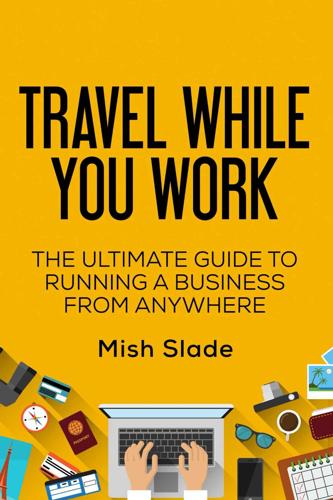
Travel While You Work: The Ultimate Guide to Running a Business From Anywhere
by
Mish Slade
Published 13 Aug 2015
We have two sweet dogs who we miss while travelling so we're currently setting up our home base back in Austin, TX and plan to focus on North American destinations the next few years with six-week overseas trips every so often. I love challenging, new things so I typically have one main gig going and then a few side projects. One of the side projects inevitably flourishes and ends up becoming my main gig and that runs on about a two-year cycle, which always keeps me engaged and learning new things. What did you do before you became a digital nomad? (Did you do the same sort of work, or something entirely different?) I was working as a writer for an MBA program in entrepreneurship and ended up managing the technical development team that built out an online delivery platform for the MBA school.

The Open Organization: Igniting Passion and Performance
by
Jim Whitehurst
Published 1 Jun 2015
One of its best-known, though now defunct, programs was one in which all Google employees were encouraged to spend 20 percent of their time on just about anything they wanted to. The idea, of course, is that by empowering employees to pursue projects and ideas they are passionate about beyond the day-to-day duties of their real job, breakthrough innovation will follow. The company can even tout how, before it ended the program, successful side projects like Google Suggest, AdSense for Content, and Orkut all emerged from these 20 percent efforts—an impressive list, to be sure.9 I applaud Google for taking such a far-reaching approach. Given Google’s phenomenal track record of innovation, it’s no surprise that companies of all shapes and sizes have tried to duplicate this model in attempts to drive innovation throughout their organizations.
…
Rather, when deciding how to allocate resources for trying new things, we promote the idea that different people have earned different degrees of latitude to spend their time innovating. Many people frankly get little or none, while others, at the extreme, may get 100 percent of their time free to innovate. The most typical way is when someone works on a side project (maybe on Red Hat’s time because they’ve been able to show their managers the value, or maybe on their own time until its value is evident), but later grows it into a full-time gig. We encourage this kind of approach for a specific reason: we want the people who have proven to be great innovators to spend all of their time innovating, not just 20 percent of it.

Hacker, Hoaxer, Whistleblower, Spy: The Story of Anonymous
by
Gabriella Coleman
Published 4 Nov 2014
I attended protests and followed discussions on web forums and on Internet Relay Chat (IRC)—one of the most important communication applications for Anonymous (and many other geeks and hackers). In 2011, as Anonymous grew more tentacles and activists initiated dozens of political operations, my side project became my life. For over two years I was constantly jacked in, online for a minimum of five hours a day, struggling to keep abreast of all the simultaneous operations, some of them hidden from my view due to their clandestine nature. Researching Anonymous felt like following a thread through a dark and twisty path strewn with rumors, lies, secrets, and the ghoulish reality of spies and informants.
…
He wrote that this was what Anonymous was about, not “awesome speeches or fabulous community.” Just as support for Radwaddie’s position seemed poised to reach a consensus, someone named “lark” entered the room with a surprising nugget of information: “the [initial] attack on the paypal blog was one of our own as a side project.” So, in fact, the very first DDoS hit, which everyone thought was instigated by an unaffiliated Anon, happened to be carried out by one of their own. I guess he had just gone about his business quietly, since AnonOps at the time was primarily focused on supporting file sharing. But despite this revelation, it seemed that the momentum could not be stopped.
…
Its beginnings can be traced to a Killam Postdoctoral Research Fellowship I held at the University of Alberta in 2006–2007, and a fortunate introduction to Dr. Stephen Kent, who, in his work as professor of sociology, curates the largest academic Scientology archive in the world. In the midst of a frighteningly frigid winter, I dove into the archive with the hopes of emerging with a short historical side project describing a case known among geeks as “the Internet vs. the Church of Scientology.” Being more accustomed to interviewing people than making sense of heaps of (in this case, very strange) documents, Kent thankfully and graciously walked me through the confusing, fascinating, and at times disturbing innards of an organization so many geeks love to loathe.

Machines of Loving Grace: The Quest for Common Ground Between Humans and Robots
by
John Markoff
Published 24 Aug 2015
Google felt secure in its Web search monopoly so, with a profit stream that by the end of 2013 was more than $1 billion a month, the search company funded ambitious R & D projects that might have nothing to do with the company’s core business. Google was famous for its 70-20-10 rule, which gave its engineers free time to pursue their own side projects. Employees are supposed to spend 10 percent of their time on projects entirely unrelated to the company’s core business. Its founders Sergey Brin and Larry Page believed deeply in thinking big. They called their efforts “moon shots”: not pure science, but research projects that were hopefully destined to have commercial rather than purely scientific impact.
…
The teams listened politely because they were interested in the next round of money, and they would deliver software, but they all wanted to pursue their own projects. In the end there was no way that a large and bureaucratic program could have a direct impact in the real world. To cope with his frustrations he laid out a series of side projects to work on in 2007. They ranged from efforts to commercialize the CALO technology to the creation, with several friends, of an activists’ social network called change.org. It would be a remarkably productive year for Cheyer. With a graduate student, Didier Guzzoni, he used CALO technologies to build a new software development system that eventually became the foundation for Siri.
…
He also quietly helped to cofound Genetic Finance, a stealth machine-learning company that built a cluster of more than one million computers to solve financial problems such as predicting the stock market. In the midst of all of this, Cheyer approached SRI management to ask for some IR & D funding and told them, “I want a little side project where I’m going to build my own CALO the way it should be done.” He wanted to build a single integrated system, not a patchwork quilt from dozens of different organizations. SRI agreed, and he named his project “Active Ontologies.” He ran it quietly alongside the much larger operation. The project gained more traction when a key group of SRI technical leaders met for a daylong retreat in Half Moon Bay, a beach town close to the Menlo Park laboratory.
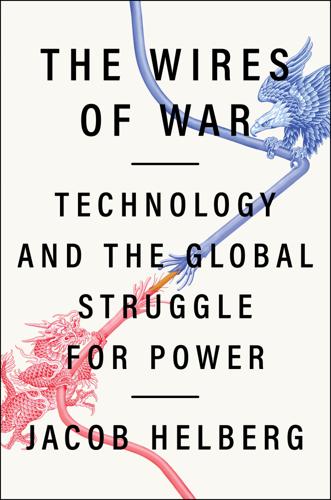
The Wires of War: Technology and the Global Struggle for Power
by
Jacob Helberg
Published 11 Oct 2021
Cicilline.” 56 Andy Greenberg, “The Senate’s Draft Encryption Bill Is ‘Ludicrous, Dangerous, Technically Illiterate,’ ” Wired, April 8, 2016, https://www.wired.com/2016/04/senates-draft-encryption-bill-privacy-nightmare/. 57 Kim Zetter, “Of Course Congress Is Clueless about Tech—It Killed Its Tutor,” Wired, April 21, 2016, https://www.wired.com/2016/04/office-technology-assessment-congress-clueless-tech-killed-tutor/. 58 “FAQ,” Thiel Fellowship, https://www.thielfellowship.org/faq/. 59 “Organization and Management of the Department of Defense,” Directorate for Organizational Policy, March 2019, https://fas.org/irp/agency/dod/org-man.pdf. 60 Melissa Mittelman, “Why GitHub Finally Abandoned Its Bossless Workplace,” Bloomberg, September 6, 2016, https://www.bloomberg.com/news/articles/2016-09-06/why-github-finally-abandoned-its-bossless-workplace. 61 Christo Petrov, “50 Gmail Statistics to Show How Big It Is in 2020,” TechJury, March 19, 2021, https://techjury.net/blog/gmail-statistics/#gref. 62 Adam Robinson, “Want to Boost Your Bottom Line? Encourage Your Employees to Work on Side Projects,” Inc., March 12, 2018, https://www.inc.com/adam-robinson/google-employees-dedicate-20-percent-of-their-time-to-side-projects-heres-how-it-works.html. 63 Letter from employees to Google CEO Sundar Pichai, April 2018, New York Times, https://static01.nyt.com/files/2018/technology/googleletter.pdf; Daisuke Wakabayashi and Scott Shane, “Google Will Not Renew Pentagon Contract That Upset Employees,” New York Times, June 1, 2018, https://www.nytimes.com/2018/06/01/technology/google-pentagon-project-maven.html. 64 Wakabayashi and Shane, “Google Will Not Renew Pentagon Contract That Upset Employees.” 65 Letter from employees to Google CEO Sundar Pichai. 66 Kate Conger, “Google Plans Not to Renew Its Contract for Project Maven, a Controversial Pentagon Drone AI Imaging Program,” Gizmodo, June 1, 2018, https://gizmodo.com/google-plans-not-to-renew-its-contract-for-project-mave-1826488620?
…
Tech employees simply work when they want, where they want—in the middle of the night, in sensory-deprivation coding booths, on the beach. Office climbing gyms and gourmet kitchens proliferate. Until 2013, Google famously encouraged employees to spend 20 percent of their time “working on what they think will most benefit Google.” (Notably, Gmail—which now counts 1.8 billion active users around the globe61—originated as a side project, as did successful companies like Twitter and Slack.)62 Suffice it to say that few start-ups are consulting charts labeled “DoD PAS1 Officials by EX Level” to figure out who they report to or what they should do with their time. This permissive and freewheeling culture has its drawbacks. In those large and collaborative meetings, too often the focus is on the next quarter and not the next quarter century.
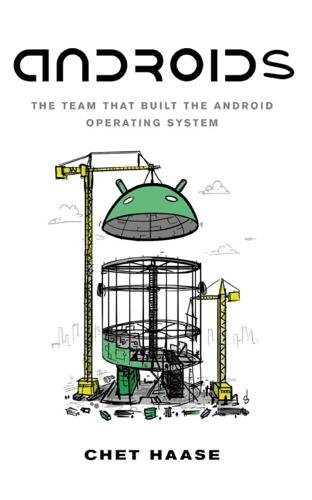
Androids: The Team That Built the Android Operating System
by
Chet Haase
Published 12 Aug 2021
For example, Android needed to figure out a story for the Calendar app, and how to sync with Google’s calendar services. Meanwhile, Debajit had been working on a side project, synchronizing calendar information to J2ME devices. He was still interested in how to get information to people on the go, and calendar data was an important part of that problem. In talking to the Android team, he realized that, by joining them, he could make his side project his full time job. So he transferred to Android, joining the now three-person team working on Google services. Each engineer on the team worked on services for specific applications.
…
By the time Android 1.1 launched, in February of 2009, Market had the ability to sell applications (and developers had the ability to make money from their Android apps). Market was one of the attractions of Android in the early days. It was easy to upload an application to the store and make it available to the growing set of Android users. Dan Lew, an external Android developer working on travel apps at the time, said, “I worked on a bunch of silly side project apps. Android was a good place for that because putting up a nearly pointless app on the Play Store is relatively painless.” But Market was more than a convenience for developers and for users; it helped create a world of apps that made Android a powerful ecosystem that went way beyond the phones people bought and the operating system running on those phones.

Show Your Work!: 10 Ways to Share Your Creativity and Get Discovered
by
Austin Kleon
Published 6 Mar 2014
Imagine if your next boss didn’t have to read your résumé because he already reads your blog. Imagine being a student and getting your first gig based on a school project you posted online. Imagine losing your job but having a social network of people familiar with your work and ready to help you find a new one. Imagine turning a side project or a hobby into your profession because you had a following that could support you. Or imagine something simpler and just as satisfying: spending the majority of your time, energy, and attention practicing a craft, learning a trade, or running a business, while also allowing for the possibility that your work might attract a group of people who share your interests.

Makers
by
Chris Anderson
Published 1 Oct 2012
By day, they make spaceships; by night, they apply their skills to their more personal dream machines. The path from hobby to industry that created Scaled in the first place remains central to its culture; scratch any Scaled engineer and you’ll find a hobbyist; walk just a hundred yards from their factory and you’ll find their garages. Hobby side projects are how Scaled engineers typically advance. To become an aircraft project leader, you must have proven the ability to run an aircraft project. How do you do this the first time? By doing it yourself. Scaled engineers win the respect of their peers with their homebrew builds; constructing and flying a machine of your own design counts for more than any academic degree in winning the trust and confidence of your peers.
…
Most of all, Rutan wanted to design groundbreaking aircraft, not feed the endless demands of the kit business. Today Scaled Composites is owned by Northrop Grumman. For every high-profile design like SpaceShipOne, there is a cruise missile prototype or stealthy drone for the defense industry. The DIY roots are still there in all the side projects of the Scaled engineers in their personal hangars along the flight line at the Mojave airport. But the company itself is a high-security operation. Rutan’s career is an object lesson in both the potential and the limits of the Maker Movement. He used the democratized technology of composites to bring advanced aerospace concepts to amateurs.

The Secret Club That Runs the World: Inside the Fraternity of Commodity Traders
by
Kate Kelly
Published 2 Jun 2014
Maybe he’d even hire a feng shui expert, he mused, to advise him on the décor in hopes of bringing better luck. A fish tank was supposed to help, he’d heard. (Glencore’s office building in Mayfair had two.) He planned to bring his chief financial officer, risk manager, and investor-relations head along with him. As he mulled his next steps, Andurand kept busy with side projects. He had a mixed track record outside of trading. He’d lost $3 million on a friend’s movie project about a ballroom love story. The $13 million investment he’d made in a yet-to-be-developed French ski resort had languished. And he spent $20 million building a high-end resort in Koh Samui, an island in the Gulf of Thailand.
…
Ruggles tried to negotiate deals to sell the Trainer product to competing airlines, but was undercut by colleagues. Meanwhile, an aviation-publication poll revealed that many jet-fuel market participants doubted whether Delta would achieve the desired annual cost savings or set a precedent that other airlines might follow. Despite the troubles at work, side projects kept Ruggles busy. Ivonne was negotiating to buy a cosmetics manufacturer in northern New Jersey, so the two were searching for a home in Montclair, not far from the business she planned to help run. They had flown up to New York to catch a day of the U.S. Open annual tennis tournament, using seats provided by one of Delta’s brokers, and made a family trip of the Las Vegas speech.
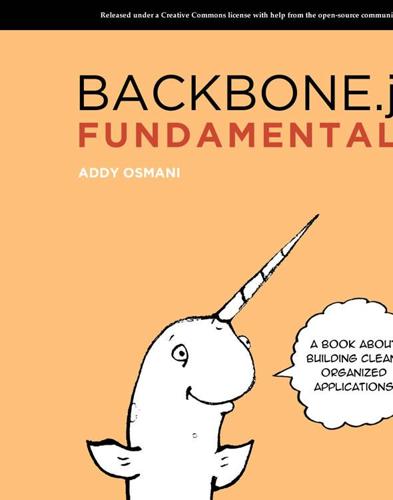
Developing Backbone.js Applications
by
Addy Osmani
Published 21 Jul 2012
If you want to stick it on your model, you can also make it a class function: User.validate = function(formElement) { //... }; For more information on validation plugins available for Backbone, see the Backbone wiki. Avoiding Conflicts With Multiple Backbone Versions Problem In instances out of your control, you may have to work around having more than one version of Backbone in the same page. How do you work around this without causing conflicts? Solution Like most client-side projects, Backbone’s code is wrapped in an immediately-invoked function expression: (function(){ // Backbone.js }).call(this); Several things happen during this configuration stage. A Backbone namespace is created, and multiple versions of Backbone on the same page are supported through the noConflict mode: var root = this; var previousBackbone = root.Backbone; Backbone.noConflict = function() { root.Backbone = previousBackbone; return this; }; Multiple versions of Backbone can be used on the same page by calling noConflict like this: var Backbone19 = Backbone.noConflict(); // Backbone19 refers to the most recently loaded version, // and `window.Backbone` will be restored to the previously // loaded version Building Model And View Hierarchies Problem How does inheritance work with Backbone?
…
Similar to exercise 1, the application will allow us to add new todos, edit new todos and clear todo items that have been marked as completed. For a more advanced practical, see the section on mobile Backbone development. The complete code for the application can can be found in the practicals/modular-todo-app folder of this repo (thanks to Thomas Davis and Jérôme Gravel-Niquet). Alternatively grab a copy of my side-project TodoMVC which contains the sources to both AMD and non-AMD versions. Overview Writing a modular Backbone application can be a straight-forward process. There are however, some key conceptual differences to be aware of if opting to use AMD as your module format of choice: As AMD isn’t a standard native to JavaScript or the browser, it’s necessary to use a script loader (such as RequireJS or curl.js) in order to support defining components and modules using this module format.
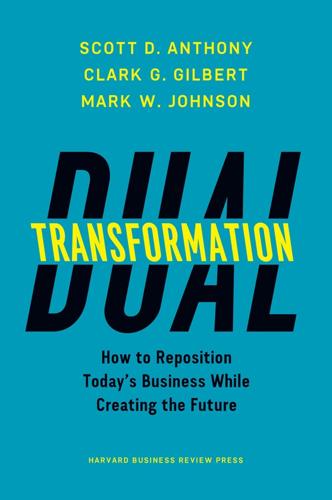
Dual Transformation: How to Reposition Today's Business While Creating the Future
by
Scott D. Anthony
and
Mark W. Johnson
Published 27 Mar 2017
What if, they wondered, we created a way for people to update their status? And we intentionally constrained their postings to no more than 140 characters? Yes, Twitter emerged as a side project from a company going down the drain. Odeo’s original investors, including Charles River Ventures, had the opportunity to invest in this new idea but passed, because its commercial potential was unclear. As of the writing of this book, Twitter has 300 million active users and is worth more than $10 billion. A perfectly predictable company shuts down side projects. Or consider the story of UK-92480. Pfizer was exploring the sexily named drug about twenty years ago. Pfizer hoped it would lower blood pressure in patients.
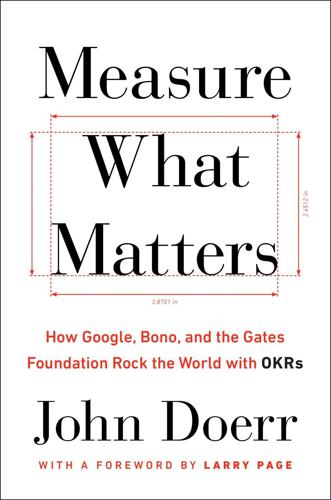
Measure What Matters: How Google, Bono, and the Gates Foundation Rock the World With OKRs
by
John Doerr
Published 23 Apr 2018
OKRs are the scaffolding for Google’s signature home runs, including seven products with a billion or more users apiece: Search, Chrome, Android, Maps, YouTube, Google Play, and Gmail. In 2008, a company-wide OKR rallied all hands around the Code Yellow battle against latency—Google’s bête noire, the lag in retrieving data from the cloud. Bottom-up OKRs work hand in glove with “20 percent time,” which frees grassroots engineers to dive into promising side projects. Many companies have a “rule of seven,” limiting managers to a maximum of seven direct reports. In some cases, Google has flipped the rule to a minimum of seven. ( When Jonathan Rosenberg headed Google’s product team, he had as many as twenty.) The higher the ratio of reports, the flatter the org chart—which means less top-down oversight, greater frontline autonomy, and more fertile soil for the next breakthrough.
…
We have a market-based approach, where over time our goals all converge because the top OKRs are known and everyone else’s OKRs are visible. Teams that are grossly out of alignment stand out, and the few major initiatives that touch everyone are easy enough to manage directly. The antithesis of cascading might be Google’s “20 percent time,” which frees engineers to work on side projects for the equivalent of one day per week. By liberating some of the sharpest minds in captivity, Google has changed the world as we know it. In 2001, the young Paul Buchheit initiated a 20 percent project with the code name Caribou . It’s now known as Gmail, the world’s leading web-based email service.
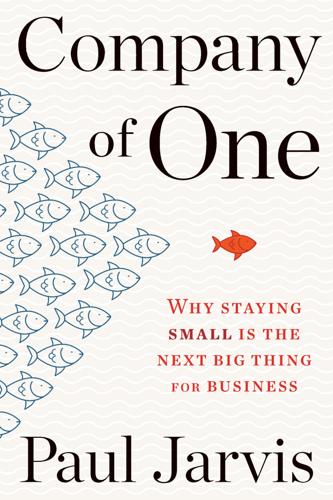
Company of One: Why Staying Small Is the Next Big Thing for Business
by
Paul Jarvis
Published 1 Jan 2019
As a society, we’re gradually starting to view “work” not as a single place of employment, but as a series of engagements or projects. The millennial generation in particular views the traditional aspiration to a corporate job in an office as something like a satirical sitcom, à la The Office, than something they wish to strive for. With a stable of side project clients and a vast network of contacts in hand, Kaitlin left her agency job and started to freelance full-time. When she started, she first worked at leveling up her skill set before focusing on becoming more autonomous. Since going solo, she’s had a steady waiting list, regularly has to turn down projects that are a fit for her values, and has worked with some large companies like Beats by Dre, Taco Bell, Adobe, and Toms.
…
Another factor related to money is how you spend your time. Every day you spend developing a product is a day you aren’t really making money from it, unless you’ve done preorders or crowdfunding. How can you get an initial version of your product to market quickly to start building revenue? Money is why a lot of companies of one begin as side projects: their path to MVPr in order to cover the founder’s expenses can take a bit of time. I offset my own living expenses at first by living at home with my parents (hey, I was only nineteen), and then by taking a few years to slowly transition fully from services to products—and not until the products were routinely making more than what I was charging for services.
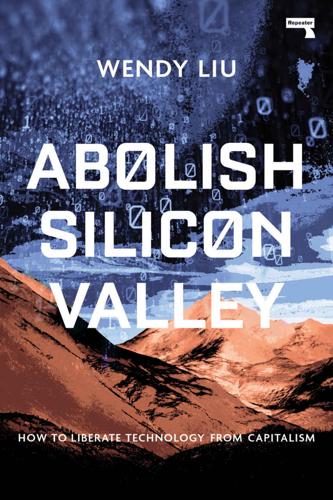
Abolish Silicon Valley: How to Liberate Technology From Capitalism
by
Wendy Liu
Published 22 Mar 2020
That wasn’t something I would want to talk about except with the most hardcore free software advocates, few of whom I knew personally. One thing that had bothered me during my internship was being discouraged from working on open source projects except with permission from Google’s lawyers. Alarmed, I had asked my manager for advice, because I had planned to work on side projects during the summer; he had told me not to worry, and it had turned out fine, but I didn’t like the principle. If I decided to go back to a full-time role, all my work would be driven by Google’s needs, and would become Google’s intellectual property. Even if Google did choose to release any of my work under an open license, it would be on Google’s terms, not mine.
…
You had to keep headcount low to appease Wall Street analysts carefully watching the profit-per-head figures, even if that meant overworked employees, impossible deadlines, and an army of frustrated contract workers lured in by the stillborn promise of a permanent role. You had to protect your business interests, too. Get your software engineers to sign over all their intellectual property, even if it was developed outside the company, because otherwise an employee’s side project might threaten your market dominance. This pile of ripe customer data? Don’t waste it — find a way to monetise it, through advertising or flat-out selling it. The US military offered a contract that ensured your employees — many of them not even American — would be helping to fuel America’s war machine?
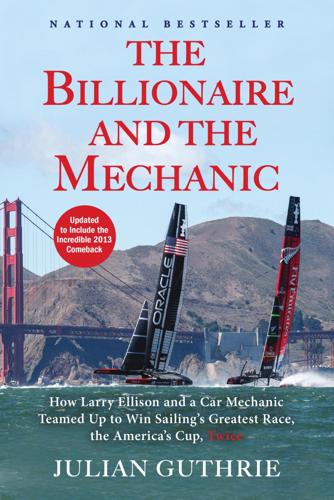
The Billionaire and the Mechanic: How Larry Ellison and a Car Mechanic Teamed Up to Win Sailing's Greatest Race, the Americas Cup, Twice
by
Julian Guthrie
Published 31 Mar 2014
There was also talk of building a new boat from scratch, and using USA-17 for practice. The most titillating talk, though, centered on the building of a certain type of sail, the size of which had never been seen before. The secretive project, code-named “Kopis” after a Greek sword with a forward-facing blade, was started as a side project in December 2008 and was now nearing completion. • • • In November, Jimmy Spithill drove USA-17 in a practice session off the San Diego coast. He and the crew, flying through the choppy waters at twenty-five knots, were trying different configurations of the mast and had moved it slightly forward.
…
Larry went on, “I know that most people think trying to build a hard wing of this size is crazy. But that’s the beauty of the idea. The other side isn’t trying to build one.” And, savoring his words, he added, “So we’ll have a wing, and they won’t.” While most of the sailors and builders had dismissed the wing as an experimental side project, Jimmy was an early champion of the rigid sail. He had told Larry that he believed the wing would give them an advantage in a range of conditions. Jimmy had been out sailing in a new C-class wing-sailed catamaran, owned by the Canadian sailor Fred Eaton, who had been teaching him the ropes of the two-person cat.
…
He asked Scott Ferguson, a designer on board, whether he could fly a hull—push the boat hard enough to raise a pontoon out of the water—and accelerate USA-17 to a much higher speed. “Now is as good a time as any,” Ferguson said, holding his breath. As the boat outperformed anyone’s expectations, Ferguson had tears in his eyes. Ozanne and Drummond watched in awe as their experimental side project became the main event. Larry had been told to get to San Diego as soon as possible, so he could see the wing sail. As he approached Lindberg Field, near the San Diego harbor, he banked his CJ4 twin jet over the harbor and looked down. That’s when he saw the winged trimaran—taller than most buildings in the San Diego skyline—for the first time.
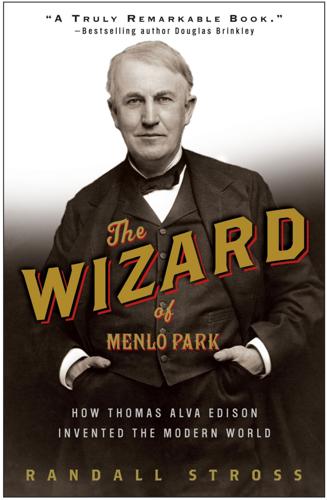
The Wizard of Menlo Park: How Thomas Alva Edison Invented the Modern World
by
Randall E. Stross
Published 13 Mar 2007
The result was that Menlo Park became a place known far and wide around the world, and so closely was the place name associated with Edison’s laboratory that it entered the nation’s consciousness and stayed, even though Edison himself would live and work there only three more years, and would spend more than four decades at another location in New Jersey. The more that Edison spoke with reporters about his ideas and plans, the more giddy he became. He was untroubled by doubt that he might lack the time and resources to accomplish all of the side projects that he mentioned, seriously or casually. Readers learned that he not only had invented a new painkiller cocktail, but also had invented a hearing aid for his own use. His “telephonoscope” was supposedly inconspicuous, yet enabled Edison to hear “a cow chew a quarter of a mile off.” When letters came pouring in, imploring him to commercialize the invention, he announced that he had assigned two of his assistants to work on tests, and was confident he would have a hearing aid on the market within months.
…
Whether it was for a banquet in the city or supper at home, it was difficult to extract Edison from the lab. As the months passed following the phonograph’s first public exhibitions in early 1878 and he failed to produce a production model, Edison remained maddeningly blasé. He puttered and procrastinated, his attention flitting from one side project to the next. The “telescopophon” was one of the distractions that held his attention, but not long enough, it would turn out, for it to ever reach commercial release. This was a giant megaphone that performed marvelously when used as a pair, one for speaking, the other for listening, placed a mile apart on hilltops.
…
In 1913, two years after the debut of the projector, all owners received a letter from the company imploring them to send in any “idle films” for exchanges. The venture languished. No critic at the time apparently commented on the outlandishness of Edison’s carelessly announced ambition to radically remake American education—and in his spare time. The side projects multiplied, each initial announcement bringing reporters running and forcing Edison to dilute his attention. When he plunged into a campaign, no subordinate would have any grounds to tease him for working less hard than anyone else. When a business colleague in 1912 wrote him and casually asked how he was feeling, Edison replied, “Well, I worked 122 hours in six days last week, hence I must feel fine—and do.”

Know Thyself
by
Stephen M Fleming
Published 27 Apr 2021
When I was starting my PhD in cognitive neuroscience at UCL in 2006, brain imaging studies such as those we encountered in the previous chapter were beginning to provide clear hints about the neural basis of self-awareness. What was lacking, however, were the tools needed to precisely quantify metacognition in the lab. In the first part of my PhD, I dabbled in developing these tools as a side project, while spending the majority of my time learning how to run and analyze brain imaging experiments. It wasn’t until my final year that a chance discussion made me realize that we could combine neuroscience with this toolkit for studying self-awareness. On a sunny July day in 2008, I had lunch in Queen Square with Rimona Weil, a neurologist working on her PhD in Geraint Rees’s group at our Centre.
…
On a sunny July day in 2008, I had lunch in Queen Square with Rimona Weil, a neurologist working on her PhD in Geraint Rees’s group at our Centre. She told me how she and Geraint were interested in what made individuals different from one another, and whether such differences were related to measurable differences in brain structure and function. In return, I mentioned my side project on metacognition—and almost simultaneously we realized we could join forces and ask what it is about the brain that made one person’s metacognition better than another’s. I was unaware then that this one project would shape the next decade of my life. Rimona and I set out to relate individual differences in people’s metacognition to subtle differences in their brain structure, as a first attempt to zero in on brain networks that might be responsible for metacognitive ability.

Other Pandemic: How QAnon Contaminated the World
by
James Ball
Published 19 Jul 2023
Whenever you entered an Anonymous discussion thread or chat channel,21 Biella (as she was known) would be there, tolerated as a constant presence by the Anons, like some cool aunt of the collective. Coleman engaged in years of research into Anonymous, culminating in the book Hacker, Hoaxer, Whistleblower, Spy: The Many Faces of Anonymous (dedicated to ‘the legions behind Anonymous’), but it was the Scientology adventure that first piqued her interest. She had been running a ‘little side project’ at the University of Alberta which had focused on the history of geek hackers fighting Scientology throughout the 1990s. ‘And I was very secretive about it, because, you know, Scientology would go after …’ she trailed off, referencing the Church’s notorious policy of retaliating against its critics in dramatic ways.22 When Anonymous decided to take on Scientology again in 2008, to Coleman this felt like history repeating itself – ‘it’s happening again’ – and she was one of the few people with knowledge of the history of the two cultures.
…
The player is presented with information about their current status as a twenty-something with clinical depression, and given multiple options for what to do next. It is, to be honest, not all that much fun to play, but it does serve as an effective, if somewhat earnest, interactive explainer of what it is like to live with depression, for someone who has never experienced the condition. It is hard to think of an indie side-project that could be more innocuous and well-meaning than this one – and yet it inadvertently set into motion a chain of events that birthed some of the most toxic political movements of the last few decades. The backlash against this game evolved into a backlash against modern, liberal games coverage more broadly.
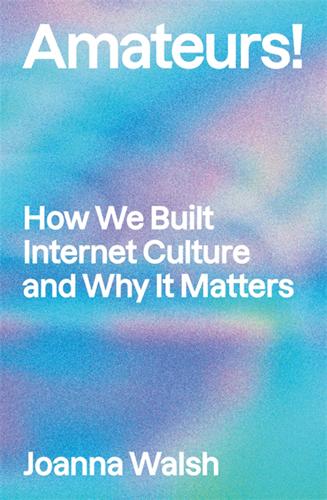
Amateurs!: How We Built Internet Culture and Why It Matters
by
Joanna Walsh
Published 22 Sep 2025
One networked coincidence or not, Huh, the owner of Cheezburger, also owns Know Your Meme, the site that more or less codified amateur internet aesthetics. (Interestingly, Know Your Meme was started with the aim of tracing memes and crediting their originators, 35and though it eventually became monetised/professional, as with Cheezburger, its creators initially worked on the site as a side project.) Again, Huh was not the originator of the site, but acquired it in 2011. At first named ‘the Rocketboom Entity for Internet Studies’, whose title riffs on offline structures of knowledge-wrangling, it created ‘interest’ by using the serious form of the meatspace encyclopaedia to define ‘trivial’ online content.
…
LAION uses a predicted ‘aesthetic score’ based on alt, or descriptive, text (words again), largely added by amateurs, as a machine can’t evaluate an image, but does get ekphrasis. I can’t find what criteria LAION uses to rank images aesthetically, but the most detailed information comes from technologists Andy Baio and Simon Willison’s 2022 pro bono side project, a searchable version of LAION’s dataset. Their screenshots of images with the highest aesthetic score show unadventurous works by non-famous artists, mostly watercolour landscapes and portraits of young white women – girls, with or without pearls. What makes these decisions? Or who? There’s a human preselect, as many of the images come from blogs as well as from amateur curation sites including Pinterest, Flickr and Tumblr, where images are often drawn from commercial media and tend to have an aspirational lifestyle function.

I'm Feeling Lucky: The Confessions of Google Employee Number 59
by
Douglas Edwards
Published 11 Jul 2011
Paul had put together a prototype not specifically called for by his project, just because he found it interesting. He admitted to being easily distracted and had gone off on tangents before, but usually his manager reeled him in. When he added a primitive spell checker to the product search he was building, Urs admonished him for having too many side projects and asked him to stay focused. That attitude changed after he developed the content-targeting prototype. Not just for Paul, but for the company. "I feel like the concept of twenty-percent time came out of that," Paul told me. "I don't think it was ever specifically stated, but it was more officially endorsed after that."
…
"Twenty-percent time" was a mandate that all those in engineering spend one day a week thinking about something other than their assigned projects. Ad targeting in email had not been assigned to anyone, and most who heard about it vehemently opposed it. Paul built it anyway, and the company's thinking shifted overnight. Other engineers had also done side projects that looked promising, like Krishna's Google news service. Larry and Sergey wanted to encourage that kind of behavior. At first, Paul observed, APMs ambitiously tried to organize the twenty-percent time so it wouldn't be a wasted resource. "That was completely the wrong mindset," he said later.
…
My squabbles with Marissa over user-interface issues had ebbed and flowed, with the launch of Google news in September 2002 bringing both high points and lows. Marissa took particular pride in Google news, which automatically scanned thousands of news sources and extracted the ones that seemed most important. Krishna Bharat had started it as a side project, and after 9/11 had worked on it in earnest. Marissa made sure that Google news, like a favored child, moved to the front of the line for whatever goodies the company doled out. One of those was positioning as a tab right above the search box on the Google.com homepage. When the UI team questioned why we hadn't met to discuss such a major change, Marissa asserted it had always been planned that way.
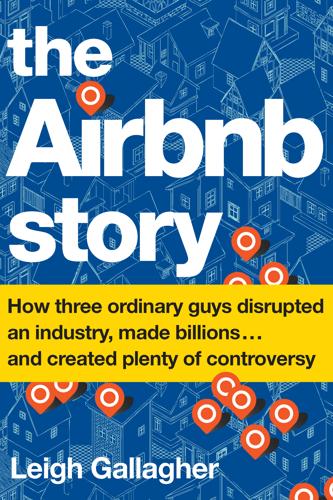
The Airbnb Story: How Three Ordinary Guys Disrupted an Industry, Made Billions...and Created Plenty of Controversy
by
Leigh Gallagher
Published 14 Feb 2017
But they knew they needed to convince Blecharczyk; they couldn’t do it without him. They called him up and said they had something they were really excited about and asked him to dinner, where they pitched the idea to him. He was reluctant. He liked the idea, and he knew from his time living with Gebbia, when they’d help each other out on side projects on nights and weekends, that they shared a similar work ethic. He felt the three of them would make a good team, but as he listened to his designer friends’ more grandiose vision, he became apprehensive about the amount of work they were describing. Most of it would fall on him, the only engineer of the three of them, and it would need to be done in just a few weeks in order to get up and running in time for South by Southwest.
…
They had three months. Going in, Chesky, Gebbia, and Blecharczyk had made a pact with one another that for three months they’d give it their all. They’d wake up at 8 a.m. and work until midnight, seven days a week. For once, they would be 100 percent focused; none of them would work on any other side projects. And they decided that if on the last day they didn’t get funding, they would go their separate ways. After Graham’s introductory lecture, they made their own version of the hockey-stick revenue chart he had showed them and taped it to their bathroom mirror so it was the first thing they saw when they woke up and the last thing they saw before they went to bed.

Revolution in the Valley: The Insanely Great Story of How the Mac Was Made
by
Andy Hertzfeld
Published 19 Nov 2011
I had some spare time that night, so I got out Burrell’s instructions and wrote an Apple II (6502) assembly language routine to do the necessary bit-twiddling to transfer whatever was on the Apple II’s hi-res graphic display to the Mac prototype’s frame-buffer, using Burrell’s unusual synchronization scheme. One of my recent side projects involved using Woz’s new, one-to-one interleave floppy disk routines to make very fast slideshow disks on the Apple II. I had just made one full of Disney cartoon characters that were scanned by Bob Bishop, one of the early Apple software magicians. Bob adored the work of Carl Barks, the Disney artist who specialized in Donald Duck, and he had scanned dozens of Barks’ Donald Duck images for the Apple II.
…
I started experimenting to see if I could come up with something better. Around this time, Charlie Kellner decided to transfer to the Mac group from the Apple II group. Charlie was a brilliant Apple II programmer as well as a multitalented, meticulous perfectionist who wrote a classic hi-res bowling game for the Apple II before he started work at Apple. As a side project, he designed a music synthesizer for the Apple II called the AlphaSyntauri that was the basis for a small startup company. For some reason he grew bored with the Apple II and wanted to try working with the Mac team. Charlie saw me messing around with sounds for the new boot beep and said he knew of a simple algorithm that might work pretty well.
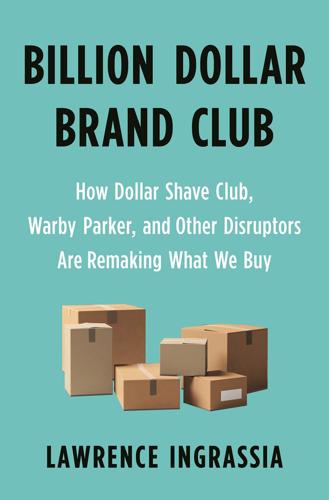
Billion Dollar Brand Club: How Dollar Shave Club, Warby Parker, and Other Disruptors Are Remaking What We Buy
by
Lawrence Ingrassia
Published 28 Jan 2020
Frustrated, he’d moved to Los Angeles, where he stayed rent-free at a cousin’s apartment initially, while deciding what he wanted to do. Tall and charming, with an easy smile and a winning personality, Dubin had studied improv on and off for eight years at Upright Citizens Brigade in New York City while dabbling in entrepreneurial ventures. As a side project, he started a social media network for travelers in 2006, not long after Mark Zuckerberg started Facebook. It never went anywhere. “My basement has a corner of what I call the failed business corner,” his mother would later tell a journalist. “And we have a number of things that we have bought and he made me invest in that he thought would be very successful businesses, which obviously they weren’t.”
…
Is selling a lot of products (as Mohawk is doing with hOmeLabs, Vremi, Xtava, and countless other brands still in its future) the same as creating an enduring brand? In the end, does it matter if a brand is recognizable if you can create an endless series of products that sell well? None of Mohawk’s early backers had any experience, or even particular interest, in consumer products. The venture was conceived as a side project to generate revenue that would help finance a loftier endeavor, called Titan Aerospace, a venture to build large, solar-powered drones that could travel twelve miles high and fly continuously for several years. The drones were designed to cruise just below the edge of Earth’s atmosphere, where they would create a network of satellites to blanket remote parts of the globe with inexpensive internet service.
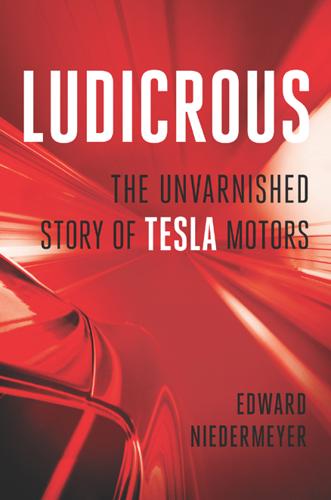
Ludicrous: The Unvarnished Story of Tesla Motors
by
Edward Niedermeyer
Published 14 Sep 2019
By November, Eberhard would be completely estranged from the company, having been paid by Musk to resign from his board seat. With Eberhard sidelined, Marks began bearing down on the tasks needed to begin production of the Roadster. Tesla’s first top executive with extensive manufacturing and supply chain experience, Marks began shutting down all the side projects that had proliferated in Tesla’s engineering playground. Shuttered were an electrified Smart car project that Straubel and Musk had been experimenting with, Eberhard’s plans for a New Mexico factory to build the new Whitestar sedan, and plans to produce batteries for other companies at Tesla’s Thailand factory.
…
But even with the renewed focus that Marks brought, a six-month delay was inevitable, and Musk began to work the media, promising that deliveries would begin in 2008 while teasing the longer-term prospect of the affordable Whitestar. Marks forced the company to work long hours without distraction from side projects, but still, chaos reigned. Tesla had abandoned its plan to build battery packs in Thailand and was having to painstakingly produce its own packs by hand in California. And the CFRP body panels Musk had insisted on wouldn’t hold their paint, forcing Tesla to seek a new supplier and retool at a cost of $5 million.

Ethics of Big Data: Balancing Risk and Innovation
by
Kord Davis
and
Doug Patterson
Published 30 Dec 2011
Special thanks for recognizing the value of the topic, being its champion, and working diligently to help make sure the project continued to unfold productively—all while making the work read better in the process. That also couldn’t have happened without interim editor (while Courtney was working on a side project of her own—which resulted in a beautiful baby girl), Julie Steele. Julie stepped in graciously, in the middle of a very busy and important time, and helped make sure I stayed between the rails as the work moved forward. And lastly, of course, thanks to Tim O’Reilly for creating an organization that would even consider publishing work on such a topic and for his discussion and insights on technology, culture, and community.
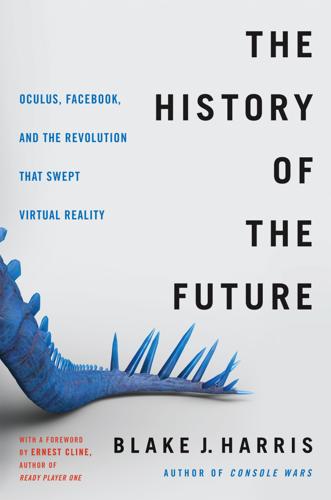
The History of the Future: Oculus, Facebook, and the Revolution That Swept Virtual Reality
by
Blake J. Harris
Published 19 Feb 2019
But as Brendan Iribe rose and slowly scanned the Gaikai office, he couldn’t help but feel this strange convergence had occurred. With the exception of Michael Antonov, who was doing his best to act like business as usual, everyone in the office was blasting the Oculus video. As everyone watched it over and over, it was quickly becoming clear that Iribe’s “little side project” might have been significantly larger than he let on. . . . My name is Palmer Luckey and I’m a virtual reality enthusiast . . . Iribe was less concerned with what his colleagues might think of him than he was about the possibility that a similar scene was playing out in a Sony office somewhere; and that with plans to acquire Gaikai for $380 million, the Sony people might not like seeing one of Gaikai’s key stakeholders shilling for a different venture.
…
“So you go and get the screwdriver,” Patel continued, “take it apart, and put it back together. Sometimes it works, sometimes it doesn’t, but it’s the process and the technology that are more interesting than the thing itself.” It was this type of curiosity that led Patel to Carnegie Mellon, and then Apple and then to create side-projects like the Adjacent Reality tracker.1 This was a small, wireless head and hand tracker—weighing only 9.2 grams—that, if added to the Rift, could capture the three degrees of freedom necessary to deliver an immersive experience.2 In essence, it could replace the Hillcrest tracker that Luckey & Co. had previously been using.
…
(Photo courtesy of Joe Chen) On March 25, 2014, Facebook finalizes a deal to acquire Oculus for $2.7 billion. (Photo courtesy of Heidi Westrum) Mighty Morphin Power Tinkerers. (Photo courtesy of Nicole Edelmann) Luckey and Edelmann cosplay as Quiet from Metal Gear Solid V: The Phantom Pain. (Photo courtesy of Yui Araki) Luckey and Dycus spend a weekend working on “side projects.” (Photo courtesy of Palmer Luckey) Among friends and fans at Machi Asobi in Japan, Palmer Luckey is ready for what’s next. (Photo courtesy of Yui Araki) About the Author BLAKE J. HARRIS is the bestselling author of Console Wars: Sega, Nintendo, and the Battle that Defined a Generation, which is currently being adapted for television by Legendary Entertainment, producers Seth Rogen and Evan Goldberg, and Scott Rudin.
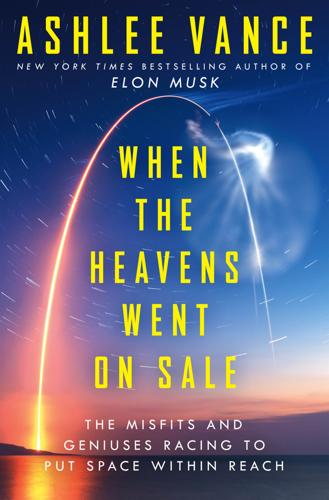
When the Heavens Went on Sale: The Misfits and Geniuses Racing to Put Space Within Reach
by
Ashlee Vance
Published 8 May 2023
.”* Although he had given up on hydrogen peroxide, Beck continued to experiment with other propellants and began to work more on rocket engine designs. Though he still often stayed late at Fisher & Paykel to complete company projects, he also spent many, many late nights using the high-end workshop tools for his side projects. Just about everyone at the office knew what Beck was up to, and some people provided help. One day, for example, Beck asked the Fisher & Paykel supplies manager how much a large hunk of aluminum would cost. The supplies chief reported back that it would run Beck about $2,000, a figure well out of the apprentice’s budget.
…
Beck would make suggestions and run computer simulations to prove that his suggestions would likely work, but his ideas were usually nixed. “Their thinking was that if something had worked in the past, then that’s how they do it,” Beck said. “It drove me totally insane.” Peter’s home life was not that much better. After moving, he’d lost access to a shed and had little time to work on the rocket side projects. Meanwhile, Kerryn’s job required that she travel frequently throughout the Middle East and the United States to analyze the performance of oil and gas wells. Peter tried to make the best of things. He flew to Cairo to meet Kerryn for a vacation, the first time he’d gone solo on a big overseas trip.
…
His hobbyist vibe made him seem more approachable, too. After work, he could sometimes be found in the parking lot underneath a jacked-up ancient Corvette, digging into his bags of tools and covered in grease. The PhDs did not make a ton of money, but they earned far more than Beck, who started at an annual salary of $40,000. To help support his side projects, he took on a second job at a tool-and-die-making shop across town. He’d work there and do some consulting projects from about 6:00 to 9:00 p.m. and then drive home and work on his propellants and rocket engines from ten at night to two or three in the morning. Those late-night sessions paid off, as his expertise with propellants expanded right alongside the size and power of his engines.
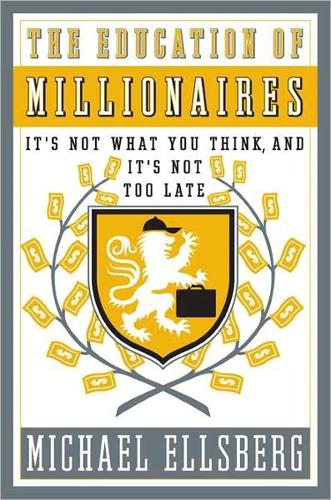
The Education of Millionaires: It's Not What You Think and It's Not Too Late
by
Michael Ellsberg
Published 15 Jan 2011
You only need one, in a whole lifetime. ■ DUSTIN MOSKOVITZ’S STORY In early 2004, Dustin Moskovitz was working a twenty-hour-perweek job as a computer system administrator, on top of forty or so hours a week of classes and homework as a sophomore at Harvard. And then there was this little side project he and some of his dorm buddies were working on, called TheFacebook.com. It’s hard to believe, but there was a time when Facebook was not a sure thing as one of the most significant phenomena in the history of human communication and social life. There was a time when it was a few kids sitting in a dorm room, and it had sixty or seventy thousand users—far fewer users than many now-folded companies have boasted before.
…
The chief executive in the business may have to move back in with her parents at some point during this time—before she figures out the business’s mission, revenue model, or core competency. (Oh, and by the way, the CEO is quite immature. She is often irresponsible and from time to time becomes distracted by side projects, like partying.) The business you’re about to invest in has absolutely no knowledge or experience in sales or marketing. It doesn’t even really know how to keep its own books or balance a budget, and often runs up a lot of credit card debt. It’s not even sure it wants to be a business; the CEO may want to start a nonprofit, pursue a passion in acting, or go help orphans in Botswana.
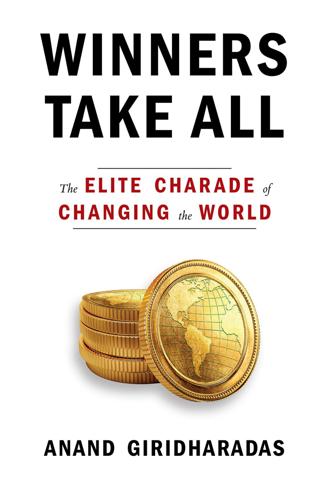
Winners Take All: The Elite Charade of Changing the World
by
Anand Giridharadas
Published 27 Aug 2018
But it defines leader in a particular way: “All are proven entrepreneurs, mostly from the world of business, who have reached a point in their lives where, having achieved success, they are ready to apply their creative talents to building a better society.” Fellows meet for four one-week sessions over two years. They read and discuss important texts, debate what makes for a “good society,” and develop side projects to do good in ways that generally avoid denting their opportunities to do well. Kassoy attended his first fellowship meeting in Aspen that summer, and the readings and discussions cracked him open. The experience awakened him to his latent discontent with private equity. “It was quite an intense experience because it caused me to say, ‘I’ve been at this for ten, eleven years.
…
It was peculiar that many of our conversations at the Aspen Institute about democracy and the “good society” occurred in the Koch Building, named after a family that had done so much to undermine democracy and the efforts of ordinary people to “change the world.” It was off-putting when the organizers of our fellowship reunion sprang a Goldman Sachs–sponsored lunch on us, in which the company’s do-gooding was trumpeted and its role in causing the financial crisis went unexamined. It bothered me that the fellowship asked fellows to do virtuous side projects instead of doing their day jobs more honorably. The institute brought together people from powerful institutions like Facebook, the hedge fund Bridgewater Associates, and PepsiCo. Instead of asking them to make their firms less monopolistic, greedy, or harmful to children, it urged them to create side hustles to “change the world.”
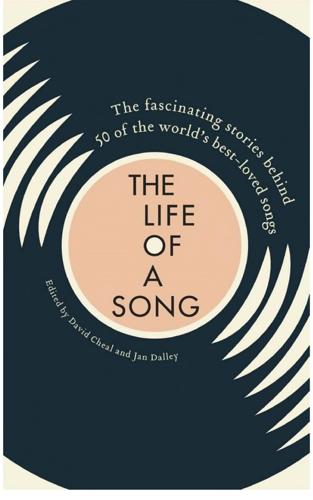
The Life of a Song: The Fascinating Stories Behind 50 of the World’s Best-Loved Songs
by
David Cheal
and
Jan Dalley
Published 20 Sep 2017
Their reading is faithful, Brett Anderson’s glam accent a fair approximation of Wyatt’s reedy treble, a guitar solo by Richard Oakes taking the place of Baker’s trumpet. Other memorable versions are rooted in concept albums. June Tabor, from landlocked Warwickshire, has always been obsessed with the sea, and her nautical album Ashore includes the song, with Huw Warren’s piano navigating around the original melody. And The Unthanks’ side-project Songs from the Shipyards offers a version in the accents of Tyneside. Adrian McNally sings the verses, while Rachel and Becky Unthank – as the ‘women and children’ – chorus ‘it’s just a rumour, just a rumour that was spread around town. …’ It makes the community’s divisions starker than ever. One reason, perhaps, why Costello’s lyrics are so measured is that the political left in Britain was unsure how to react to the war.
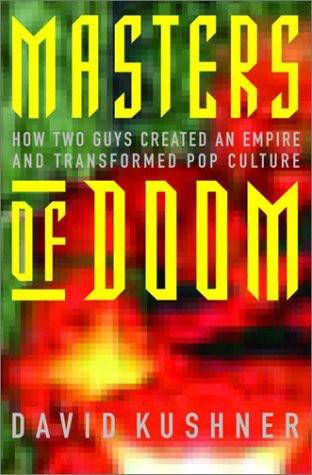
Masters of Doom: How Two Guys Created an Empire and Transformed Pop Culture
by
David Kushner
Published 2 Jan 2003
He had become the man he had envisioned all those years before. One night back at the office, Romero decided to share his feeling of success. He stepped into Carmack’s office to find his partner, as usual, sitting at 140 his PC with a Diet Coke. Since Doom’s release, Carmack had immersed himself in side projects: programming conversions or ports of Doom for other game platforms, including the Atari Jaguar and the new console from Sega. Id was getting good money for the gigs, $250,000 from Atari alone. But for Carmack it wasn’t the cash that was intriguing, it was the opportunity to get back into the trenches.
…
Carmack was busy working on what he knew would be the next killer game program. There was no reason to rush Engine John. The rest of the company had to just be patient and get ready to throw on the great game design. The best thine they could do was find ways to be productive. Romero chose to spend this time by immersing himself in side projects that he felt would have direct benefit to the company. But he could sense that they wanted to blame him for not getting the game done, that he wasn’t doing enough work. They viewed his detachment, his flipped bit, as a sign that their resident rock star was spinning, if not crashing, his wheels.
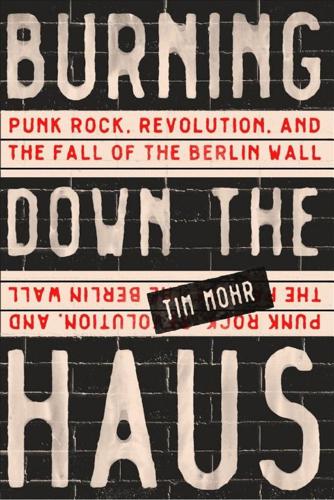
Burning Down the Haus: Punk Rock, Revolution, and the Fall of the Berlin Wall
by
Tim Mohr
Published 10 Sep 2018
Instead, he and Ina squatted an apartment together in Friedrichshain, briefly married, and started working together on songs that would eventually form the basis of another band, Wartburgs für Walter. Kremer, Antitrott’s singer and guitarist, was already dating Tatjana, a member of the Berlin band die Firma, and playing in a side project with her; Kremer soon followed Jörn to Berlin. Reimo, the band’s drummer, was the last to make the move. As the decade wore on and the legal obligation to work was no longer rigorously enforced, more and more people simply left the provinces and made for Berlin—or other cities where they could disappear and find their way in the cracks opening up, in the increasing amounts of free space being carved out of society in the big cities, in the squats, and in activities outside the official economy, like making clothing and jewelry for private sale.
…
The Stasi found out about the show beforehand—both vocalists in die Firma were Stasi snitches—but they did not stop it. Two thousand people had gathered by seven thirty in the evening, when die Firma started their set. Paul Landers of Feeling B was now playing guitar in die Firma as well; he was a restless musical soul and in addition to Feeling B and die Firma he also played in several side projects—one was an improvisational gypsy-punk kind of thing called Tacheles, and he and Flake had another called Magdalene Keibel Combo, a pun on the addresses of the Stasi headquarters at Magdelenenstrasse and the Keibelstrasse detention center near Alexanderplatz where punks were often taken. About a mile away, on Greifswalder Strasse, skinheads from all over town—including a few from West Berlin—had gathered at a bar called Sputnik to celebrate the birthday of one of their members.
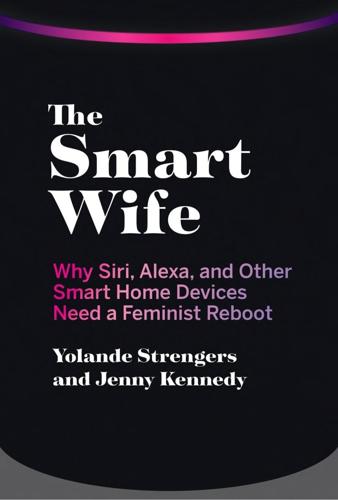
The Smart Wife: Why Siri, Alexa, and Other Smart Home Devices Need a Feminist Reboot
by
Yolande Strengers
and
Jenny Kennedy
Published 14 Apr 2020
Together and with our colleagues, in 2018 we received a gift from the Intel Corporation to reanalyze data from Yolande’s ARC Automating the Smart Home project around Intel’s ambient computing vision for the smart home: protection, productivity, and pleasure—or the 3Ps. In 2017, we came up with the idea for this book, as a collective product of the gendered concerns that we’d both been raising in relation to our respective projects. We unofficially started a smart wife side project—and hired a fabulous research assistant, Paula Arcari, to help us fill in the gaps from our research thus far. This book is a product of this research as well as analysis and writing conducted with our colleagues and collaborators from RMIT,1 Monash,2 and Melbourne3 universities (Australia), Lancaster University (United Kingdom),4 Aalborg University (Denmark),5 and Intel Corporation (US).6 In each chapter we draw on a range of primary materials, which can be summarized as follows: • Ethnographic interviews, home tours, and observations from 31 Australian households (42 participants in total) self-identifying as smart home early adopters, or living with smart home technologies (material collected and analyzed as part of the ARC DECRA and Intel 3Ps projects)
…
• A qualitative content analysis of 270 international popular media and trade articles about the smart home, written from 2000 to 2016 by journalists and industry commentators. • A qualitative content analysis of international promotional videos for smart home products and digital voice assistants conducted and analyzed as part of our smart wife side project in 2017–2018. In addition, we reviewed a range of secondary materials for this project, including: • Depictions of smart wives across popular culture. • Scholarly literature, academic materials, and industry reports written about the themes raised in this book. • Articles, websites, advertisements, and videos written about or visually depicting smart wives in different industries and settings.

Invention: A Life
by
James Dyson
Published 6 Sep 2021
The four cables went through stainless steel ferrules in the tabletop, then down to fixings in the floor, crossing over at an angle on the way. The crossing over was crucial to prevent slewing of the table. The cables were tensioned tightly. The glass top was remarkably stable, more so than a table with legs. Everyone can sit at any point around the table without a table leg being in the way. Boardroom table Another enjoyable side project involved bringing vacuum cleaners to the Paris catwalk. On my trips to Tokyo, I would always be invited to visit Issey Miyake. He has only recently revealed that he was seven when one of the two atom bombs dropped on Japan in August 1945 fell close to his home. Issey is a creative force and was a wonderful supporter to us as we found our way in Japan.
…
He had created his work after spending a day with Dyson engineers, learning about the development process and its ups and downs, with hopefully a rousing ending. David and Toby created a novel, creative piece of music. What could have been no more than a gimmick proved to be thoughtful and enjoyable. This type of creativity we brought to side projects was also integrated into the ethos of our work at Dyson. We soon launched the DC08, a multi-cyclone cylinder cleaner replacing DC05 and offering a big jump in suction power. It came with a bigger powered brush bar designed to deal effectively with pet hair. Although bigger than DC05, it, too, had the “wheelie” feature, which made it feel light when maneuvering.

Care to Make Love in That Gross Little Space Between Cars?: A Believer Book of Advice
by
The Believer
,
Judd Apatow
and
Patton Oswalt
Published 6 Mar 2012
She declared her abstinence from the dirty habit and promised, in a binding agreement with a friend, to pay one thousand dollars to anyone who caught her inhaling. At 3:23 a.m. on January 1, 2007, my sister arrived home from the bar, under the influence of alcohol, and disturbed my slumber by blasting songs from her electro-pop side project while dancing around the inflatable mattress I was sleeping on in her living room. She then proceeded to smoke her face off while mocking my good behavior. I quickly turned on my video camera and captured her in the act. I then used the incriminating tape to receive my thousand-dollar reward. I also called her “watpagin” for three months following a predictive text mishap from the same evening.

Austin Like a Local
by
DK
g DRINK g Contents Coffee Shops FIGURE 8 COFFEE PURVEYORS RADIO COFFEE & BEER GREATER GOODS LEVERCRAFT CUVÉE COFFEE EPOCH COFFEE CHERRYWOOD COFFEEHOUSE g Coffee Shops g Contents Google Map FIGURE 8 COFFEE PURVEYORS Map 2; 1111 Chicon Street, Blackshear-Prospect Hill; ///curated.defended.skewed; www.figure8coffeepurveyors.com In a city of start-ups and side-hustlers, a coffee shop that started out as a side project by some of the city’s best baristas is sure to draw a likeminded crowd. Silicon Hills workers love Figure 8, tapping away on laptops in its plant-filled interior, while nursing cortados and cappuccinos made from roasts described as having a “velvety body” or “vibrant acidity.” Who said only wine had tasting notes?

Platform Revolution: How Networked Markets Are Transforming the Economy--And How to Make Them Work for You
by
Sangeet Paul Choudary
,
Marshall W. van Alstyne
and
Geoffrey G. Parker
Published 27 Mar 2016
The founders originally thought they were in the web services business, selling consulting to firms who needed websites. But selling web consulting didn’t scale: each project had to be negotiated individually, each project required dedicated staff, and after completion, no project could be resold without modification. The company founders launched the T-shirt contest website as a side project to illustrate their capabilities. It was simply an online copy of an offline contest that one of the founders had entered. When this side venture exploded in popularity, its enormous scalability advantages became obvious. Scaling a network requires that both sides of the market grow proportionally.
…
Nonetheless, Confinity attracted few users. After two years, having gained only 10,000 signups, Levchin and Thiel shut Confinity down. Along the way, however, they unlocked a much more promising business prospect. Back in October 1999, a Confinity engineer had cobbled together an online demo to accept payments via email. This side project represented a significant potential improvement in payments processing; unlike previous systems for online payments, it allowed anyone in the world to receive an online payment from anyone else without needing to use the unwieldy system for transferring funds from one bank account to another. Levchin and Thiel recognized that it might be possible to turn this new form of online payment into a significant business on its own—one that could serve millions of consumers and the online businesses they patronized.
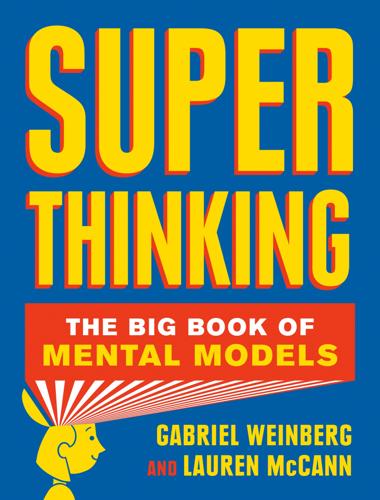
Super Thinking: The Big Book of Mental Models
by
Gabriel Weinberg
and
Lauren McCann
Published 17 Jun 2019
Default Effect You can use the default effect to your personal advantage by making default commitments toward your long-term goals. A simple example is scheduling recurring time right into your calendar, such as an hour a week to look for a new job, deep-clean your living space, or work on a side project. Thereafter, by default your time is allocated to whichever long-term goal you choose. This same technique also works well for scheduling deep work. By putting deep-work blocks of time into your calendar, you can prevent yourself by default from booking this time with meetings since it is already committed.
…
You’ve probably seen this model in books and movies about scenarios such as what would have happened if Germany had won World War II (e.g., Philip K. Dick’s The Man in the High Castle). Examples from your own life can help you improve your decision making when you think through the possible consequences of your past decisions. What if I had taken that job? What if I had gone to that other school? What if I hadn’t done that side project? When reconsidering your past decisions, though, it is important not only to think of the positive consequences that might have occurred if you had made a different life choice. The butterfly effect (see Chapter 4) reminds us that one small change can have ripple effects, so when considering a counterfactual scenario, it is important to remember that if you change one thing, it is unlikely that everything else would stay the same.

The Power Law: Venture Capital and the Making of the New Future
by
Sebastian Mallaby
Published 1 Feb 2022
First, California law prevents employers from tying up employees in non-compete agreements; talent is free to go where it pleases, unlike in most states, including Massachusetts. Second, Stanford has been generous in allowing professors to take sabbaticals to work on startups, and this permissiveness has fostered ties between academia and business; in contrast, MIT professors have risked losing tenure if they spent too much time on side projects. Yet although an absence of non-compete clauses and the porousness of Stanford have contributed to the creative fluidity of the Valley, they are not the whole story. For one thing, some legal scholarship has sought to qualify the significance of non-competes.[8] For another, California tech startups are far more likely to involve Stanford grad students than Stanford professors.[9] The main answer to the Saxenian question—the reason why the Valley has a plethora of weak ties—is to be found elsewhere.
…
His presentation made no mention of Thefacebook, his social-networking website that was spreading like wildfire on college campuses. Instead, Zuckerberg pitched an unproven file-sharing idea called Wirehog. Accustomed to having the pick of Valley deals, Sequoia would have to listen to a spiel about a side project. The title of Zuckerberg’s deck was even more insulting. “The Top Ten Reasons You Should Not Invest in Wirehog,” it proclaimed mockingly. “The Number 10 reason not to invest in Wirehog: We have no revenue,” the deck began. “Number 9: We will probably get sued by the music industry.”
…
The following year they sold the venture and became millionaires. Patrick returned to MIT. John enrolled at Harvard. In 2009, now aged twenty and eighteen, Patrick and John spent the summer in Palo Alto. They had been noodling a new business idea, a company that would transform the experience of e-commerce sites that needed to take payments. As a side project at MIT, Patrick had built a downloadable version of Wikipedia and had discovered how hard it was to collect money for it. Processing credit card transfers was expensive and frustrating; despite the earlier promise of PayPal, online payments remained in the dark ages. The Collisons set out to solve this pain point by setting up the accounting platforms to manage cash flows, verify payers’ identity, and catch fraud.

Dreaming in Code: Two Dozen Programmers, Three Years, 4,732 Bugs, and One Quest for Transcendent Software
by
Scott Rosenberg
Published 2 Jan 2006
They were all stuck, stymied—in the software business’s preferred term, blocked. The back-end work Chandler needed led directly into a maze of tough technical decisions, and McCusker quickly found himself at the center of it. An enthusiastic blogger who used his Web site, named Treedragon, to chronicle his own side projects developing new programming languages, McCusker filled blog entries in the days after his start at OSAF with enthusiastic, point-by-point responses to technical emails. One email he posted from a developer whom he didn’t name read: Please don't blow it and reinvent what Python and Zope [a Python-based project] developers have already created.
…
Ward Cunningham’s wiki, for example, came about not because the programmer set out to build Web pages that anyone could add to but because he wanted his collaborators to be able to fix their own mistakes. The young developers who started a small company named Pyra in 1999 aimed to produce a collaborative project management tool; they also built a small program to write a Web journal and communicate with their users. That little side project became Blogger, the largest blogging service in the world, with millions of users (Google acquired it in 2003). Ludicorp was a software company that prototyped a system for a “massive multiplayer online role-playing game”; the project, called the Game Neverending, ended pretty quickly, but its creators revamped some of its parts and built the Flickr photo-sharing service, which became the toast of the Web in 2004 (and was acquired by Yahoo!

Build: An Unorthodox Guide to Making Things Worth Making
by
Tony Fadell
Published 2 May 2022
It’s hard to describe the pressure of my first few years there. Especially at the very beginning, when I was running my startup while doing Apple contract work, trying to maneuver that into a way to save my team at Fuse. The stress only got cranked up after I began working on the iPod full-time. In the beginning, it was a side project at Apple. But in the months and years that followed, the iPod became as important as the Mac, sometimes more important. The company was holding its breath, waiting to see if we’d succeed. Not only did we need to build this completely new thing, but we needed to build it incredibly quickly, up to Steve Jobs’s exacting specifications, make it beautiful and delightful in a way that would remind everyone of what Apple could be, and then have it be a roaring commercial success.
…
Each product family gets a dedicated engineering team, a dedicated marketing person, a dedicated designer and writer. And that turns them into little startups inside the business—smaller, faster, more autonomous. Decisions speed up and everyone shares one clear goal rather than scrambling for resources on a side project. It just works better. But that’s not to say that people will be happy about it. Groups don’t enjoy being narrowed any more than individual contributors do. But the conversation you had with individual contributors about their personal trajectory can be used again as the group trajectory narrows.

Unknown Market Wizards: The Best Traders You've Never Heard Of
by
Jack D. Schwager
Published 2 Nov 2020
One thing about event-driven trading is that if there isn’t an event to trade, there is nothing to do, and it is really boring. You can feel like you’re wasting your life. I guess then, simply out of boredom, you could be tempted to make trades you really shouldn’t do. Exactly. I have found that I trade much better when I have a side project. If I have nothing else to do but trade events, and there are no events to trade, my mind runs wild. I need to focus my attention on something; otherwise, I will focus on the wrong things. A couple of years ago, I started looking into trend-following systems and testing some of them. I wanted to see for myself whether trend following worked.
…
After four years of working at financial service firms in jobs unrelated to investing or trading, he left New Zealand for London, hoping he would find a position closer to his interests in one of the world’s leading financial centers. Kean never did get that market-related job. Undeterred, however, two years after arriving in London, he launched his asset management company, Steel Road Capital, managing a few small accounts for friends and family, as a side project to his day job. He eventually gave up the day job to focus full-time on portfolio management. Kean still operates as a one-man shop. Although he has outperformed the vast majority of hedge funds, Kean’s assets under management remain quite small ($8 million), and he does not have any aspirations to manage large sums.
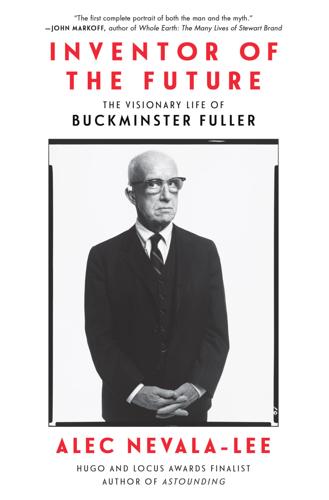
Inventor of the Future: The Visionary Life of Buckminster Fuller
by
Alec Nevala-Lee
Published 1 Aug 2022
She told her father, whose naval background sometimes made him seem stiff in public, to gesture more freely in his lectures: “I believe that you could communicate with your audiences better if you would only let yourself go.” Fuller agreed, and the hint influenced his speaking style, which gradually evolved into a performance that he often conducted, like King, to seek financial support from possible patrons. As usual, he was preoccupied by side projects. Models of his unrealized designs for the Dymaxion Car were exhibited at the New York World’s Fair, and he considered writing a book on plastics. He took up running again, and he kept in touch with Vilhjalmur Stefansson, who later married Fuller’s former flame Evelyn Schwartz. It may have been through Stefansson that he met L.
…
There are no cubical heads, eggs, nuts, or planets.” In Santa Monica, it delighted Fuller, who sketched out a tensegrity tent of his own. His design was never realized, but the dome tent became one of the most lasting incarnations of his ideas. Fuller gave more of his attention to idiosyncratic side projects, including a recording of a live performance of his own songs at a Philadelphia folk club, and to cultivating new patrons. One was a Malaysian architect named Lim Chong Keat, the wealthy younger brother of the chief minister of the state of Penang. Lim enlisted Fuller, whom he met through the Indian airport project, in his plans for Komtar, a gargantuan urban center for the capital city of George Town that would include a geodesic auditorium.
…
He fired Wessels, who had been on his team for six years, and the program ended quietly. Fuller got along better with Grip and a staffer named Chris Kitrick, who knew how to walk that delicate line. They developed a mathematical transformation for the Dymaxion Map—a step that Fuller had never taken—and spent a year plotting features by hand on huge triangles of paper. As a side project, Kitrick came up with a tensegrity truss of octahedra, which Fuller paid to be patented. When Grip realized that Fuller had miscalculated the relative volumes of a tetrahedron and sphere in his geometry, he filled two models with water to demonstrate that he had been wrong. Grip and Kitrick also drafted illustrations for the book Synergetics 2, which was less a sequel than a corrective to its predecessor’s shortcomings, including its lack of an index.

Full Stack Web Development With Backbone.js
by
Patrick Mulder
Published 18 Jun 2014
First, there were the JavaScript pair programming sessions I did with Béla Varga, who is involved in a number of communities for JavaScript development (MunichJS, Coding Dojo), and helped me a lot changing my Ruby-developer biased view on JavaScript. I want to thank Andrea Notari, Daniele Bertella, and Aurélie Mercier for investing time in a side project that led to experimenting with Backbone.js in the first place. We are trying to make digital work more accessible and transparent. Thanks for valuable feedback and discussion from Lucas Dohmen, Michael Hackstein, Mathias Lafeldt, Radoslav Stankov, Colin Megill, Eric Trom, Ryan Eastridge, Mike Dvorkin, Martin Gausby, Jeremy Morrell, Jean Carlos Menino, Axel Rauschmayer, Phi‐ lip Fehre, Roman Sladeczek, Laust Rud Jacobson, Yi Cao, Dave Cadwallader, Nikhilesh Katakam, Patrick Dubroy, Ted Han, Jeremy Ashkenas, Jason Crawford, Peter de Croos, Adam Krebs, Tim Griesser, Sara Robinson, Kevin Sweeney, Petka Antonov, and Gorgi Kosev.
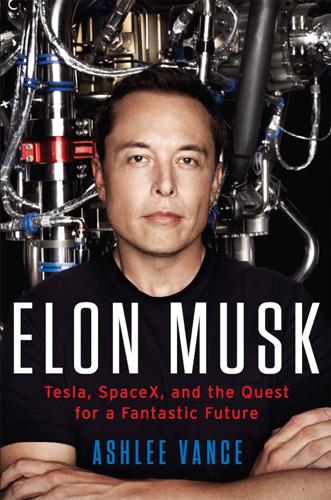
Elon Musk: Tesla, SpaceX, and the Quest for a Fantastic Future
by
Ashlee Vance
Published 18 May 2015
Then, in the fall of 2003, Straubel met Elon Musk. Harold Rosen had set up a lunch with Musk at a seafood restaurant near the SpaceX headquarters in Los Angeles and brought Straubel along to help talk up the electric plane idea. When Musk didn’t bite on that, Straubel announced his electric car side project. The crazy idea struck an immediate chord with Musk, who had been thinking about electric vehicles for years. While Musk had mostly focused on using ultracapacitors for the vehicles, he was thrilled and surprised to hear how far the lithium ion battery technology had progressed. “Everyone else had told me I was nuts, but Elon loved the idea,” Straubel said.
…
The bigger building allowed Tesla to bring the battery work back in-house from Asia and for it to do some of the Roadster manufacturing, alleviating the supply chain issues. Tesla was maturing as a car company, although its wild-child start-up streak remained well intact. While strolling around the factory one day, Marks saw a Smart car from Daimler on a lift. Musk and Straubel had a small side project going on around the Smart car to see what it might be like as an electric vehicle. “Michael didn’t know about it, and he’s like, ‘Who is the CEO here?’” said Lyons. (The work on the Smart car eventually led to Daimler buying a 10 percent stake in Tesla.) Marks’s inclination was to try to package Tesla as an asset that could be sold to a larger car company.

The Myth of the Rational Market: A History of Risk, Reward, and Delusion on Wall Street
by
Justin Fox
Published 29 May 2009
He founded a company that provided weekly price indexes to newspapers around the country. He argued for linking business contracts and bond interest rates to inflation (it took a mere eighty-six years for the U.S. government to follow up on this suggestion by launching Treasury Inflation-Protected Securities, or TIPS, in 1997).23 As a side project, he also tried to bring indexing to the stock market. The Dow averages were and are merely that—averages of the prices of the selected stocks. This measure generates some deeply weird results. To use two modern Dow constituents as examples, General Electric was selling for $36 a share at the end of 2007 and Caterpillar for $72.
…
One recent history of economic thought (Jürg Niehans’s A History of Economic Theory) devotes twenty-four pages to Samuelson’s ideas. Adam Smith only gets thirteen.1 Samuelson’s work on stock markets and the random walk takes up less than two of those twenty-four pages. He was “the last generalist in economics,” as he liked to say, and for him financial market studies were just a side project that he at times seemed deeply ambivalent about. His intervention was, however, crucial to the triumph of the random walk. Here was one of the most important economists of all time, and he didn’t think the relationship between coin flips and the stock market was a dinner-speech triviality. The son of successful immigrant parents in Gary, Indiana, Samuelson arrived at the University of Chicago in 1932 and fell hard for the elegant logic of neoclassical economics.

Super Pumped: The Battle for Uber
by
Mike Isaac
Published 2 Sep 2019
As more and more people connected online, demand for new, internet-enabled services grew by the day. Second, the hurdles for entrepreneurs who wanted to launch a company were lowering quickly. Amazon Web Services, or AWS, changed the startup game entirely. Amazon started AWS in 2002 as an engineering side project; it would grow to become one of its most successful innovations in Amazon history. Amazon Web Services powers cloud computing services for coders and entrepreneurs who can’t afford to build their own infrastructure or server farms on their own. If a startup is a house, AWS is the electric company, the foundation and the plumbing combined.
…
Google’s search business was still printing money—billions every single quarter—which gave Alphabet’s other companies the ability to pursue diverse projects. It also freed the reclusive Page from the public eye. He hated the scrutiny that followed the CEO of Google, and wanted more time to pursue his own projects. The idea of self-driving cars had been a private goal for a long time. And self-driving was just the beginning; Kitty Hawk, a side project backed by his personal bank account, was working on a first consumer-ready version of a flying car. Page wanted to make his childhood dreams of the future come true in his own lifetime. Although Google was the first Big Tech company to devote substantial resources and money to self-driving-car research, executives admitted they were slow to move and test the cars more aggressively.

Like, Comment, Subscribe: Inside YouTube's Chaotic Rise to World Domination
by
Mark Bergen
Published 5 Sep 2022
“You didn’t tell us to work on it,” he protested to his CEO. “Well, times have changed,” Schmidt replied. By March 2008, Google’s stock price had fallen 40 percent from the autumn. goodbye, google, ran a headline in Forbes. Critics knocked the company as a “one-trick pony” (search) burdened with expensive side projects. YouTube, in particular, looked like deadweight. Sure, it captured the attention of youth, but so did a rapidly rising company called Facebook. This new order—make money—would lead to a drastic overhaul of YouTube’s operations in the coming years. Those inside saw it coming when a new face from Google started showing up in San Bruno: Salar Kamangar, Google’s “secret president” and inventor of the search ads auction.
…
“It’s not a way to be creative.” Bing Chen, another YouTube employee who worked with creators, tried running his own channel with frequent postings as an experiment. Despite leading man looks, Chen resigned quickly. “It’s a hundred-hour job,” he told colleagues. “It’s just so much work.” As a side project Stack had converted his home in the Hollywood Hills into the Alchemy House, an artists’ space he imagined as a haven for creativity. He invited musicians and YouTubers. Olga Kay first arrived stunned to see Stack, who dressed conservatively at work, in shorts and blue nail polish; Stack, like many Googlers, was a Burning Man regular.

Start Small, Stay Small: A Developer's Guide to Launching a Startup
by
Rob Walling
Published 15 Jan 2010
Starting for the Right Reasons Most developers want to build software products for the wrong reasons. Reason #1: Having a Product Idea If you have an idea for a product, odds are high that you have project/product confusion. A project is a software application that you build as a fun side project. The code is fun to write because you’re not concerned about quality and performance, and the end result is a neat little application that likely isn’t of use to many people. A product is a project that people will pay money for. In other words, it’s a project that has a market (a group of people who want to buy it).
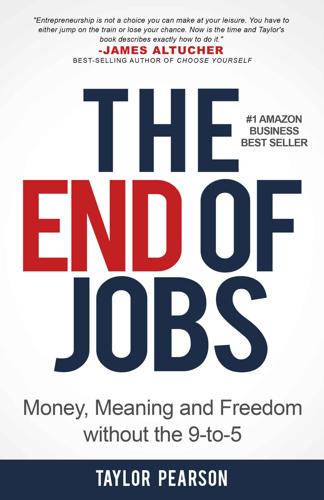
The End of Jobs: Money, Meaning and Freedom Without the 9-To-5
by
Taylor Pearson
Published 27 Jun 2015
If you go talk to 10 girls and nine laugh and spit in your face and one turns into a deeply meaningful relationship that you spend years in and is emotionally satisfying, it’s still a net positive by a wide margin. If you start 10 companies, lose $1000 on the first nine and make $1 million on the 10th, you’re net positive even though you “failed” nine out of then times. Section 4 30. To download the full interview with Derek Sivers about how he turned a side project, CD Baby, into a 75 person business and the qualities of musicians that are successful selling online (and how those lessons transfer to other industries), go to http://taylorpearson.me/eoj 31. To download an interview with Dan on how he turned a $40,000 per year web design agency Into a $40,000 per month recurring revenue service, go to http://taylorpearson.me/eoj Chapter 8 32.
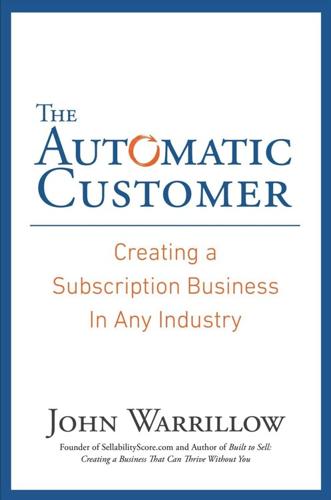
The Automatic Customer: Creating a Subscription Business in Any Industry
by
John Warrillow
Published 5 Feb 2015
He was using Microsoft Word to send an invoice and hit Save instead of Save As, accidentally erasing an old invoice. With the old invoice gone, he had no way of tracking it for his business or the tax man. Determined to develop an invoicing tool that was easy to use for a small company like his, he developed FreshBooks.com as a side project. “It took over sixteen months to bring a product to market,” McDerment told me. “When we launched, no one cared, and twenty-four months after starting, we had only ten paying customers and revenues of $99 per month. We moved into my parents’ basement for three and a half years.”2 By 2014, FreshBooks had paying customers in 120 countries, and McDerment & Co. had moved out of his parent’s basement into digs that housed more than 100 FreshBooks.com employees.
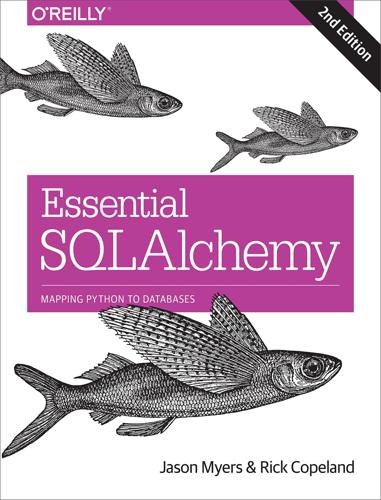
Essential Sqlalchemy
by
Jason Myers
and
Rick Copeland
Published 27 Nov 2015
Prior to switching to development a few years ago, he spent several years as a systems architect, building data centers and cloud architectures for several of the largest tech companies, hospitals, stadiums, and telecom providers. He’s a passionate developer who regularly speaks at local and national events about technology. He’s also the chair of the PyTennessee conference. He loves solving health-related problems, and has a side project, Sucratrend, devoted to helping diabetics manage their condition and improve their quality of life. He has used SQLAlchemy in web, data warehouse, and analytics applications. Rick Copeland is the co-founder and CEO of Synapp.io, an Atlanta-based company that provides a SaaS solution for the email compliance and deliverability space.

Ego Is the Enemy
by
Ryan Holiday
Published 13 Jun 2016
Employees were not given enough direction, and then at other times, overwhelmed with trivial instructions. DeLorean couldn’t delegate—except to lackeys whose blind loyalty was prized over competence or skill. On top of all this, he was often late or preoccupied. Executives were allowed to work on extracurricular activities on the company dime, encouraged specifically to chase side projects that benefited their boss at the expense of the company. As CEO, DeLorean often bent the truth to investors, fellow officers, and suppliers, and this habit was contagious throughout the company. Like many people driven by a demon, DeLorean’s decisions were motivated by everything but what would have been efficient, manageable, or responsible.
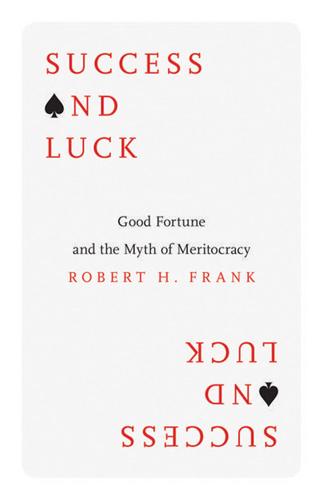
Success and Luck: Good Fortune and the Myth of Meritocracy
by
Robert H. Frank
Published 31 Mar 2016
I expressed a little interest back and got hired, got tenured, and got bored, all in a little over a decade. That was the 1990s for me. Then I got a plush job with my own research team at the National Institutes of Health. We were doing some work with action potentials in neuronal firing when I started getting distracted by a side project we’d discovered with mRNAs. The NIH expressed some mild interest but they were taking too long to approve the project, get funding, yada yada, so once my contract was up, I was out of there. My partner and I founded the H. J. Institute soon after I delivered a paper at a conference at Berkeley.
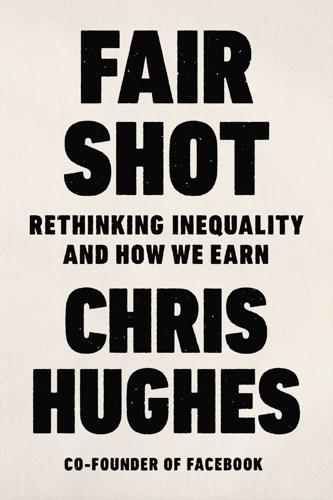
Fair Shot: Rethinking Inequality and How We Earn
by
Chris Hughes
Published 20 Feb 2018
While Mark enlisted Dustin to help build the site and open it up to other colleges, I prepared promotional plans for Harvard and the new schools and helped design core features on the site, like messaging and an early news product. The non-techie of the group, I took responsibility for how the site might be used and how others might perceive it. I pitched in wherever I could to tweak a feature, improve an interface, or make sure a reporter knew the facts. At that stage, Facebook was mostly a fun side project, more something to bond with my roommates over than a way to change the world. Seeing how quickly we could make it grow was almost like a game. Mark, however, talked about Facebook in near-religious terms from the outset: he saw it as a way to make the whole world more “open and connected.”

Robot, Take the Wheel: The Road to Autonomous Cars and the Lost Art of Driving
by
Jason Torchinsky
Published 6 May 2019
The Macintosh’s graphical user interface and mouse made things even easier—this would be like today’s highly assisted-driving cars—and today computers are ubiquitous, and we use them for everything, and no one really has to know how they work at all, in any way. That’s the autonomous era. Still, if we keep this analogy going, it’s worth noting that people still learn to program computers—sometimes as a career, and sometimes just because they’re interested and want to do it on their own, for a hobby, side projects, jobs, or even artistic reasons. In the same way, I think there will always be a critical mass of people who are interested enough in cars to want to learn how to drive. There is a potential upside for human-driving in a robot-driven world. Such a world would mean the death of the boring car—at least the boring human-driven car.
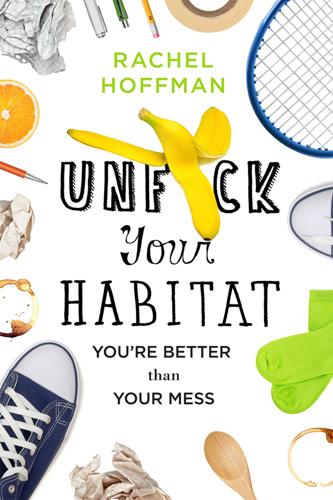
Unf*ck Your Habitat
by
Rachel Hoffman
You’re looking to bring the overall state of things to a point where someone can come in and look around; hell, maybe even sit down and stay a while! (OK, let’s not go overboard.) You’re going to be focusing on pretty much everything, and you need to make sure you aren’t getting distracted by side projects or spending time on areas that aren’t going to make much difference in the grand scheme of your home’s overall cleanliness. The time for procrastination is done, and it’s time to get to it. Your time here is limited, you’re working on a deadline, and you can’t put it off any longer. While sitting around stressing about it is completely normal, it’s not something that’s helping you to get things ready.

Becoming Steve Jobs: The Evolution of a Reckless Upstart Into a Visionary Leader
by
Brent Schlender
and
Rick Tetzeli
Published 24 Mar 2015
The long and winding development of the Macintosh is the saga that best shows why Steve remained so admired even as he was so instrumental in tearing apart the company he loved. To understand this, we need to take a step back chronologically, to the fall of 1980, when Scotty dumped Steve from the Lisa team. At the time, he had suggested that Steve take a look at an intriguing side project being run by Jef Raskin, a smart, idiosyncratic, theoretically inclined former college professor whose first job at Apple had been to supervise the preparation of user manuals and product documentation for the Apple II. Steve thought Raskin was a pedantic egghead, but he was intrigued by the goal of his project: to create a consumer-oriented “computer appliance” that would sell for just $1,000.
…
Pixar’s revenues were stagnant, and Steve was writing one check after another to keep the thing afloat. The world’s most famous computer entrepreneur was in danger of drifting into the middling obscurity that has enveloped so many other one-hit wonders of the technology world. Shutting down this expensive side project would have made enormous sense. And yet Steve persisted. He had idiosyncratic reasons for doing so. The easiest to understand is that he desperately did not want to admit to having failed. After his ignominious departure from Apple, and in the absence of a tangible success at NeXT, Steve was basically keeping his reputation alive with announcements of milestones that weren’t really milestones.
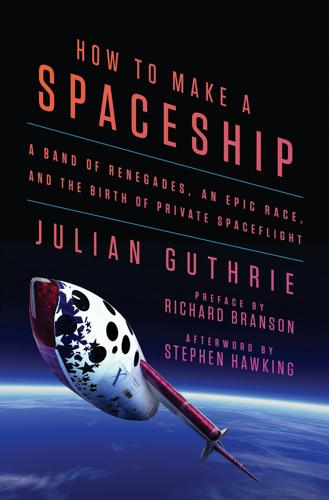
How to Make a Spaceship: A Band of Renegades, an Epic Race, and the Birth of Private Spaceflight
by
Julian Guthrie
Published 19 Sep 2016
“Tsiolkovsky said, ‘Earth is the cradle of humanity, but one cannot remain in the cradle forever.’” Peter was two months shy of his twenty-seventh birthday. He had one big hurdle to go before he could focus full time on moving humanity out of its cradle. He needed to finish up at Harvard Medical School, either by graduating or by gracefully bowing out. And he had a certain ambitious side project—one that was drawing attention from all over the globe. — At the world headquarters of the International Space University—a tiny second-floor office above a bagel shop on Beacon Street—Peter and Todd Hawley marveled at the postmarks on the applications: the Soviet Union, China, Japan, Kenya, Switzerland, Germany, France, Poland, India, Saudi Arabia.
…
But Scaled was an airplane company, with no experience making rocket engines. Fabrication problems quickly surfaced with the case, throat, and nozzle. There was uncertainty that Scaled’s nitrous tank design could handle the required pressures. Alabaman Tim Pickens, hired early on by Burt for his work in propulsion, design, and fabrication—and because his side projects included rocket-powered bicycles, rocket-powered backpacks, and rocket-powered pickup trucks—agreed with Scaled’s call to outsource the nitrous oxide tank, which would transport the nitrous. Pickens found a guy in Texas who owned a scrap yard and said he could help build a nitrous trailer. The Texan already had a tank with a generator for refrigeration that could hold ten thousand pounds of nitrous.

We Are the Nerds: The Birth and Tumultuous Life of Reddit, the Internet's Culture Laboratory
by
Christine Lagorio-Chafkin
Published 1 Oct 2018
His courses had been the highlight of Ohanian’s college education, and his approval had become very important to Ohanian. On this night, White was more like a friend: They decided to go out together and explore Singapore. A couple of drinks into the evening, Ohanian ignited in his belly the courage to explain to White his distinctly nonacademic side project: the mobile food-ordering app. Maybe the Singapore Slings helped. He gave the full spiel, from gas-station inspiration to “MMM.” White loved it. He told Ohanian, “I think you have a chance.” The next morning, in Charlottesville, Huffman woke up to an urgent email from Ohanian: hey bro, i’m in Singapore at this technepreneurial seminar, and am basically spending a week learning how to create a tech startup. i spoke to Mark White (a professor in the comm school, the guy who took me to South Africa, and who recruited me to come here, as well as a generally good guy and technophile) over some drinks last nite, and pitched him on our idea…but basically said it was one of the best he’s heard, perios [sic].
…
Aside from quarterly goal-setting meetings with Condé and Advance executives, Reddit was mostly left to its own devices. Maintaining its growth—rebooting servers, keeping Reddit online—took nearly all of Huffman and Slowe’s energy. It meant there simply wasn’t time for branching out into a hypothetical integration with Condé Nast sites or building side projects for their new parent empire. It didn’t hurt that most of Condé Nast didn’t comprehend this bizarre site with anonymous users posting increasingly on everything under the sun in informal, distinctly un-magazine-like language. Early Reddit staffers would later recall Wired editors walking past their corner, poking a head in, and then explaining to their guests or interview subjects, “This is Reddit.
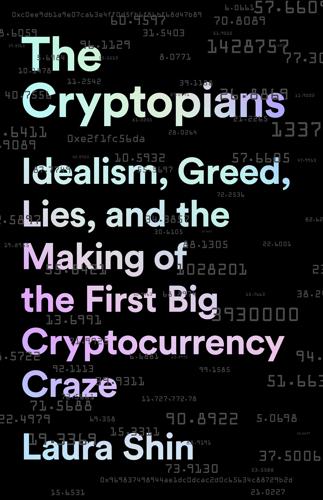
The Cryptopians: Idealism, Greed, Lies, and the Making of the First Big Cryptocurrency Craze
by
Laura Shin
Published 22 Feb 2022
Since so many people were buying ETH to gamble—er, invest—in these crowdsales, its price was rising. By April’s end, ETH was trading at $79, but just a few days after, it closed at $97. On the ICO front, May made April look quaint; twenty-two initial coin offerings that month raised $229 million. MyEtherWallet, the tiny side project started by two best friends, saw its traffic jump tenfold in five months alone: it went from one hundred thousand hits in January to one million in May. That winter, as ICOs had been picking up, Kosala found it impossible to keep up with all the tokens Taylor, who was the liaison to the community, was constantly asking him to add while also tending to MEW’s own development goals.
…
Headlines read, “Winklevoss twin predicts multitrillion-dollar value for bitcoin,” “Analyst who predicted bitcoin’s rise now sees it hitting $300,000–$400,000,” and “Trader who called bitcoin rally says cryptocurrency will surge above $100,000 in 2018.”28 News about Bitcoin and Ethereum proliferated: about teens who’d become millionaires off Bitcoin, ETH traders who turned $8,500 into $7.5 million in six months with leveraged crypto trades, and WikiLeaks’ founder Julian Assange thanking the US government, because the site was now enjoying 50,000 percent returns since it had been forced to use Bitcoin after being blocked by credit cards and PayPal.29 Now that Bitcoin had gone “to the moon,” a company named Moonlambos made it possible for anyone wanting to buy a Lamborghini to do so with BTC or ETH.30 It also planned an ILO—initial Lambo offering.31 On December 13, PineappleFund, an anonymous early Bitcoiner, posted on Reddit, announcing that he or she had “far more money than I can ever spend” and so was going to give away 5,057 Bitcoins—$86 million—to what he or she had christened The Pineapple Fund.32 (A software engineer who, by email, helped “Pine” distribute the money got a strong sense, from Pine’s mannerisms and use of emojis, that Pine was a woman and, from Pine’s references to things like Hacker News, perhaps an engineer familiar with Silicon Valley.) MEW, which in the late summer/early fall had been seeing about 3.5 million visitors a month, in November got 4.6 million. In December that reached 7.7 million. In twelve months, the tiny website started by two best friends as a side project had grown to seventy-seven times its original size. DURING THIS TIME Vitalik was in Asia, doing events in Taiwan and then going on a Christmas vacation/company retreat in Phuket, Thailand, with Virgil, Aya, researchers, and other friends at the sublime, oceanfront Samira Villa, partly owned by another friend in attendance: a bitcoin, litecoin, and ether mining pool operator named Chun Wang of F2pool.
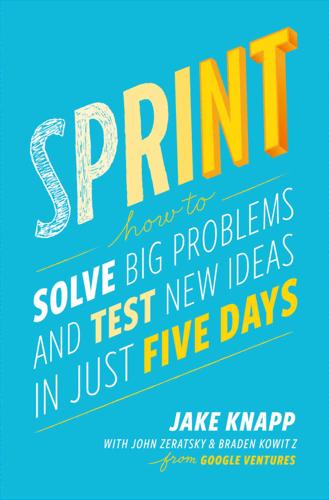
Sprint: How to Solve Big Problems and Test New Ideas in Just Five Days
by
Jake Knapp
,
John Zeratsky
and
Braden Kowitz
Published 8 Mar 2016
Unfortunately—say what you will about society—this unusual game with its emphasis on good behavior never caught on with a big audience. When it became obvious that Glitch wasn’t going to be a hit, the company did something strange. Instead of making a different game or closing down, they shifted their efforts to a side project: a messaging system they had originally built for their own use. The startup’s founder, Stewart Butterfield, had a hunch that this messaging system could be useful to other companies, too. So they launched it to the public, and named it Slack. Technology companies went bonkers for Slack. A year after launch, more than 500,000 people on more than 60,000 teams used Slack every single day.

The Invention of Air: A Story of Science, Faith, Revolution, and the Birth of America
by
Steven Johnson
Published 26 Dec 2008
In the popular folklore of American history, there is a sense in which the founders’ various achievements in natural philosophy—Franklin’s electrical experiments, Jefferson’s botany—serve as a kind of sanctified extracurricular activity. They were statesmen and political visionaries who just happened to be hobbyists in science, albeit amazingly successful ones. Their great passions were liberty and freedom and democracy; the experiments were a side project. But the Priestley view suggests that the story has it backward. Yes, they were hobbyists and amateurs at natural philosophy, but so were all the great minds of Enlightenment-era science. What they shared was a fundamental belief that the world could change—that it could improve—if the light of reason was allowed to shine upon it.
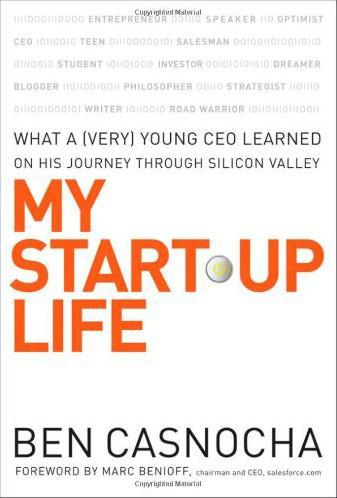
My Start-Up Life: What A
by
Ben Casnocha
and
Marc Benioff
Published 7 May 2007
In life-or-death situations. And you think you need more information?! Day 27. Set up a virtual office. Search for “Web 2.0 applications” online and start implementing tools to make you a mean, lean, 178 APPENDIX B virtual machine. Online: Tools that will make you lean and mean are available. Day 28. Have multiple side projects going. Diversify your portfolio of interests and activities. Day 29. Be funny. Humor can be scarce in a serious world. Be that guy people want to be around. Research humor and good oneliners. Online: Funny business: humor for the busy executive. Day 30. Make people feel like a million bucks. It all starts with people.
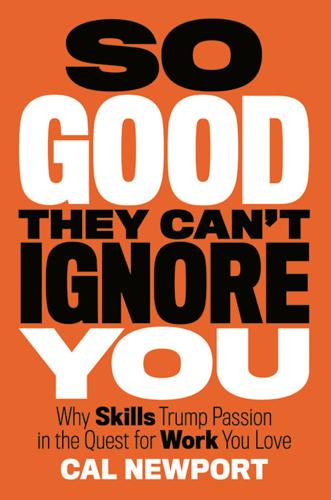
So Good They Can't Ignore You: Why Skills Trump Passion in the Quest for Work You Love
by
Cal Newport
Published 17 Sep 2012
He planned to go meet the people, hear their stories, and help explain how the principles of archaeology can lead them to figure out whether or not a medieval organization of knights was actually traipsing around the hills of Pittsburgh. Not only would he meet them but he would also film the encounters, with the eventual goal of producing a documentary on the most interesting case. He called the project The Armchair Archaeologist. He envisioned this side project taking five or ten years—something to work on alongside his filming in the Teotihuacan Valley. “I figured, at the very least, I could show it to the students in my intro archaeology classes,” he said. On a Sunday morning, not long after hearing the call about the Knights Templar treasure, Kirk gathered a cameraman and soundman, and headed out to Pittsburgh to investigate the claim.

Essentialism: The Disciplined Pursuit of Less
by
Greg McKeown
Published 14 Apr 2014
“One of the ways we think about this is,” he says, “could this person have been one of the founding members of the team?” If the answer is yes, he knows he’s found someone who will fit right in.2 Opportunity Knocks Being selective when deciding what opportunities to go after is one thing, but it can get even harder when opportunities come to us. We get a job offer we didn’t expect. A side project comes along that isn’t really what we do, but it is easy cash. Someone asks us to help out with something we love doing, but it is unpaid work. An acquaintance has a time share available in a less-than-ideal location but at a discounted rate. What do we do? The fear of missing out goes into full effect.
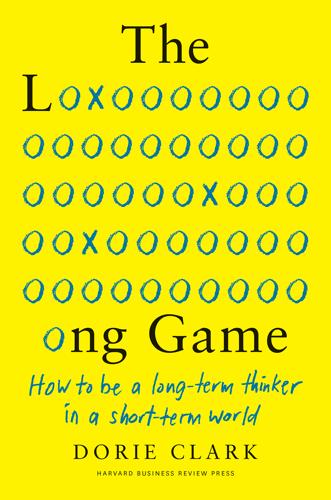
Long Game: How Long-Term Thinker Shorthb
by
Dorie Clark
Published 14 Oct 2021
Adam is pretty sure his work didn’t lead to anything earth-shattering. “In these 20% roles, you’re not in a position to direct much, or make big sweeping moves or anything,” he says. “It’s more of, ‘Hey, I’ll fill gaps. I’ll help where I can.’” But that’s OK. Besides his initial 20% project with the London team, he’s tackled myriad other interesting side projects. He worked with a colleague, using a “small team prototype budget” to create a fully immersive, 360-degree virtual experience to help businesses better understand the online experience of their customers. That project took off and has been used by thousands of customers internationally. Regardless of each project’s outcome, Adam kept volunteering and meeting new people.
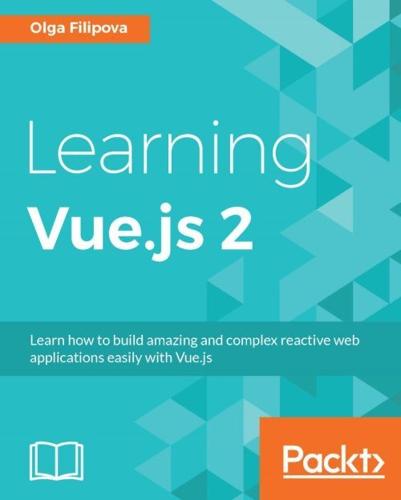
Learning Vue.js 2: Learn How to Build Amazing and Complex Reactive Web Applications Easily With Vue.js
by
Olga Filipova
Published 13 Dec 2016
According to Evan You, very soon, "Vue-inspired" will become "Vue-powered"! Just wait for it. Just stay tuned. I would like to recommend this amazing Full Stack Radio podcast, where Evan You talks about the new version of Vue: http://www.fullstackradio.com/50 . Vue has evolved a lot since its humble beginning as a side project. Today it is community funded, widely adopted in the real world, and boasts one of the strongest growth trends among all JavaScript libraries according to stats.js.org. We believe 2.0 is going to push it even further. It's the biggest update to Vue since its inception, and we are excited to see what you build with it. - Evan You, https://medium.com/the-vue-point/vue-2-0-is-here-ef1f26acf4b8#.fjxegtv98) With this in mind, if you are coming from the Vue 1.0 generation, it will not be hard for you to upgrade your applications.

Logically Fallacious: The Ultimate Collection of Over 300 Logical Fallacies (Academic Edition)
by
Bo Bennett
Published 29 May 2017
Contents Preface Introduction Reasoning Arguments Beliefs Fallacies On Reason and Rationality Collecting Fallacies Being a Smart-Ass Format and Style of this Book The Fallacies Accident Fallacy Ad Fidentia Ad Hoc Rescue Ad Hominem (Abusive) Ad Hominem (Circumstantial) Ad Hominem (Guilt by Association) Ad Hominem (Tu quoque) Affirmative Conclusion from a Negative Premise Affirming a Disjunct Affirming the Consequent Alleged Certainty Alternative Advance Appeal to Accomplishment Appeal to Anger Appeal to Authority Appeal to Celebrity Appeal to Common Belief Appeal to Common Folk Appeal to Coincidence Appeal to Consequences Appeal to Definition* Appeal to Desperation Appeal to Emotion Appeal to Extremes Appeal to Faith Appeal to Fear Appeal to Flattery Appeal to Force Appeal to Heaven Appeal to the Moon Appeal to Nature Appeal to Novelty Appeal to Pity Appeal to Popularity Appeal to Possibility Appeal to Ridicule Appeal to Tradition Ambiguity Fallacy Anonymous Authority Argument by Emotive Language Argument by Fast Talking Argument by Gibberish Argument by Personal Charm Argument by Repetition Argument from Age Argument from Fallacy Argument from Hearsay Argument from Ignorance Argument from Silence Argument of the Beard Argument to Moderation Avoiding the Issue Argument to the Purse Base Rate Fallacy Begging the Question Biased Sample Fallacy Blind Authority Fallacy Broken Window Fallacy Causal Reductionism Cherry Picking Circular Reasoning Commutation of Conditionals Complex Question Fallacy Conflicting Conditions Confusing an Explanation with an Excuse Conjunction Fallacy Conspiracy Theory Definist Fallacy Denying the Antecedent Denying a Conjunct Denying the Correlative Disjunction Fallacy Distinction Without a Difference Equivocation Etymological Fallacy Exclusive Premises Existential Fallacy Extended Analogy Failure to Elucidate Fallacy of Composition Fallacy of Division Fallacy of Four Terms Fallacy of Necessity Fallacy of (the) Undistributed Middle Fake Precision False Attribution False Conversion False Dilemma False Effect Far-Fetched Hypothesis Faulty Comparison Gambler’s Fallacy Genetic Fallacy God Wildcard Fallacy* Hasty Generalization Having Your Cake Hedging Historian’s Fallacy Homunculus Fallacy Hypnotic Bait and Switch Hypothesis Contrary to Fact If-By-Whiskey Illicit Contraposition Illicit Major Illicit Minor Illicit Substitution of Identicals Inconsistency Inflation of Conflict Jumping to Conclusions Just Because Fallacy* Just In Case Fallacy Least Plausible Hypothesis Limited Depth Limited Scope Logic Chopping Ludic Fallacy Lying with Statistics Magical Thinking Meaningless Question Misleading Vividness Missing Data Fallacy* Modal (Scope) Fallacy Moralistic Fallacy Moving the Goal Posts Multiple Comparisons Fallacy Naturalistic Fallacy Negative Conclusion from Affirmative Premises Negating Antecedent and Consequent Nirvana Fallacy No True Scotsman Non Sequitur Notable Effort Overwhelming Exception Package-Deal Fallacy Poisoning the Well Political Correctness Fallacy Post-Designation Prejudicial Language Proof by Intimidation Proving Non-Existence Quantifier-Shift Fallacy Quantum Physics Fallacy* Questionable Cause Rationalization Red Herring Reductio ad Absurdum Reductio ad Hitlerum Regression Fallacy Reification Relative Privation Retrogressive Causation Retrospective Determinism Scapegoating Selective Attention Self-Sealing Argument Shoehorning Slippery Slope Special Pleading Spiritual Fallacy* Spotlight Fallacy Statement of Conversion Stereotyping Stolen Concept Fallacy Strawman Fallacy Style Over Substance Subjectivist Fallacy Subverted Support Sunk-Cost Fallacy Suppressed Correlative Texas Sharpshooter Fallacy Tokenism Two Wrongs Make a Right Unfalsifiability Unwarranted Contrast Use-Mention Error Weak Analogy Willed Ignorance Wishful Thinking B-List Fallacies Abductive Fallacy Accent Fallacy (fallacy of prosody) Amazing Familiarity Ambiguity Effect Ambiguous Assertion Appeal to Closure (more specific form of argument from ignorance) Appeal to Coincidence Appeal to Complexity Appeal to Convenience Appeal to Luck (good or back luck) Appeal to Envy (Argumentum ad invidiam) Appeal to Equality Appeal to Intuition Appeal to Privacy Appeal to Stupidity Appeal to Utility Argument by Dismissal Argument by Laziness Argument by Pigheadedness Argument by Rhetorical Question Argument by Selective Reading Argument by Uniformed Opinion Argument from Design Argument from Inertia Argument from Omniscience Argument To The Future Argumentum ad Captandum Argumentum ad Exemplum (Argument to the Example) Barking Cat Big Lie Technique Blood is Thicker than Water (Favoritism) Bribery (Material Persuasion, Material Incentive, Financial Incentive) Burden of Proof Fallacy (onus probandi, shifting the) Chronological Snobbery Confesses Under Torture Contextomy Damning with Faint Praise Double Bind Double Standard Emphasis Fallacy Essentializing Fallacy Exaggeration Exception That Proves The Rule Failure to State Fallacy of Multiplication Fallacy of Opposition Fallacy of Quoting Out of Context Fallacy of the Crucial Experiment Fantasy Projection Faulty Sign Finish the Job Fallacy Galileo Wannabe Golden Hammer Fallacy Hifalutin' Denunciations I Wish I Had a Magic Wand In a Certain Respect and Simply Intentional Fallacy Invincible Ignorance Fallacy Knights and Knaves Lack of Proportion Latino Fallacy* Lies (Misrepresentation) Lip Service Lump of Labor Fallacy (Lump of Jobs Fallacy) Mind Projection Fallacy Monopolizing the Question Norm of Reciprocity Not Invented Here Outdated Information Packing the House Paralogism Paralysis of Analysis (Procrastination) Pigeonholing Pious Fraud Pragmatic Fallacy Preacher’s We Probabilistic Fallacy Psychologist's Fallacy Redefinition Reductionism Sanctioning the Devil Scope Fallacy Self-Deception Self-Fulfilling Prophecy Self-Righteousness Sherlock Holmes Fallacy Sly Suggestions Snow Job Sour Grapes Spin Doctoring Taboo Tautology There Is No Alternative Too Broad Too Narrow Undoability Weasel Wording Word Magic Top 25 Most Common Fallacies Bo's Original Fallacies About the Author Preface Several years back, while entering some kind of early-stage, intellectual, mid-life crisis, I became passionate about science, philosophy, and religion, which eventually led to my starting a debate website called DebateGod (http://www.debategod.org), as a way to help me understand how other people think, and come to the conclusions they do. What I never imagined, is that this little “side project” of mine would result in hours a day of evaluating arguments, reasoning, and logic, opening my eyes to a world of truth, hidden by a world of fallacious reasoning. But this discovery did not happen overnight. After years of what I considered eloquent defense of my positions, I found that I was getting nowhere (in part, because those with whom I was debating did not value logic and reason, but more on that later); despite my facts being correct.
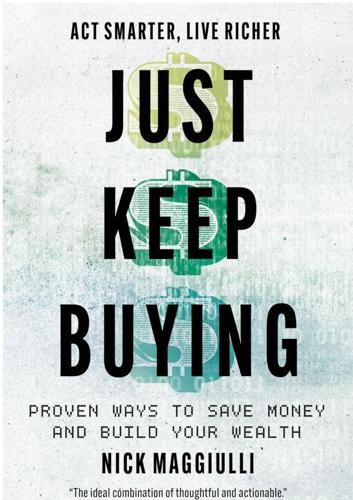
Just Keep Buying: Proven Ways to Save Money and Build Your Wealth
by
Nick Maggiulli
Published 15 May 2022
Take that work away and some people may find it difficult to find meaning elsewhere in their lives. Writer Julian Shapiro summarized this beautifully when discussing how his friends were affected by earning large amounts of money: “In observing friends who’ve sold startups and made millions: After one year, they’re back to toying with their old side projects. They used their money to buy a nice home and eat well. That’s it. They’re otherwise back to who they were.”⁵⁷ Do you think Zelinski, O’Leary, or Shapiro are lying? They aren’t. Deciding to retire is far more than just a financial decision, it is a lifestyle decision too. So, in order to know when you can retire, you need to figure out what you will retire to.

Exit Strategy
by
Sherry Walling, Rob Walling
Published 22 Nov 2024
Set expectations with the important people in your life about where your energy and attention will be over the next six to eighteen months. Even if you can’t share exactly what’s going on, you can tell them as much as needed to help them understand where you’re at. What positive activities (e.g., vacation, exit project, small celebrations) would you like to add to your tool kit? What hobby or side project might you use to distract yourself during the downtime? How will you set healthy boundaries around the different types of work you’ll need to do? How will you set clear boundaries between work and personal time? What is your current mental health routine? Do you meditate or practice mindfulness?
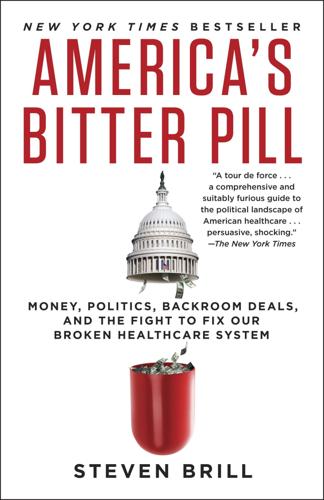
America's Bitter Pill: Money, Politics, Backroom Deals, and the Fight to Fix Our Broken Healthcare System
by
Steven Brill
Published 5 Jan 2015
For Obama, this economic angle was a handy argument to use against aides such as Emanuel, political guru David Axelrod, and Phil Schiliro, who was about to be put in charge of congressional relations. But, Obama later told me, his mind was already made up. “We didn’t have the luxury of working on just one big issue—the times demanded more,” he recalled. “I believed that reforming our health care system wasn’t a side project, but a vital part of rebuilding our economy.… It was clear that we couldn’t address the problem of the middle class falling behind in the long term, without taking on health care in the short term. And we had a once in a generation chance to do it.” “He was really into healthcare, all the nuances and details,” recalled Tom Daschle, the former Senate majority leader and healthcare policy aficionado who had become an Obama confidant.
…
And combined with a lot of other actions we’ve taken since then, helped put us on the longest stretch of uninterrupted private sector job creation in our history. We had to take action and we did. But America can do more than one thing at a time. And I believed that reforming our health care system wasn’t a side project, but a vital part of rebuilding our economy. My top priority has always been to restore the notion that America is a place where if you work hard, you can get ahead. And even before the crisis, few things were doing more to expose working families to economic insecurity than a broken health care system.

Likewar: The Weaponization of Social Media
by
Peter Warren Singer
and
Emerson T. Brooking
Published 15 Mar 2018
Where before, Israeli propaganda efforts had been tinged with fatalism, akin to U.S. soldiers speaking of narrative (“In the media we are going to lose the war . . . It doesn’t matter what we do,” one IDF spokesperson said), now the government drastically increased investment in hasbara online outreach. Just a year earlier, the IDF YouTube channel had been launched by a few soldiers in their twenties as a fun side project. By 2012, those same twenty-somethings held some of the most important positions in the Israeli armed forces. The @IDFSpokesperson Twitter account, the IDF’s official voice to the world, was the work of one energetic 26-year-old. “We turn it over to the kids, and they translate [our messages] into the new language of social media,” an IDF general marveled.
…
hc_ref=ARSF_77Y2ygZMxH_IB7KL9aJA6VMdCXGCoIXHsF87wYBVsRlyKmhs2IAKD5PNYWXeo4&fref=nf. 198 “My camera is my gun”: Tarunika Rajesh, “Meet 13-Year-Old Journalist Janna Jihad Who Records Her Messages from the World’s Most Dangerous War Zone,” Meaww, January 16, 2018, https://meaww.com/read/women/meet-13-year-old-journalist-janna-jihad-who-records-her-messages-from-the-worlds-most-dangerous-war-zone. 198 “upload the pictures”: “Digital Intifada,” Vice, March 24, 2016, https://news.vice.com/video/digital-intifada-full-length. 198 “I will attack you”: “Hebrew Music Video Glorifying the Killing of Israeli Jews Circulates on Palestinian Social Media,” Middle East Media Research Institute, July 28, 2017, https://www.memri.org/tv/hebrew-music-video-glorifying-killing-israeli-jews-on-palestinian-social-media. 198 most vulnerable arteries: “Social Media as a Platform for Palestinian Incitement—Part II: Video Tutorials, Tips for Achieving More ‘Effective’ Attacks,” Middle East Media Research Institute, October 14, 2015, https://www.memri.org/reports/social-media-platform-palestinian-incitement-%E2%80%93-part-ii-video-tutorials-tips-achieving-more. 198 posed their toddlers: “Social Media as a Platform for Incitement—Part III: Posting Pictures of Small Children Wielding Knives as Praise, Encouragement for Terrorism,” Middle East Media Research Institute, October 22, 2015, https://www.memri.org/reports/social-media-platform-incitement-%E2%80%93-part-iii-posting-pictures-small-children-wielding-knives. 198 #killajew: “Incitement to Violence Against Jews Spreads Online,” Anti-Defamation League, October 9, 2015, https://www.adl.org/blog/incitement-to-violence-against-jews-spreads-online. 198 “job to save my son”: “Digital Intifada.” 198 Jewish Internet Defense Force: Sharon Udasin, “Internet Activist No Friend of Facebook,” Jewish Week, September 29, 2009, http://jewishweek.timesofisrael.com/internet-activist-no-friend-of-facebook/. 199 hasbara fellowships: “Wikipedia, Israel and the Internet: Hasbara Fellowships,” Deconditioning Our Minds (blog), http://decondition.blogspot.com/2007/08/wikipedia-israel-and-internet.html. 199 “information directorate”: “Cabinet Communique,” Israel Ministry of Foreign Affairs, July 8, 2007, http://mfa.gov.il/MFA/PressRoom/2007/Pages/Cabinet%20Communique%208-Jul-2007.aspx. 199 fund an “internet warfare squad”: Rona Kuperboim, “Thought-Police Is Here,” Ynetnews, July 10, 2009, https://www.ynetnews.com/articles/0,7340,L-3744516,00.html. 199 Freedom Flotilla: Isabel Kershner, “Israel Intercepts Gaza Flotilla; Violence Reported,” New York Times, May 30, 2010, http://www.nytimes.com/2010/05/31/world/middleeast/31flotilla.html. 199 a bloody boarding: Noah Schactman, “Israel Turns to YouTube, Twitter After Flotilla Fiasco,” Wired, June 1, 2010, https://www.wired.com/2010/06/israel-turns-to-youtube-twitter-to-rescue-info-war/. 199 “They tried to block”: Gilad Lotan, phone interview with author, November 7, 2014. 199 “we are going to lose”: Joshua Mitnick, “Gaza Aid Flotilla: Why Israel Expects to Lose the PR War,” Christian Science Monitor, May 28, 2010, https://www.csmonitor.com/World/Middle-East/2010/0528/Gaza-aid-flotilla-Why-Israel-expects-to-lose-the-PR-war. 199 a fun side project: Noah Schactman, “Israel’s Accidental YouTube War,” Wired, January 21, 2009, https://www.wired.com/2009/01/israels-acciden/; Allison Hoffman, “The ‘Kids’ Behind IDF’s Media,” Tablet, November 20, 2012, http://www.tabletmag.com/jewish-news-and-politics/117235/the-kids-behind-idf-media. 199 one energetic 26-year-old: Hoffman, “The ‘Kids’ Behind IDF’s Media.” 199 “I say it’s magic”: Ibid. 199 “join the international”: “Join the International Social Media Desk,” IDF Blog, Israeli Defense Forces, https://web.archive.org/web/20170129003601/https://www.idfblog.com/join/. 199 “Create.
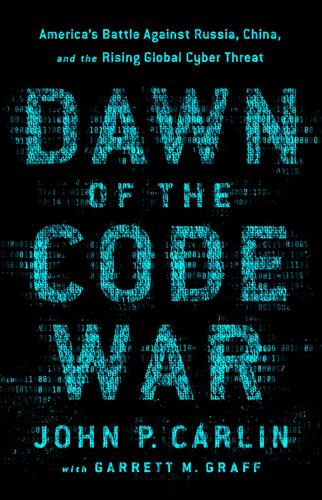
Dawn of the Code War: America's Battle Against Russia, China, and the Rising Global Cyber Threat
by
John P. Carlin
and
Garrett M. Graff
Published 15 Oct 2018
The clean-and-neat analysis that we saw in intelligence, though, often belied the messier situations we saw as we dove into the hacker networks themselves. The macroanalysis of the US government and international community didn’t accurately reflect how fungible the lines were on the Chinese side. We came to understand that many government hackers, for instance, worked their own side projects—sometimes in the evening, sometimes even during the workday or during their lunch hours—doing criminal financial attacks or taking bribes to go after specific targets or to meet certain performance metrics that would reflect well on their bosses. Hackers used the technical infrastructure set up for military hackers, which existed outside of the Great Firewall, to further their own projects on the open web—smuggling and laundering money out of the mainland or simply using their own social media profiles outside of China’s normal restrictions.
…
But security researchers noticed something else when they examined hop points: the hackers used these hop points for a lot of mundane activity, too, stuff that perhaps they didn’t want to be traced right to their work computers. They checked email, monitored their stock portfolios or investments, and, of course, looked at porn and other not-safe-for-work content. They also ran a lot of “side projects” off the hop points, engaging in criminal frauds or schemes through the hijacked network. Hop points were a good way to save money, too: sometimes you could even catch a hacker using them to conduct activities like Bitcoin mining, relying on the processors of the hijacked computers to earn cryptocurrency and force someone else to bear the cost of the electricity, making the Bitcoin for the hacker pure profit.
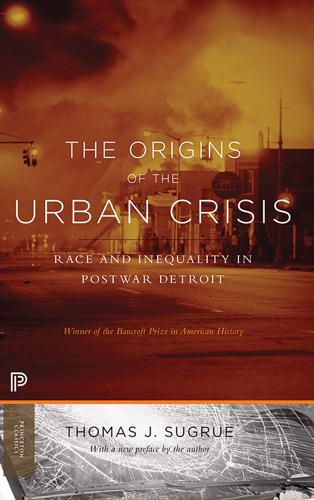
The Origins of the Urban Crisis
by
Sugrue, Thomas J.
City officials, desperately hoping to avoid racial bloodshed, had no choice but to take seriously the specter of civil disorder. 3.4. Public housing for African Americans was scarce and the waiting lists to get in were enormous. Shown is one of the first black families to move into the Sojourner Truth Homes in 1942. The low-rise Northeast Side project was spartan, but it provided a modern, clean alternative to the overcrowded inner city. Suburban Resistance to Public Housing During the war, the opposition of suburban communities to public housing greatly limited the options available to reformers. FPHA projects proposed for Ecorse and Dearborn, which allowed easy access to the Ford Rouge complex and other factories in the Dearborn and Downriver industrial areas, met with stiff resistance from suburban mayors.
…
For a history of the West Side Industrial Project, see Robert J. Mowitz and Deil S. Wright, Profile of a Metropolis: A Case Book (Detroit: Wayne State University Press, 1962), 81–139; June Manning Thomas, “Neighborhood Response to Redevelopment in Detroit,” Community Development Journal 20 (April 1985): 89–98. 44. Compare the fate of the West Side project with those of celebrated redevelopment projects in the 1970s and 1980s. See for example: David Fasenfest, “Community Politics and Urban Redevelopment: Poletown, Detroit, and General Motors,” Urban Affairs Quarterly 22 (1986): 101–23; Jeanie Wylie, Poletown: Community Betrayed (Urbana: University of Illinois Press, 1989); “Detroit Journal: Jobs Oasis Is Created But Price Was High,” New York Times, April 25, 1992 (on the Chrysler Jefferson North Assembly Plant). 45.
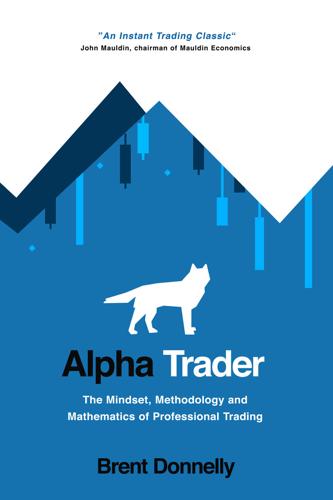
Alpha Trader
by
Brent Donnelly
Published 11 May 2021
Workout 2 p.m. to 3 p.m. (biceps and back) 5. $ at risk (if you use a daily stop loss, how much are you risking today?) 6. Side projects (stuff you can do when the market is dead—reading, research, spreadsheet building, Python, etc.). Having a few of these at the ready will help you stay productive instead of sitting there when it’s quiet going, “Hmm, what should I do?” or flicking through The Daily Mail. If you do your daily plan in Excel, you can carry over whatever side projects you did not complete yesterday into today’s Daily Plan. Try not to trade until all items on your Daily Plan have been filled in.

Hit Refresh: The Quest to Rediscover Microsoft's Soul and Imagine a Better Future for Everyone
by
Satya Nadella
,
Greg Shaw
and
Jill Tracie Nichols
Published 25 Sep 2017
Mark Russinovich, who was an early member of the Red Dog team and the current CTO of Azure, had a clear road map in mind to evolve Azure. We needed to infuse more resources into the team to execute on that road map. It was time to move Azure into the mainstream of STB rather than have it be a side project. People, the human element of any enterprise, are ultimately the greatest asset, and so I set about assembling the right team, starting with Scott Guthrie, a very accomplished Microsoft engineer. He had spearheaded a number of successful company technologies focused on developers. I tapped him to lead engineering for Azure on its way to becoming Microsoft’s cloud platform—our answer to Amazon Web Services.
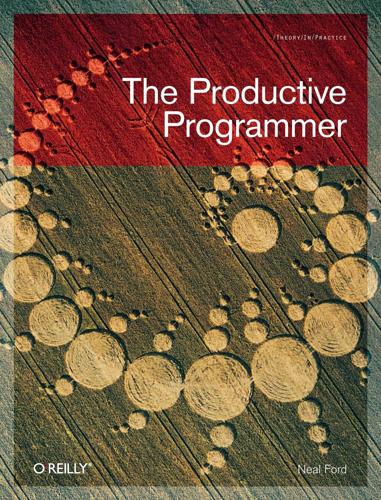
The Productive Programmer
by
Neal Ford
Published 8 Dec 2008
At the end of a timebox, you may decide to use another one to find out more. I know that the clever automation task is more interesting than your project work, but be realistic. Your boss deserves real estimates. NOTE Timebox speculative development. Don’t Shave Yaks Finally, don’t allow your automation side project to turn into yak shaving. Yak shaving is part of the official jargon file for computer science. It describes this scenario: 1. You want to generate documentation based on your Subversion logs. 2. You try to add a Subversion hook only to discover that the Subversion library you have is incompatible and therefore won’t work with your web server. 3.

The Accidental Billionaires: The Founding of Facebook: A Tale of Sex, Money, Genius and Betrayal
by
Ben Mezrich
Published 13 Jul 2009
And since most of the advertisers the facebook was chasing after were based in New York anyway, didn’t it make sense for him to take the internship, and work on thefacebook during his spare time? Before Eduardo had even been able to bring up the idea with Mark, Mark had dropped a bombshell of his own; although thefacebook was his priority as well, he’d started developing a side project called Wirehog with a couple of his computer programming buddies—Adam D’Angelo, his high school friend with whom he’d invented Synapse, and Andrew McCollum, a classmate and fellow CS major. Wirehog was basically a bastard child of Napster and Facebook, a sort of file-sharing program with a social network feel.
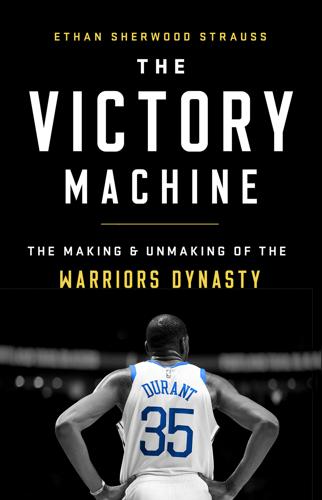
The Victory Machine: The Making and Unmaking of the Warriors Dynasty
by
Ethan Sherwood Strauss
Published 13 Apr 2020
In this instance, Jackson’s firing validated Lacob’s hands-on approach to ownership. “Joe is very involved in the day-to-day stuff that we do, which is good,” Warriors assistant GM Larry Harris said over the phone. “He’s very engaged.” On draft night, Joe is in the war room, invested alongside his Ops hires. The Golden State Warriors are not a lavish side project for him. Not all in Ops like to admit it, but you usually need pressure from the top. An absence of it creates a power vacuum and power vacuums lead to destabilizing power struggles. This was the state of the Warriors under former owner Chris Cohan. At various times, nobody knew where the power resided, and constant chaos ensued.
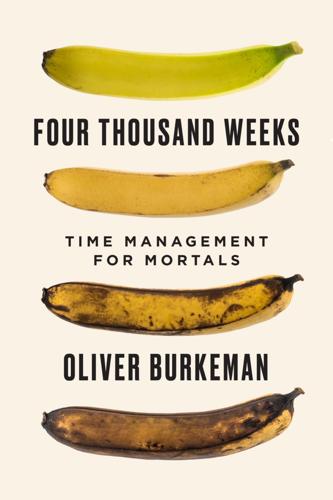
Four Thousand Weeks: Time Management for Mortals
by
Oliver Burkeman
Published 9 Aug 2021
What I had yet to understand, at that point, was why all these methods were doomed to fail, which was that I was using them to try to obtain a feeling of control over my life that would always remain out of reach. Though I’d been largely unaware of it, my productivity obsession had been serving a hidden emotional agenda. For one thing, it helped me combat the sense of precariousness inherent to the modern world of work: if I could meet every editor’s every demand, while launching various side projects of my own, maybe one day I’d finally feel secure in my career and my finances. But it also held at bay certain scary questions about what I was doing with my life, and whether major changes might not be needed. If I could get enough work done, my subconscious had apparently concluded, I wouldn’t need to ask if it was all that healthy to be deriving so much of my sense of self-worth from work in the first place.
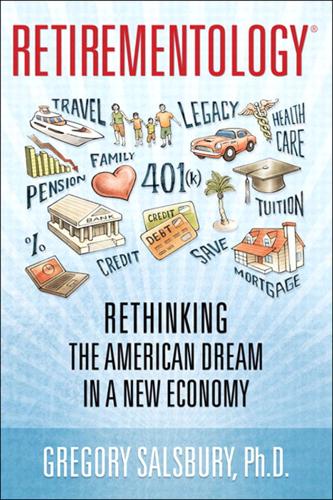
Retirementology: Rethinking the American Dream in a New Economy
by
Gregory Brandon Salsbury
Published 15 Mar 2010
Know what your sources of income will be, ranging from pensions to Social Security to investments, and make sure you have a plan that can provide money for your entire lifetime. Work with an adviser to help you take a solid aim at your retirement dreams. Run the Numbers When evaluating alternative courses of action, there is no substitute for running the numbers. Your adviser or accountant can run a side-by-side projection of the expected tax result. This is commonly used to evaluate the potential benefit of one tax strategy over another. Projections should be updated frequently using current data and reliable estimates. Trying to predict the outcome of a particular strategy without running the numbers may be problematic.
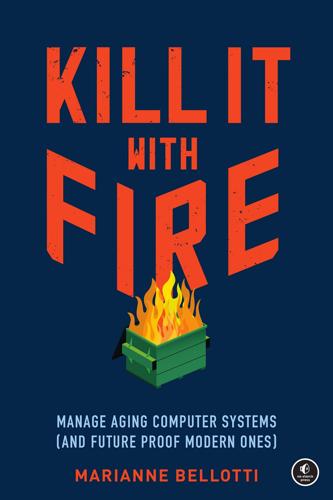
Kill It With Fire: Manage Aging Computer Systems
by
Marianne Bellotti
Published 17 Mar 2021
When looking for bad technology, debt, or security issues, the most productive places to mine are gaps between what two components of the same organization officially own. Organizations tend to have responsibility gaps in the following areas: So-called 20 percent projects, or tools and services built (usually by a single engineer) as a side project. Interfaces. Not so much visual design but common components that were built to standardize experience or style before the organization was large enough to run a team to maintain them. New specializations. Is the role of a data engineer closer to a database administrator or a data scientist?

Spike: The Virus vs The People - The Inside Story
by
Jeremy Farrar
and
Anjana Ahuja
Published 15 Jan 2021
It was while we were in Davos that China locked down Wuhan. Stéphane ran into us the next morning, saying ‘Jeez, I don’t remember any government shutting down a city of that size – ever. What does the Chinese government know that we don’t know?’ That was when he knew Moderna had to get serious about its hastily convened side-project. He was meant to be in Germany the weekend after Davos for a business meeting but woke up in a sweat one night, convinced he had to change plans. Stéphane cancelled, sent his apologies and asked his assistant to book him a one-way ticket to Washington DC. He arranged back-to-back meetings in DC with: Tony Fauci; John Mascola, head of the Vaccine Research Centre at the National Institutes of Health (NIAID comes under the NIH umbrella); and John’s deputy Barney Graham, who would fix up the vaccine trials.
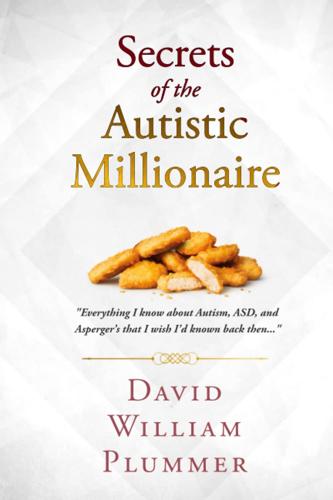
Secrets of the Autistic Millionaire: Everything I Know Now About Autism and Asperger's That I Wish I'd Known Then
by
David William Plummer
Published 14 Sep 2021
Microsoft was surprisingly accommodating of such matters, with the one exception being if your “moonlighting” were too closely related to your day job. If, for example, you knew trade secret information that the public did not have access to, you obviously couldn’t take advantage of it. If there were any question as to whether the side project was too closely related to your day job, the permission would have to come from very high on up –– perhaps a Senior Vice President or above. My ZIPFolders app was not the only one out there like it, and when one of my competitors discovered that I worked at Microsoft, they took great objection to it and somehow contacted a developer in my own division who was, at the time, quite senior to me.

Microchip: An Idea, Its Genesis, and the Revolution It Created
by
Jeffrey Zygmont
Published 15 Mar 2003
"I explained what some of my concerns were, and I said I thought there might be some ways to improve the Common Ground 113 design. And he said, 'Well, if you think there's a way, why not? Go ahead and pursue it.' He said, 'It's always nice to have an insurance policy.'" Hoff squeezed in the design rehab as a side project, fitting it among his regular obligations as manager of applications research. His computer studies at Stanford had prepared him well for the task. In fact, at Intel at the time Hoff was uniquely qualified for the undertaking. He was about the only researcher who knew how to set up the dominoes to fall logically inside a computer.
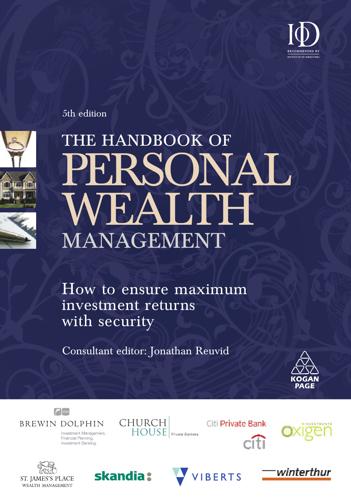
The Handbook of Personal Wealth Management
by
Reuvid, Jonathan.
Published 30 Oct 2011
ɀ A conservative level of mortgage, to ensure that the property is not too highly geared (this may no longer be a choice) ɀ Good asset management companies to ensure the safety of your property investment ɀ Presence of a healthy rental market - be it in tourism (through which hotels, restaurants, individual short let property owners benefit) or the services sector ( i.e. leased buildings, front offices, yacht marinas, ski resorts) ɀ Feasibility study to ensure the long term sustainability of the project ɀ Ultimately one should assess capital returns against the initial investment and cost of purchase. On the commercial side, projects in the leisure industry in major Cities and ski resorts would enhance an asset investment fund. Sea side resorts are limited to upmarket areas where yacht marinas are in high demand. Due diligence could be a lengthy process and even more so in this cautious environment. This is a trying time since while spending time and money on researching an asset, one can be out bid by another buyer.
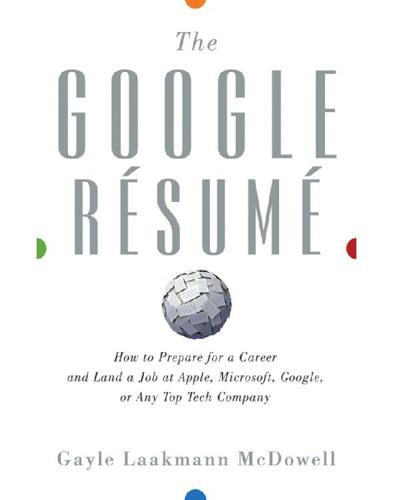
The Google Resume: How to Prepare for a Career and Land a Job at Apple, Microsoft, Google, or Any Top Tech Company
by
Gayle Laakmann Mcdowell
Published 25 Jan 2011
Take a lesson from them and have your desk discreetly cleared out before you talk to your manager. Should I Find a New Job First? When I left Google, I didn’t know exactly what I was going to do next. People thought I was crazy to not have a specific job lined up. I wasn’t. I wanted to take several months to travel, work a bit on some side projects, and then find a start-up to join. Eventually. Once I found one I liked enough. I was in no rush. There are some downsides, of course, to not finding a job first. First, you may lose some negotiating leverage if you’re desperate for a job. Second, you might not be able to afford taking several months off without pay, and you may therefore get pressured into taking a mediocre new job.

Getting a Job in Hedge Funds: An Inside Look at How Funds Hire
by
Adam Zoia
and
Aaron Finkel
Published 8 Feb 2008
I also monitor daily profit and loss in our hedge fund; contact underlying hedge funds for monthly returns for our fund of funds; monitor cash flows available for additional investment (we use multiple bank accounts and banks); deal with auditors, fund administrators, and legal contacts to help produce the financial and capital statements; and deal with tax issues (K-1 statements). I also do midmonth return analysis for large investors and additional analysis and side projects for our CFO. c09.indd 117 1/10/08 11:09:58 AM 118 Getting a Job in Hedge Funds My advice to any undergrads interested in hedge funds would be to try to pinpoint exactly what they enjoy doing—accounting, selling, investments, marketing, and so on. A lot of young people I meet have a big-picture idea of what they want to do, but seem to have trouble focusing and drilling down to what they really like to do.

Whiplash: How to Survive Our Faster Future
by
Joi Ito
and
Jeff Howe
Published 6 Dec 2016
They considered an approach that would have used magnetic beads to open ion channels within individual neurons. Soon, however, Boyden discovered research that would lead him down a very different path to the same goal—using light-sensitive proteins called opsins to “pump ions into or out of neurons in response to light.”8 Side projects being what they are, some years passed before Deisseroth and Boyden revisited their original idea to activate individual neurons. By 2004, Deisseroth was a postdoc, and he and Boyden decided to obtain a sample of an opsin and begin research. That August, Boyden went into the lab, put a dish of cultured neurons into the microscope, and triggered the program he had written to pulse blue light at the neurons.

Discardia: More Life, Less Stuff
by
Dinah Sanders
Published 7 Oct 2011
To get a better place to live, write down your minimum requirements and nice-to-have's. Take a good hard look at your budget and see what you can really afford. Start to save for the first month and security deposit. Weed out stuff you don’t want to take to your new place. To achieve more progress on your side projects, make sure you’re set up for success. Pull together your support materials and create an always-ready workspace. Eliminate distractions. Start, every day—even if it’s only for 15 minutes’ progress. Concentrate on a big goal and find one thing that you can do to bring it closer to reality.

Food Trucks: Dispatches and Recipes From the Best Kitchens on Wheels
by
Shouse, Heather
Published 19 Apr 2011
They’re snaking through the Liberty long enough to buy a bottle of Lone Star, then beelining for the back patio, where a tiny camping trailer sits at the edge of the fence. Covered in abstract bursts of Day-Glo-bright paint, the trailer looks like the spaceship that fel out of the sky to deliver George Clinton. It’s not. It’s actual y the side project of two supremely talented local chefs who met at the famed contemporary Japanese restaurant Uchi. Paul Qui is a native of the Philippines but was raised in the States and has been in Austin since coming for culinary school in 2002. Moto Utsonomaya, who is Japanese, left his country just after his twenty-first birthday to join up with the Texas Eastside Kings, an electric blues band that’s been gigging around the South for decades, backing legends that rol through town and cutting records here and there.
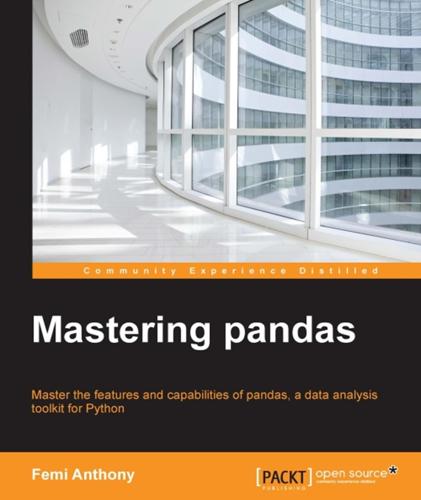
Mastering Pandas
by
Femi Anthony
Published 21 Jun 2015
He has worked in both the Internet space and financial services space for many years and is now working for a well-known financial data company. He holds a bachelor's degree in mathematics with computer science from MIT and a master's degree from the University of Pennsylvania. His pet interests include data science, machine learning, and Python. Femi is working on a few side projects in these areas. His hobbies include reading, soccer, and road cycling. You can follow him at @dataphanatik, and for any queries, contact him at <femibyte@gmail.com>. First and foremost, I would like to thank my wife, Ene, for her support throughout my career and in writing this book. She has been my inspiration and motivation for continuing to improve my knowledge and helping me move ahead in my career.
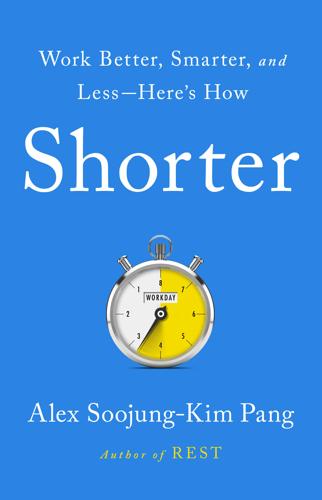
Shorter: Work Better, Smarter, and Less Here's How
by
Alex Soojung-Kim Pang
Published 10 Mar 2020
In Sydney, Insured by Us people and culture head Georgina Robilliard and a friend run a catering business called the Cheese Pair, while Kester Black’s graphic designer does freelance work to build her portfolio and aims to launch her own studio. Given that Ross started Kester Black in her bedroom while working another job, she sees the ability to do those kinds of side projects as “a great freedom to pass on to my staff.” At Aizle, people are using their extra day to get back in shape. Stuart Ralston started running. “I’ve lost, like, twenty pounds already,” he tells me. “Every single member of staff has begun to exercise,” Jade Johnston says. “You see a big transformation in your life schedule and when you feel motivated and excited, you work so much better.”

Uncanny Valley: A Memoir
by
Anna Wiener
Published 14 Jan 2020
My coworkers had warned me that the CTO was inscrutable and reticent, but after a few minutes I wondered how hard any of them had tried. I was surprised to find that he had a dark, sarcastic sense of humor. We had more in common than I would have guessed: compulsive reading habits; insomnia. While I usually spent sleepless nights staring at the ceiling and worrying about my loved ones’ mortality, he worked on programming side projects. Sometimes he just passed the time between midnight and noon playing a long-haul trucking simulator. It was calming, he said. There was a digital CB radio through which he could communicate with other players. I pictured him whispering into it in the dark. The thought of him awake at three in the morning, barreling down a digital highway, fiddling with the controls in a digital cab, patching through to strangers, made me wonder how he would fare in Brooklyn, around people who might appreciate or encourage his curiosity about things other than code.
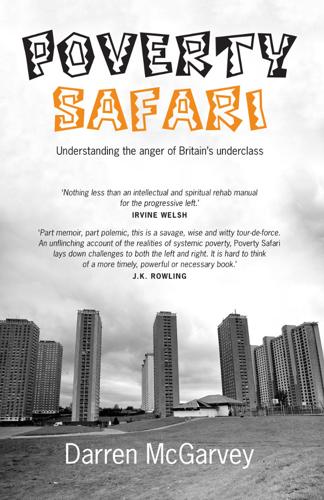
Poverty Safari: Understanding the Anger of Britain's Underclass
by
Darren McGarvey
Published 2 Nov 2017
I am grateful to all of you for affording me the time and space to write Poverty Safari – your support has been a point of light in moments when my confidence has dimmed, allowing me to find my way through a thick wood of self-doubt while embarking on my first year of fatherhood – my son, Daniel, being the greatest gift of all. Finally, thank you to my father, who always believed I could be a writer. You might be right. X Darren McGarvey, July 2017 Preface THIS BOOK, WHICH began as a side project to my work as a rapper and columnist, slowly consumed every waking moment of my life until eventually I had to draw down or stop all my other commitments to get it finished. It has taken over a year and a half to complete. On 14 June 2017, two days before my final deadline, I awoke to news of a fire in a tower block in west London.
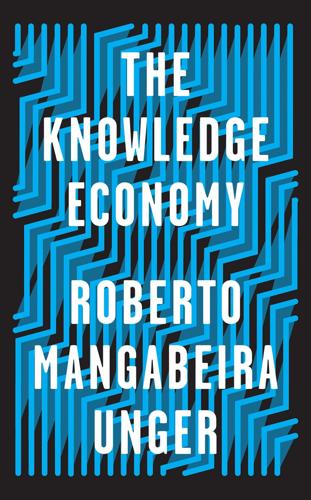
The Knowledge Economy
by
Roberto Mangabeira Unger
Published 19 Mar 2019
Second, as contemporary progressives and rightwing populists envision no alternative market regime, they can have no transformative approach to the supply side of the economy. Progressives have largely abandoned the supply side to conservatives and resigned themselves to the primacy of demand-oriented policies. The supply-side project of populist as well as traditional (classical-liberal or neoliberal) conservatives has been the preservation or restoration of a market order whose legal and institutional content they take to be self-evident. They misrepresent any attempt to reshape economic institutions as governmental intervention in the economy and fail to distinguish between suppressing the market and remaking it.

Building the Cycling City: The Dutch Blueprint for Urban Vitality
by
Melissa Bruntlett
and
Chris Bruntlett
Published 27 Aug 2018
During his postdoctoral studies, he took on the enviable task of analyzing bike– train records to answer two questions: Can you create an accurate model that reflects the differences between the bike–train combination and any other merging of transportation modes? And why is that relevant? Up to that point, no one had ever really taken a hard look at the synergy between cycling and public transit, and while this study started as a mere side project from a broad national research program, it quickly became a focal point because of the incredibly valuable and interesting dynamics he uncovered among public transit (in particular trains), cycling, and land use. “It’s quite difficult to fill in multimodal trips: short walking trips, short biking trips, or various combinations in a data survey.
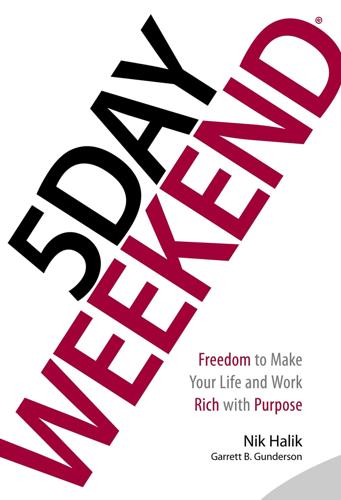
5 Day Weekend: Freedom to Make Your Life and Work Rich With Purpose
by
Nik Halik
and
Garrett B. Gunderson
Published 5 Mar 2018
This is done through four key disciplines: strengthening your mindset, building your inner circle, fortifying your habits, and amplifying your energy. When most people start out, most if not all of their income is active. To shift to more passive income streams, resources are required to invest. You start by creating as much discretionary, investable income as possible from your existing resources. Next, you start side projects to increase your income. Once you’ve put enough money together, you start investing. You start by investing in yourself. If you have less than $5,000, invest in yourself by seeking mentoring, taking courses, and reading books. As your knowledge increases, you’ll be surprised by the investment opportunities that arise for you.
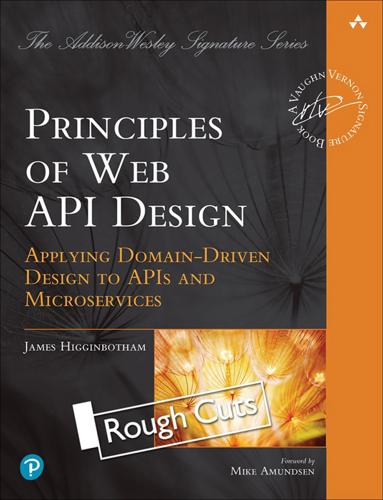
Principles of Web API Design: Delivering Value with APIs and Microservices
by
James Higginbotham
Published 20 Dec 2021
Unprotected APIs are an open door that welcome attackers to damage an organization and its customers. An API protection strategy involves the implementation of the right components, selection of an API gateway solution, and integrating an identity and access management to tie it all together. Don’t leave API protection to someone’s side project or to a well-intentioned team within the organization. Select the right approach with vendor-supported components that ensure that the front door of the organization’s APIs is barred shut rather than left unlocked. 16. Continuing the API Design Journey When done effectively, governance can provide clear direction, remove obstacles, and allow different parts of the organization to function independently.
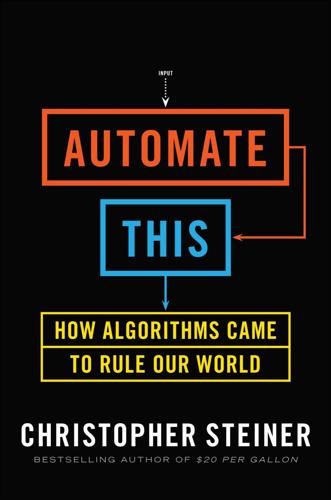
Automate This: How Algorithms Came to Rule Our World
by
Christopher Steiner
Published 29 Aug 2012
Wall Street, he explains, exists to do one thing: get in between every single financial transaction it can. Before Citi, Mehta wrote code at Merrill Lynch and J.P. Morgan. The fact that on Wall Street all he would ever be was a middleman, albeit a well-paid middleman, used to keep him up at night. He began working on a side project, an app called MyCityWay, which allows urban dwellers to easily navigate restaurants, movie theaters, bars, traffic—anything that affects their life every day. When he reached his limit of writing code for Citi, Mehta quit and worked unpaid on his app. He and his cofounders now have fifty employees and their app has been released in seventy cities, thirty of them overseas.
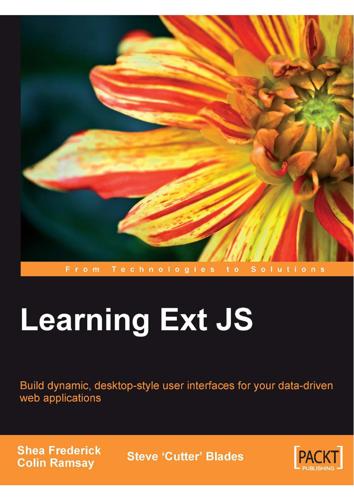
Learning Ext Js
by
Shea Frederick
Published 19 Dec 2008
Cutter then took the position of IT Director for Seacrets, a large resort destination in Ocean City, Maryland, while also holding the same position for one of its owner's other companies, Irie Radio. Now, Cutter is the Senior Web Developer for Dealerskins, a company that develops and hosts websites for the automobile dealership industry. He lives and works in Nashville, Tennessee with his wife Teresa and daughter Savannah. Apart from work, side projects, and maintaining his blog (http://blog. cutterscrossing.com), Cutter also enjoys spending time with his family, is an avid reader and a videophile, and likes to relive his band days with a mic in hand. I would like to thank a few people for their support while I have been working on this project.
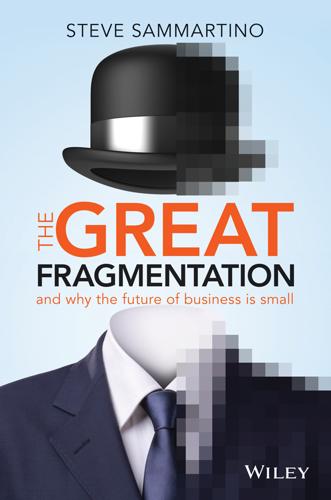
The Great Fragmentation: And Why the Future of All Business Is Small
by
Steve Sammartino
Published 25 Jun 2014
The first phase of his ‘adult' career was in marketing, working his way into senior executive roles in global consumer goods companies and advertising agencies. He escaped his cubicle for the first time in 2005 and went on to found rentoid.com — a peer-to-peer renting portal that became a leader in the collaborative consumption movement. After a successful exit he embarked on a number of crazy side projects including putting a Lego space shuttle into actual orbit, building a jet-powered bicycle, and crowdfunding the build of a full-size Lego car that runs on air and uses an engine made of Lego — all to prove what's possible in a connected world with low cost technology. He does some serious stuff too.

Tubes: A Journey to the Center of the Internet
by
Andrew Blum
Published 28 May 2012
They range from behemoths like JPNAP in Tokyo, which posts astonishingly high traffic numbers but primarily serves intra-Japan communication; to the decidedly smaller Yellowstone Regional Internet Exchange, YRIX, which links together seven networks in Montana and Wyoming (curing them of their “Denver problem”). There’s the MIX in Milan, the SIX in Seattle, the TORIX in Toronto, MadIX in Madison, Wisconsin, and—the solution to Minnesota’s Chicago problem—the MICE, the Midwest Internet Cooperative Exchange. The vast majority of exchanges exist out of sight, often run as cooperative side projects for the “good of the Internet,” and, despite their efforts at outreach, are known and appreciated only by the handful of network engineers who craft the routes across them. But the largest Internet exchanges are different beasts altogether. Their participants aren’t public-spirited groups of network engineers, but the Internet’s biggest players globally.

Ansible: Up and Running: Automating Configuration Management and Deployment the Easy Way
by
Lorin Hochstein
Published 8 Dec 2014
If any code samples or other technology this work contains or describes is subject to open source licenses or the intellectual property rights of others, it is your responsibility to ensure that your use thereof complies with such licenses and/or rights. 978-1-491-91532-5 [LSI] Foreword Ansible started as a simple side project in February of 2012, and its rapid growth has been a pleasant surprise. It is now the work product of about a thousand people (and the ideas of many more than that), and it is widely deployed in almost every country. It’s not unusual in a computer meet-up to find a handful (at least) of people who use it.
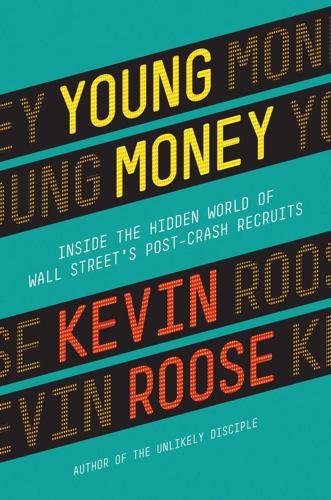
Young Money: Inside the Hidden World of Wall Street's Post-Crash Recruits
by
Kevin Roose
Published 18 Feb 2014
She took long lunch breaks, went on long walks around Midtown during work hours, and started using her spare time to open her notebook and sketch logos for imaginary businesses she wanted to start. Chelsea had always been an entrepreneurial spirit—she’d written a half-dozen business plans in college, and was always talking about some side project she was working on—and she couldn’t believe she’d locked herself into a job that placed her at the mercy of such inflexible and unforgiving bosses, doing work in which her creativity was severely undervalued. After hearing Chelsea detail her woes, I began thinking about the kinds of young people I’d seen flourish in finance—the ones who seemed genuinely happy with their careers.

The Startup Wife
by
Tahmima Anam
Published 2 Jun 2021
We are not solving a problem, at least not one that anyone has identified as important or, crucially, an opportunity to get rich. I ask Li Ann. She’s launched apps before, and she knows how to raise money—after all, she’s the one who got all those bigwigs to fund Utopia’s endowment in the first place. Aside from running the selection committee, she spends her time on little side projects—“The afterworld is going to need a few frills,” she tells us. Right now she’s working on something she calls Spoken, a filter that scans emails to make sure the language isn’t accidentally triggering or offensive. “Everyone can sound woke,” she says. “No matter how old they are.” Li Ann’s office faces west, with a full bank of windows overlooking the water.

Sarah Millican--The Queen of Comedy
by
Tina Campanella
Published 14 Apr 2017
Elisabeth Mahoney, from The Guardian, found the show quite funny, but hit the nail on the head when she said that the listener had to stay very focused, as the four-way dialogue could be confusing because it covered a comprehensive sweep of topics. It was a rocky start, but Sarah’s presence as a regular guest during series one and two certainly lifted it. However, Sarah’s dulcet tones were about to dominate the airwaves in a completely different show – one she was infinitely more suited to. Occasional guest spots would now become a side-project for Sarah, because she had been given her own Radio 4 slot. Sarah Millican’s Support Group was born. It wasn’t the first time Sarah had written for Radio 4. In 2008, after her first Fringe Show had been so well-received, Millican had penned a one-off special for the station, called Keeping Your Chins Up.
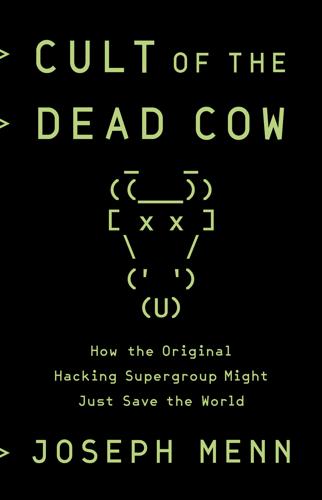
Cult of the Dead Cow: How the Original Hacking Supergroup Might Just Save the World
by
Joseph Menn
Published 3 Jun 2019
The latter ended up being a better deal, and Veracode sold itself in 2017 to CA Technologies, formerly known as Computer Associates, for $614 million. It was sold and resold in the following year, the last time for $950 million. Once installed in his new corporate home, Christien could spend more time on a side project called Hailstone, which allows developers to test their code for security flaws as they write. While Veracode typically cost $10,000 a year, they could try Hailstone free. He quit Veracode entirely in March 2019. The largest proportion of Cult of the Dead Cow members wound up working at tech companies with people who didn’t know their history.

The Globotics Upheaval: Globalisation, Robotics and the Future of Work
by
Richard Baldwin
Published 10 Jan 2019
It’s a computer program, accessible for free online, that uses Facebook Messenger to interview you about your traffic tickets. It then instantly spits out legal advice and documents showing how you could beat the ticket. It was created by a very interesting young British man. “When I started driving at 18, I began to receive a large number of parking tickets and created the DoNotPay as a side project. I could never have imagined that just over a year later, it would successfully appeal over 250,000 tickets.” According to an interview in Forbes, Joshua Browder, who taught himself computer programming at the age of twelve, only worked on DoNotPay between midnight and three in the morning.32 He is now a twenty-something studying law at Stanford University.
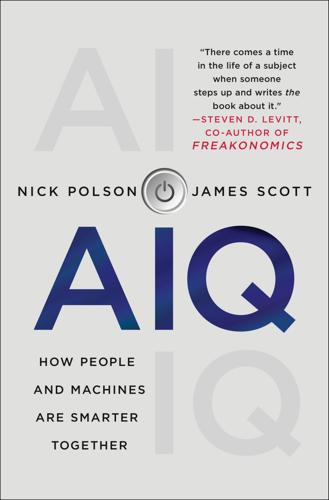
AIQ: How People and Machines Are Smarter Together
by
Nick Polson
and
James Scott
Published 14 May 2018
Data scientists at Salesforce recently developed a similar program that can accurately summarize long articles to help the company’s employees digest news reports more quickly. And as two academics who’ve suffered the slings and arrows of peer review, we were not at all surprised to learn of an algorithm created by researchers at the University of Trieste—one that wrote fake peer reviews good enough to fool real journal editors.1 Then there’s the side project of software developer Andy Herd, who trained a neural network with a bunch of scripts from Friends, the popular 1990s sitcom, to see what kind of new episodes it might write. Sure, the results are nonsense, but they’re remarkably Friends-like nonsense. Monica is weirdly aggressive, Chandler whines a lot, and there are even cameos by random film stars from the 1990s: Van Damme I’ll go in a crap.

Suggestible You: The Curious Science of Your Brain's Ability to Deceive, Transform, and Heal
by
Erik Vance
Published 14 Sep 2016
What he saw was backward, with the pain signals starting in the prefrontal cortex—the most advanced logic center of the brain—and working back to the more primitive regions. This seemed to suggest a sort of collision of information: half originating in the body as pain, and half originating in the advanced part of the brain as expectation. And whatever comes out of that collision is what you feel. What had begun as a side project quickly became an obsession. Wager submitted his placebo findings to the prestigious journal Science. Then he interviewed for an assistant professorship at Columbia University. When asked what he was planning to study, rather than his actual research area of visual perception, Wager took a deep breath and said, “Placebos.”

Live Work Work Work Die: A Journey Into the Savage Heart of Silicon Valley
by
Corey Pein
Published 23 Apr 2018
His was the stereotypical showmanship of a used car salesman—and it worked! The second category of tech bros genuinely believed that if they hit the big time, it would be on account of their hard work and dedication. These were the drones. Almost all the guys in Hacker Condo were drones. Each had a mysterious “side project”—a startup in the making—that was inevitably too ill-formed to talk about, or far too technically complicated to remember. The drones seemed doomed to be desk jockeys for life, forever dreaming of their star turn as Job Creators. At a tech party one night, I met an awkward postpubescent Estonian with severe halitosis.
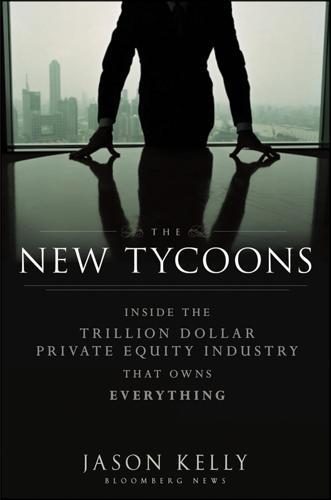
The New Tycoons: Inside the Trillion Dollar Private Equity Industry That Owns Everything
by
Jason Kelly
Published 10 Sep 2012
Goodman, given his longstanding relationship with James and the success of the business before and after the acquisition, has taken on a prominent role within the firm. His name is mentioned along with Gray’s as a potential someday CEO. If growth in credit and real estate were somewhat predictable, less so was the rise of Tom Hill’s group. Now formally known as Hedge Fund Solutions, what began as a side project to invest partners’ money has grown into Blackstone’s largest business by assets and the biggest business of its kind in the world. Hill bristles at the term fund-of-funds because he says it understates what his group actually does for its clients, which is a more bespoke approach to hedge funds.

Perfect Sound Whatever
by
James. Acaster
Published 21 Aug 2019
Bands like this remind you that music will always morph into something unanticipated and keep on advancing, simultaneously mirroring and altering everything around it. And if that’s what that escalating synth sound was a metaphor for, I’m going to be furious. * Incidentally, if you would like to hear the band’s more accessible side, I’d recommend checking out Scum With Boundaries by The I.L.Y’s, the art rock side project from Zach Hill and Andy Morin – another beaut of a record released in 2016. Exploded View Anthony Fantano launched his YouTube channel The Needle Drop in January 2009 after two years of blogging and making podcasts under the same name. Back then no one reviewed music on YouTube, those sorts of channels didn’t exist, but Fantano still decided to upload videos of himself reviewing the latest albums as a final attempt at achieving his dream job.

Ask Your Developer: How to Harness the Power of Software Developers and Win in the 21st Century
by
Jeff Lawson
Published 12 Jan 2021
CollegeClub withdrew its IPO filing to complete the acquisition of Versity, and by the time they refiled—in April 2000—the IPO window had closed, the party was ending, and they were burning about $30 million per month. Instead of an infusion of IPO cash, the company ran face-first into the wall, declaring bankruptcy in August 2000. Our stock was worthless. In just eighteen months we had gone from a side project during our college studies to a company valued by investors north of $150 million as part of a company on the verge of an IPO—to worth nothing again. It was the canonical dot-com roller-coaster story. In retrospect, I’m sure that company was an absolute shit show. We were twenty-one years old, running around with no business model and millions of investor dollars.

Off the Edge: Flat Earthers, Conspiracy Culture, and Why People Will Believe Anything
by
Kelly Weill
Published 22 Feb 2022
Though Dubay is no longer the type to show up to a Flat Earth International Conference (having become “one of our more fringe figures,” as Mark Sargent put it to me delicately), his books and videos have achieved massive reach since he emerged on the scene. Parents in Flat Earth Facebook groups still routinely recommend his illustrated Flat Earth children’s book for their homeschooled kids. This is unfortunate, because, unlike other picture book authors, Dubay’s side projects involve Flat Earth rap albums with lyrics like “you are blind so fuck what you say, I’ll expose the flat Earth and Heil Hitler all day.” I’m not quoting him out of context. The line is one of the more polite lyrics I can excerpt from a song called “Blood Rituals,” which appears on Dubay’s The Flat Earth Movement album alongside tracks like “Bruce Hitler” and “Goyim Revolution,” which includes clips of longtime Ku Klux Klan leader David Duke.

Jared Bibler
by
Iceland's Secret The Untold Story of the World's Biggest Con-Harriman House (2021)
It has mystified both of us since I started. It’s got a lot of moving pieces: trading of subordinated (read: junk) Kaupþing bonds back and forth between Kaupþing Luxembourg and some clients and bank employees, sometimes on the same day at vastly different prices, and mysterious large cash wires too. Marple became a side project for me, for my evenings or when I needed a little office relaxation, a little bit of spice for when the big market abuse cases felt stale. We would go as far as we could on Marple, and then inevitably hit a dead end where we needed more information from abroad. So we’d dash off a new request to Lux and wait a while for the next pieces of information to come back.

The Thinking Machine: Jensen Huang, Nvidia, and the World's Most Coveted Microchip
by
Stephen Witt
Published 8 Apr 2025
“You know, ‘This is done, it’s very nice to see you, and please go away.’ ” Nintendo would go on to sell 140 million Switch consoles, making it by far the most profitable product in company history. But it was a measure of how fast Nvidia was accelerating that Huang barely mentioned building the brain of the Switch, even in interviews at the time. Ambushing Lisa Su was a side project; his sprawling company now had its tentacles in everything. * * * • • • The 2017 Nobel Prize in Physics was awarded for work on the Laser Interferometer Gravitational-Wave Observatory, twin pairs of intersecting laser beams located 1,800 miles apart that captured subtle perturbations in the texture of space-time to detect stellar collisions millions of light-years away.
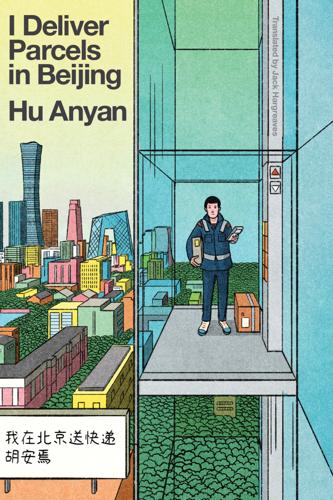
I Deliver Parcels in Beijing
by
Hu Anyan
Then, there were the multimedia CDs that he advertised in his own print media and sold by mail. The content was mostly copied from online sources, so the bulk of the work revolved around collecting and organizing it according to a theme and designing the interface to be easily navigable and searchable. There were also various random side projects underway at any one time, which I won’t go into here. But, basically, if we could do it, we would try. It was a scattergun approach—we did a lot, and none of it very well. From the boss’s perspective, the only consolation I see this providing was it avoided waste—all manpower, space, and equipment was put to full use.

Tools of Titans: The Tactics, Routines, and Habits of Billionaires, Icons, and World-Class Performers
by
Timothy Ferriss
Published 6 Dec 2016
Spirit animal: Common swift * * * Ramit Sethi Ramit Sethi (TW/IG: @ramit, iwillteachyoutoberich.com) graduated from Stanford University in 2005 with bachelor’s and master’s degrees in technology, psychology, and sociology. He grew his personal finance blog to more than 1 million readers per month, then turned this college side project into a multi-million-dollar business with more than 30 employees. Some of his weeks now break $5 million in revenue. In a finance space saturated by “gurus” of dubious credentials, Ramit has always been willing to share real numbers. Behind the Scenes Ramit and I often laugh about how we are blessed and cursed with scammy-sounding book titles.
…
(paraphrased from one of his teachers, Barbara McNally) “I only do email responses to print interviews Because these people love to put a twist to your words To infer that you said something fucking absurd” —lyrics from Fort Minor’s “Get Me Gone” Spirit animal: Snow leopard * * * Mike Shinoda Mike Shinoda (TW: @mikeshinoda, mikeshinoda.com) is best known as the rapper, principal songwriter, keyboardist, rhythm guitarist, and one of the two vocalists (yes, all that) of Linkin Park, which has sold more than 60 million albums worldwide and earned two Grammy awards in the process. Mike has collaborated with everyone from Jay Z to Depeche Mode, and he’s also the lead rapper in his side project, Fort Minor. As if that’s not enough, he’s also provided artwork, production, and mixing for all the projects mentioned above. I first met Mike when I interviewed him for BlogWorld & New Media Expo in 2008. I’m a big fan of Fort Minor, and the lyrics on the previous page take on special meaning once you’ve been bitten.

The Manager’s Path
by
Camille Fournier
Published 7 Mar 2017
When something goes well, don’t save up your praise—give it freely in the moment. 56 | THE MANAGER’S PATH THE PROGRESS REPORT When you get to the stage where you’re managing managers, a lot of your 1-1 meetings will be diving into details of projects they’re overseeing that you don’t have time to dig into on your own. When you are managing only a handful of individuals, the only time you should be using a 1-1 to do progress reporting is when you have someone who’s off on a side project that you’re not personally overseeing. Getting progress reports from people you’re already working closely with is a waste of time because all you’re hearing about is the delta of work between now and the last standup or project review. If your 1-1s are frequently status updates, try breaking out of the habit by asking your reports to prepare answers to questions that are unrelated to the current project status, or ask them to come prepared with questions for you to answer about the team, the company, or anything else.
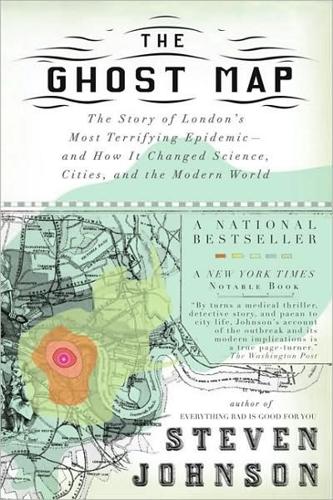
The Ghost Map: A Street, an Epidemic and the Hidden Power of Urban Networks.
by
Steven Johnson
Published 18 Oct 2006
Childs’ letter-writing campaign to the Times suggested, laudanum was regularly prescribed for almost any ailment. The Victorian medical refrain was, essentially: Take a few hits of opium and call me in the morning. Seemingly bereft of anything resembling a traditional social life, Snow spent his time away from patients working on side projects that grew out of his surgeon’s practice but which also suggested the ultimate range of his ambition. He began writing in to the local journals, opining on medical and public-health issues of the day. His first published paper, addressing the use of arsenic in the preservation of cadavers, appeared in The Lancet in 1839.

Jony Ive: The Genius Behind Apple's Greatest Products
by
Leander Kahney
Published 14 Nov 2013
When at home in San Francisco, he’s been known to attend the symphony and he socializes with the Silicon Valley elite. He’s been photographed at celebrity dinners with valley bigwigs such as Yahoo CEO Marissa Mayer, Twitter CEO Dick Costolo and the CEOs of Yelp, Dropbox and Path. Occasionally, Jony gets involved in side projects. He designed some striking Soundstick speakers for Harman Kardon, which are part of the Museum of Modern Art’s permanent collection. In 2012, he designed on commission a one-shot camera for Leica, which was to be auctioned for charity. Jony and Jobs were both fans of the storied camera maker, and when announcing the iPhone 4, Jobs compared it to “a beautiful old Leica camera.”10 By all appearances, Jony remains committed to Apple, despite occasional rumors to the contrary.

A More Beautiful Question: The Power of Inquiry to Spark Breakthrough Ideas
by
Warren Berger
Published 4 Mar 2014
In Gore’s case, the program stipulates44 that 10 percent of employee time should go toward independent projects, and it has inspired some big breakthroughs. The company, known for creating the popular waterproofing material Gore-Tex, produces a wide range of products, including Elixir, a well-known brand of guitar string. It was developed by a Gore engineer, Dave Myers, who normally worked on medical products. As a side project, Myers wanted to see if he could answer, Why can’t I get the gears on my mountain bike to shift more smoothly? He eventually developed a new, plastic-coated bike-cable product that became a successful product for Gore. Subsequently, in a nifty bit of connective inquiry, Myers wondered, What if I put plastic coating on guitar strings?

Floating City: A Rogue Sociologist Lost and Found in New York's Underground Economy
by
Sudhir Venkatesh
Published 11 Sep 2013
From the first night, she was open and honest, admitting right away that she was a sex worker. But she was unlike most of the other immigrant and low-income streetwalkers I had studied in New York and Chicago. She had ambition and the courage to cross borders. She came to Manjun’s store because she wanted to escape from her usual traveling grounds in the East Side projects to a better neighborhood where she could meet a wealthier clientele. That night, I could see in her face the toll of accommodating so many men. It was painful to see. She was only thirty-four but always looked so tired that she appeared to be nearly a decade older. And business had been getting steadily worse since the Giuliani reforms.

How Music Got Free: The End of an Industry, the Turn of the Century, and the Patient Zero of Piracy
by
Stephen Witt
Published 15 Jun 2015
If the mp3 was so great, how come no one was using it? Perhaps Linde should try selling laser discs as well. But Linde kept pushing, and finally his corporate overseers conceded that, in the unlikely event that he ever found a customer for the mp3, he was authorized to license the tech. They also made clear that this was a side project, and that the work was not to interfere with his day job. Linde, a born competitor, didn’t believe in MPEG’s profits-by-committee approach, and pushed the Fraunhofer team to innovate. And so they did. Late in 1994, Harald Popp had commissioned a manufacturing run of dedicated mp3-decoding chips.

The Connected Company
by
Dave Gray
and
Thomas Vander Wal
Published 2 Dec 2014
When he was 21, Linus Torvalds released a very basic operating system he was working on as a hobby. Over time, an army of developers joined the project, and Linux now powers not only tablet computers, mobile phones, and game consoles, but also some of the fastest supercomputers on the planet. Wikipedia started as a side project that complemented a more traditional online encyclopedia, called Nupedia. But contributors preferred Wikipedia’s less bureaucratic structure, and it quickly overshadowed its parent. When Nupedia was shut down in 2003, it had published only 24 articles. Meanwhile, Wikipedia had published more than 20,000 articles and was available in 46 languages.

War for Eternity: Inside Bannon's Far-Right Circle of Global Power Brokers
by
Benjamin R. Teitelbaum
Published 14 May 2020
Guo provided added incentive: Steve’s salary was $1 million annually. Steve’s various agendas came to a head in Rome. He was hoping to place his gladiator school in the eight-hundred-year-old Trisulti monastery just outside of the city. He wanted to solidify a presence there in part because of a side project to attack the Vatican and its liberal Pope Francis (who called the Trump administration “un-Christian”), in part because he was convinced the Chinese were going to throw major money at Italy as part of their One Belt One Road Initiative to forge railways and sea routes for global trade. The Chinese wanted a major hub in Venice—“where Marco Polo started,” Steve noted in a conversation with me—and he was concerned that the Asian nation had a receptive audience with Italy’s government.

Blood, Sweat, and Pixels: The Triumphant, Turbulent Stories Behind How Video Games Are Made
by
Jason Schreier
Published 4 Sep 2017
.* Keeping teams together wasn’t the studio’s priority, and in 2012, after they finished the brawler game Double Dragon Neon, WayForward’s leadership split up Sean Velasco, Ian Flood, Nick Wozniak, and David D’Angelo, moving them all to different projects. Upset that they were no longer together, the group started meeting up outside work. On nights and weekends, they’d all go to Velasco’s apartment and experiment with side projects, including a smartphone game that didn’t get very far. None of them were really into the touchscreen—they preferred the tactile feel of proper buttons—and it wasn’t the type of game they wanted to develop. What they really wanted was to work together on a proper platformer, one that you could play on Nintendo consoles like the 3DS and Wii U.

I, Warbot: The Dawn of Artificially Intelligent Conflict
by
Kenneth Payne
Published 16 Jun 2021
Thousands of miles away, the computers of Project Maven are tracking multiple targets in real time: individuals previously identified from their biometric data, facial recognition and even gait analysis. At US Special Operations Command in Tampa, all this information is being fed into a huge, simulated ‘synthetic operating environment’. Created initially as a side project of a video gaming company, American access to Project Improbable has been provided by the British Ministry of Defence after it proved its value in their wargaming exercises.49 Now it’s being trialled in a real operation. Masses of data on the town has been fed into the system ahead of the deployment; some highly classified intercepts, some human intelligence from local informants, and plenty of open source information too—about the town’s electricity grid, transport network and food supply, along with information scraped from social media.
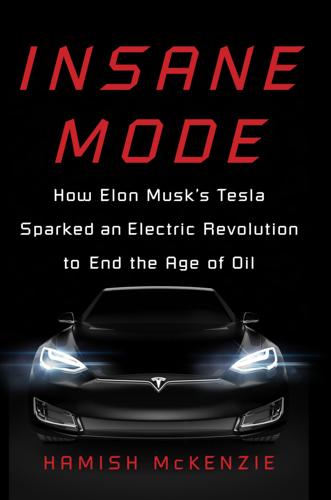
Insane Mode: How Elon Musk's Tesla Sparked an Electric Revolution to End the Age of Oil
by
Hamish McKenzie
Published 30 Sep 2017
Not only is he calling the shots at Tesla, but he’s also running SpaceX, a $20 billion enterprise with more than a few ambitions of its own, which include sending astronauts to the International Space Station, a space Internet subdivision, driving the development of cheap reusable rockets, and, ultimately, colonizing Mars. As if he were somehow bored by this trifling workload, Musk has also taken on a host of other side projects, such as Neuralink, a brain-computer interface start-up he cofounded, the Boring Company, which plans to make tunnels for cars, and the Hyperloop, another of his pet interests. Can he do it all? The job juggling certainly comes with pressures. On July 30, 2017, Musk published a series of tweets that almost amounted to a psychological confessional.

Laziness Does Not Exist
by
Devon Price
Published 5 Jan 2021
You never actually earn the right to take it easy, because the Laziness Lie also teaches you that you can never, ever do enough. There Is Always More You Could Be Doing The Laziness Lie encourages us to aspire to an impossible level of productivity. It sets us up to expect full, eight-hour workdays of unbroken focus, followed by evenings filled with exercise, Instagram-worthy home-cooked meals, and admirable side projects. According to the Laziness Lie, a worthwhile person fills their days in ideal, industrious ways. They don’t skip doctor’s appointments, fail to get their oil checked, or miss days at the gym. If someone lacks the energy to make it to the polls on Election Day because they just finished working a grueling third-shift job, the Laziness Lie says they’re to blame for everything going politically awry in this country.

Liftoff: Elon Musk and the Desperate Early Days That Launched SpaceX
by
Eric Berger
Published 2 Mar 2021
Dragon had to be versatile, autonomously controlling its flight through space in order to rendezvous with the International Space Station, and safely splash down in the Pacific Ocean. Giger and a small team of engineers started from scratch in 2006 when they began thinking about what a modern space capsule should look like. “Dragon was sort of this side project while most of the company worked on Falcon 1,” Giger said. “I remember having Saturday meetings with Elon and a very small team of maybe five people. We were kind of just hammering out a few of the high-level concepts of Dragon.” SpaceX had some help from NASA. A small team of NASA engineers supported SpaceX and the other COTS contract winner, Orbital Sciences, when it came to reviewing spacecraft designs and highlighting potential issues.

How to Work Without Losing Your Mind
by
Cate Sevilla
Published 14 Jan 2021
Understanding that in order to have a healthier relationship with work you’ll have to be uncomfortable more than you’d like to be for a while isn’t exactly thrilling. I get it! We have become conditioned to expect excellence from ourselves at all times, so realizing that, actually, giving 75 per cent at work so that you can preserve some energy for your side projects or have more emotional capacity available for your kids might take some getting used to. I fervently believe that work doesn’t have to take up our entire lives, steal our identity and our joy. Just like the character Jenna sings in Waitress: The Musical about how the diner she works at and the people she serves as a waitress have both taken more than she gave them, work takes more than you give it.
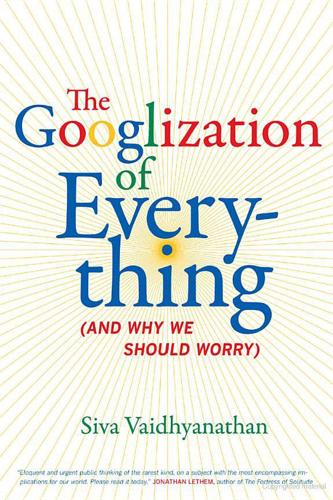
The Googlization of Everything:
by
Siva Vaidhyanathan
Published 1 Jan 2010
THE GOOGLIZATION OF SCHOLARSHIP The effect of Google on college students is replicated in its effect on the scholars who teach them and on their research. The best example of this effect is the way Google Scholar filters and represents the current state of scholarship in a variety of fields. Google Scholar is an interesting side project for the company. Released in 2004, it serves as a broad but shallow access point to a range of academic work. Google convinced hundreds of suppliers of electronic scholarly resources to open their indexes up to Google’s “spiders” so that articles could be scanned, copied, and included in Google’s index.

Personal Development for Smart People: The Conscious Pursuit of Personal Growth
by
Steve Pavlina
Published 14 Oct 2008
I found that the easiest w a y to tune in w a s to ask myself, Where is the joy? That question would help me listen for the right frequency, a n d once I got the frequency, the volume w o u l d gradually increase until I was feeling extremely joyful and connected. 70 Oneness > The mind-set of oneness cannot be compartmentalized. It isn't some side project y o u add to your personal development to-do list, only to fade back into separateness w h e n y o u head to work the next day. If y o u resonate with oneness, it changes y o u from top to bottom. You can no longer continue treating everyone as completely separate from y o u . Let's go deeper into the principle of oneness by exploring its various aspects: empathy, compassion, honesty, fairness, contribution, and unity.

Hacking Growth: How Today's Fastest-Growing Companies Drive Breakout Success
by
Sean Ellis
and
Morgan Brown
Published 24 Apr 2017
EXECUTIVE SPONSORSHIP REQUIRED Growth teams must be worked into the organizational reporting structure of a company with total clarity about to whom the growth lead reports. It is imperative that a high-level executive is given responsibility for the team, in order to assure that the team has the authority to cross the bounds of the established departmental responsibilities. Growth cannot be a side project. Without clear and forceful commitment from leadership, growth teams will find themselves battling bureaucracy, turf wars, inefficiency, and inertia. At start-ups, if the founder or CEO isn’t personally leading the growth efforts directly, then the team or teams should report directly to him or her.
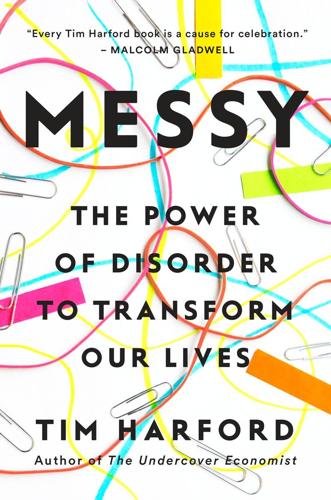
Messy: The Power of Disorder to Transform Our Lives
by
Tim Harford
Published 3 Oct 2016
But it’s possible to take that slap and turn it into something remarkable. Useful diversions can come from anywhere: an error from some piano movers and a guilt trip from a German teenager; the randomness of an algorithmic search; a strange order from a deck of mysterious cards; the background noise that you can’t quite shut out; the side project that suddenly suggests a new solution. Or the annoying need to collaborate with other people, which is the subject of the next chapter. Over the years, Carlos Alomar came to realize that the cards he once dismissed as “stupid” have unexpected benefits. “I mean some of it worked, some of it didn’t,” he said a quarter of a century later.
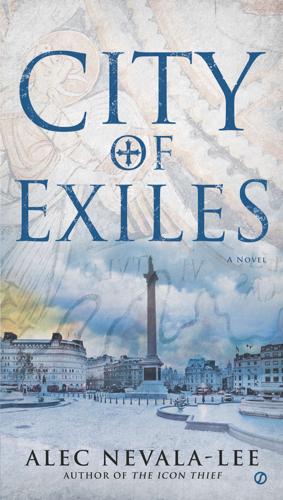
City of Exiles
by
Alec Nevala-Lee
Published 1 Dec 2012
Then he headed underground. 11 When Renata awoke that morning, she found herself suddenly aware of two things. The first was that she was going to get clean. No more drugs or drinking. The second realization was that her financial troubles would soon be over. Dior would come through, along with her upcoming side project, and at that point, it was only a lucky break or two before she was back on her feet. Upon her arrival at Golden Square, her mood was only slightly dented by the tactless guard at Cheshire, who insisted on searching her bag with his bulky fingers. “Be careful there. I don’t like people touching my stuff—” “Very careful, yes,” the guard said, stuffing a hardened hand down between her neatly packed flashes and lenses.
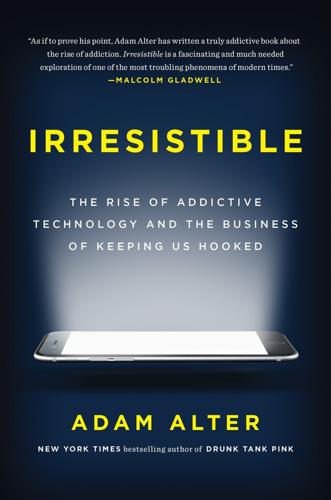
Irresistible: The Rise of Addictive Technology and the Business of Keeping Us Hooked
by
Adam L. Alter
Published 15 Feb 2017
That’s why people spend precious chunks of free time doing difficult crosswords and climbing dangerous mountains—because the hardship of the challenge is far more compelling than knowing you’re going to succeed. This sense of hardship is an ingredient in many addictive experiences, including one of the most addictive simple games of all time: Tetris. — In 1984, Alexey Pajitnov was working at a computer lab at the Russian Academy of Science in Moscow. Many of the lab’s scientists worked on side projects, and Pajitnov began working on a video game. The game borrowed from tennis and a version of four-piece dominoes called tetrominoes, so Pajitnov combined those words to form the name Tetris. Pajitnov worked on Tetris for much longer than he planned because he couldn’t stop playing the game. His friends remember him chain-smoking and pacing back and forth along the lab’s polished concrete floors.

The Big Nine: How the Tech Titans and Their Thinking Machines Could Warp Humanity
by
Amy Webb
Published 5 Mar 2019
If the Big Nine knows there are problems in the corpora and aren’t doing anything about it, they’re leading AI down the wrong path. One way forward is to turn AI on itself and evaluate all of the training data currently in use. This has been done plenty of times already—though not for the purpose of cleaning up training data. As a side project, IBM’s India Research Lab analyzed entries shortlisted for the Man Booker Prize for literature between 1969 and 2017. It revealed “the pervasiveness of gender bias and stereotype in the books on different features like occupation, introductions, and actions associated to the characters in the book.”
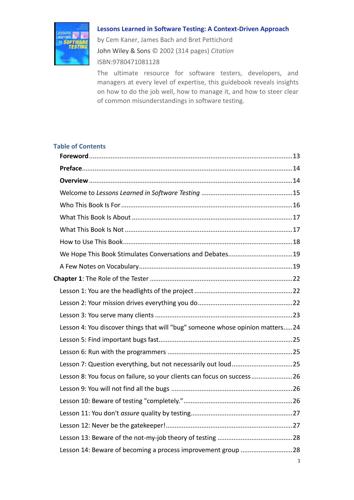
Lessons-Learned-in-Software-Testing-A-Context-Driven-Approach
by
Anson-QA
Each automated test is a program or a feature in a larger automated test application. Test automation isn't easy and won't succeed without following software engineering principles. Project management Without sufficient management attention, automation projects may not actually address the initially conceived objectives. Don't make automation a side-project. Don't staff it with part-timers. A good balance of skills is particularly important for projects expected to create tests that will be useful for a long time. You'll need people trained on the languages and tools that you're using. The automation approach you use will determine the exact mix of skills.
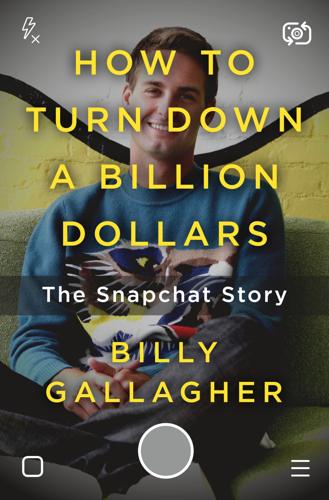
How to Turn Down a Billion Dollars: The Snapchat Story
by
Billy Gallagher
Published 13 Feb 2018
But he was already worried that too much of a spotlight too early would mess with the small, weird, cool community that Snapchat was nurturing. Evan was perhaps being somewhat paranoid about how deleterious media coverage would be to Snapchat. But he’s always had a secretive side, often preferring to hustle on his side projects, from grand party schemes to Future Freshman to Snapchat, until he was ready for the world to see them. The next day, New York Times reporter Nick Bilton, unencumbered by a personal connection, published a short piece about Snapchat, writing, “All of this sexting, as the practice is known, creates an opening for technology that might make the photos less likely to end up in wide circulation.

Messing With the Enemy: Surviving in a Social Media World of Hackers, Terrorists, Russians, and Fake News
by
Clint Watts
Published 28 May 2018
Instead, on the day before we launched Hamilton 68, Politico reported that President Trump’s secretary of state, Rex Tillerson, had yet to tap into $80 million in counterpropaganda resources, much of which Congress had set aside for challenging Russian active measures. We hoped to provide a spark, but we still are waiting to see who will carry it forward. Our effort, at the time of publication, remains underfunded, and a side project from our day jobs. It’s a start, but not at all what America needs to do against Russian influence. Kislyak was right, and Putin must still wonder, “Why hasn’t America punched back?” 8 Staring at the Men Who Stare at Goats “What do I do with this?” Colonel Smith* said to a crowd gathered around a conference table.
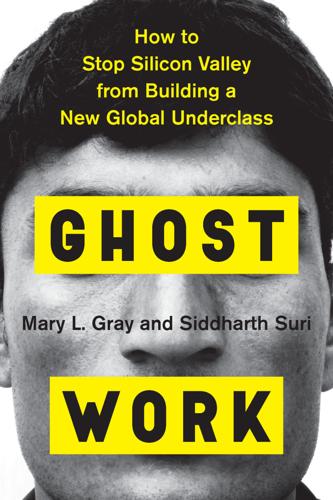
Ghost Work: How to Stop Silicon Valley From Building a New Global Underclass
by
Mary L. Gray
and
Siddharth Suri
Published 6 May 2019
One was a small startup soon acquired by Google. It was called YouTube. YouTube quickly eclipsed Miro, leaving PCF unsure of what it could do with the open-source software it had poured years into building to share videos on the web. By 2010 PCF was still focused on Miro, but it also had some side projects simmering. One of them emerged out of a conversation between Jansen and Wilson. Wilson’s wife, originally from Brazil, wanted to share some Portuguese films with friends. They were trying to find subtitles for these films, and when they couldn’t, they repurposed some of the principles behind Miro to create a web-based software-editing kit that could make it easy to add subtitles to a streaming video.
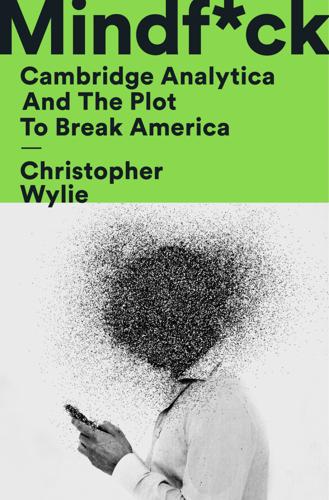
Mindf*ck: Cambridge Analytica and the Plot to Break America
by
Christopher Wylie
Published 8 Oct 2019
Mercer’s rivals in the finance sector watched his every move, and if they knew that he had acquired a psychological warfare firm, others in the industry might figure out his next play—to develop sophisticated trend-forecasting tools—or poach key staff. We knew Bannon wanted to work on a project with Breitbart, but this was originally supposed to be a side project to satiate his personal fixations. Of course, this was all bullshit, and they wanted to build a political arsenal. I’m not even sure Mercer knew, at first, how effective Cambridge Analytica’s tools would be. He was like an investor in any startup—throwing money at smart, creative people who had an idea, in the hopes that it would turn into something valuable.
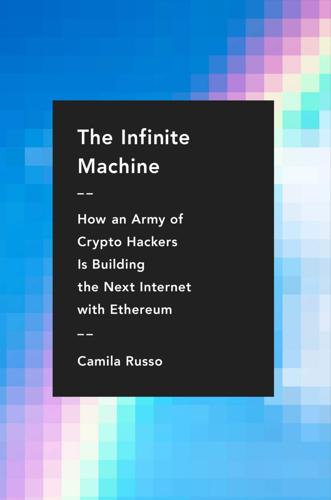
The Infinite Machine: How an Army of Crypto-Hackers Is Building the Next Internet With Ethereum
by
Camila Russo
Published 13 Jul 2020
The whole process required more than a dozen steps, including opening her computer’s coding terminal and typing in a bunch of commands. It wasn’t exactly user friendly. She and her friend Kosala Hemachandra decided to build a digital wallet for the less technically inclined called MyEtherWallet (MEW). It started out as a side project for them and their friends to use; through most of 2015 it had seen no activity. In early 2016 someone on Reddit asked whether the code for the wallet was being maintained, and then every so often others would ask for specific features. They were gradually spending more time on it but still treated it like a side hobby, which didn’t make any money.

Golden Gates: Fighting for Housing in America
by
Conor Dougherty
Published 18 Feb 2020
She worked at a neighborhood association and answered the phones at a mortgage hotline in the throes of the financial crisis. Sonja liked reading and school, and her mom was a nurse and her dad was a lawyer, so the professional expectation was there. She just could never throw herself into the pursuit of a real job or credential the way she could so totally throw herself into the new hobbies and activist side projects she picked up whenever some problem or perceived injustice appeared along the way. This had started early. In seventh grade Sonja got sent to detention after she and a friend persuaded their science class to be dead silent for an entire class period to punish the teacher for telling the class to shut up.
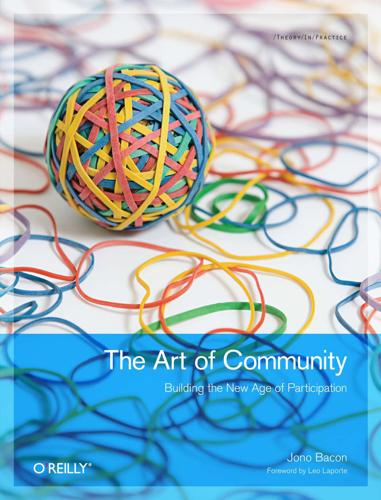
The Art of Community: Building the New Age of Participation
by
Jono Bacon
Published 1 Aug 2009
He has been actively involved in growing a global Linkin Park community, coordinating community resources and media, ensuring that the band has a close connection with fans, and more. Mike has also spoken extensively about social media and the role of large record companies in the modern music industry. Outside of Linkin Park, Mike also formed Fort Minor as a side project, is an active artist and painter, and has produced a number of albums. How did Linkin Park grow a community of fans around the band back when you started out? We started the band out of our apartments in Los Angeles. We were in college at the time, around 1998, and the Internet hadn’t really caught on yet, as strange as that is to say.
…
Today, with a fan base as big and spread out as ours, the toughest part is keeping everyone informed and keeping our messages organized. We always have a TON of stuff going on. Aside from the obvious things like albums, singles, and tours, we have a Linkin Park documentary-style channel on YouTube, an online radio station, a charity called Music For Relief, side projects, art shows, clothing and merchandise...I feel like the list can go on forever. Notably, we also have a fan club called the LP Underground that has a nonstop universe of action going on all the time: Linkin Park “Summit” convention events (think LP Comic-Con), surprise chats with band members, exclusive music, and an episodic LPUTV channel which is updated a few times a month.

Cheap: The High Cost of Discount Culture
by
Ellen Ruppel Shell
Published 2 Jul 2009
The company opened new stores in North America and Asia (the European market was considered too competitive), and outsourced most of its manufacturing to China and other developing countries. Today, Coach is a $2 billion operation. And according to Cahn, most of the company’s profits stem from its seventy-five-plus factory outlet stores. The first Coach bag discount outlet was in East Hampton, Long Island, a side project Cahn concocted to unload bags with slight defects. Run by Cahn’s children, the outlet was incredibly successful, with inventory frequently selling out within hours after the store opened. “We wanted to be fair to our customers, and we figured that selling slightly defective goods at half price was a reasonable thing,” Cahn said.

Utopia Is Creepy: And Other Provocations
by
Nicholas Carr
Published 5 Sep 2016
Some of these near-random, two-word phrases don’t rise above mere functionality: India Ireland, for instance, or Accounting Architecture. Others, though, open up new and unexpected territory for the imagination to wander in. Here, for the record, are a few of my favorites: Freon Holderlin (a man I’d like to meet, despite his reputation for coldness) Menage Ottawa (a perfect oxymoron) Chicago Death (Jack White’s new side project) Light Metabolism (what the Theory of Everything, once discovered, will be called) Excretion Geometry (a field understood by only seven people in the world, all now deceased) Arctic Biosphere (Freon Holderlin lives here, according to rumor) Krasnokamsk Menadra (when I take up meditation, this will be what I chant) And—I’m starting to choke up—my favorite one of all: Decorative Edison FUTURE GOTHIC May 8, 2012 1.
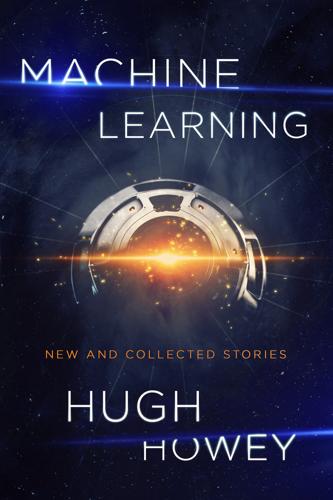
Machine Learning: New and Collected Stories
by
Hugh Howey
Published 2 Oct 2017
A doughnut of monitors ringed the ceiling above, tangles of wires drooping from them and running off to equipment the engineers had set up. In one corner, a gleaming steel pod stood like some part of an alien ship. It had been built according to stolen plans, was thought at first to be necessary for clearing the small machines from their bloodstreams, but it ended up being some sort of cryo-device, a side project the Atlanta team had undertaken. The only machine Tracy knew how to operate in that room was the coffeemaker. She started a pot and watched the countdown clock overhead tick toward Armageddon. The other founders trickled in one at a time. Many had red eyes and chapped cheeks. There was none of the chatting, debating, and arguing that had marked their prior meetings in that room.

The Martian
by
Andy Weir
Published 1 Jan 2011
Rich Purnell concentrated on his computer screen. His cubicle was a landfill of printouts, charts, and reference books. Empty coffee cups rested on every surface; take-out packaging littered the ground. “Rich,” Mike said, more forcefully. Rich looked up. “Yeah?” “What the hell are you doing?” “Just a little side project. Something I wanted to check up on.” “Well…that’s fine, I guess,” Mike said, “but you need to do your assigned work first. I asked for those satellite adjustments two weeks ago and you still haven’t done them.” “I need some supercomputer time,” Rich said. “You need supercomputer time to calculate routine satellite adjustments?”

Fuller Memorandum
by
Stross, Charles
Published 14 Jan 2010
Boris is running some kind of operation code named BLOODY BARON which involves something going down in Amsterdam which required Mo's offices, and--" They're both shaking their heads at me. "No, no," says Andy, and: "Amsterdam was CLUB ZERO," says Mo. "It's a sideshow, and . . . did you bring that letter?" Andy produces an envelope. She pockets it: "Thanks." "Actually, it all boils down to CASE NIGHTMARE GREEN," Andy says heavily. "The other operations are side projects; CASE NIGHTMARE GREEN is where it all starts." "Oh yes?" I ask casually, although those words send a chill up my spine. "Yes." He laughs halfheartedly. "It appears we may have been working under some false operating assumptions," he adds. "The situation seems to be deteriorating . . ." CASE NIGHTMARE GREEN IS THE CODE NAME FOR THE END OF the world.

The 4-Hour Workweek: Escape 9-5, Live Anywhere, and Join the New Rich
by
Timothy Ferriss
Published 1 Jan 2007
The business owner who eliminates the least profitable customers and projects, outsources all operations entirely, and travels the world collecting rare documents, all while working remotely on a website to showcase her own illustration work. The student who elects to risk it all—which is nothing—to establish an online video rental service that delivers $5,000 per month in income from a small niche of Blu-ray aficionados, a two-hour-per-week side project that allows him to work full-time as an animal rights lobbyist. The options are limitless, but each path begins with the same first step: replacing assumptions. To join the movement, you will need to learn a new lexicon and recalibrate direction using a compass for an unusual world. From inverting responsibility to jettisoning the entire concept of “success,” we need to change the rules.

American Kingpin: The Epic Hunt for the Criminal Mastermind Behind the Silk Road
by
Nick Bilton
Published 15 Mar 2017
Since June, when Jared had discovered that first pill of ecstasy in the envelope from the Netherlands, he had been trying to figure out how to persuade his supervisor, and now the U.S. Attorney’s Office, to let him build a case against the Silk Road Web site. Everything over the past few months had been leading up to this very moment. After his supervisor at HSI had given him the go-ahead to start investigating the site as a side project, Jared had obsessively started collecting every smidgen of evidence coming through Chicago O’Hare. Each night he would drive his ancient government-issued car (which other agents had nicknamed the Pervert Car because it looked like it belonged to a child molester) to the mail center at the airport where he would collect envelopes of drugs that had been plucked from the scrubs earlier that day.

The Raging 2020s: Companies, Countries, People - and the Fight for Our Future
by
Alec Ross
Published 13 Sep 2021
For instance, when Google received €3.96 from the Ascani family, it likely would have avoided paying a dime to the Italian government. As soon as the transaction was completed, that money departed the country. The payment did not go directly to Google LLC, the corporation headquartered in Silicon Valley, nor to Alphabet Inc., the company that owns Google and its various side projects for self-driving cars, drone delivery, biotechnology, and the like. Instead, the Ascanis’ €3.96 worked its way through a chain of corporate entities scattered across three different countries, none of which played any role in getting Marco his belt. The reason Google and other multinational firms shuffle their money around the map in this way is to minimize their taxes, allowing them to generate billions of dollars from customers around the globe without giving a cut to the countries where they do business.
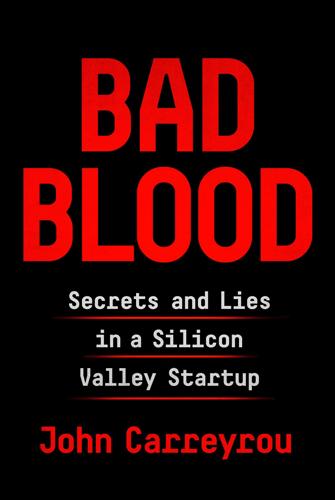
Bad Blood: Secrets and Lies in a Silicon Valley Startup
by
John Carreyrou
Published 20 May 2018
It dawned on him that she’d taken his sister’s decision personally and that he was now paying the price for it. Not long after, a chill descended on Kent’s own relationship with Elizabeth. For all intents and purposes, Kent was the chief architect of the miniLab. A talented engineer who loved to build stuff, he was also dabbling with a side project in his spare time: bicycle lights that lit up both wheels and the road, providing improved visibility and safety for the rider at night. He’d pitched the concept on Kickstarter and, much to his surprise, was able to raise $215,000 in forty-five days. It was the seventh-largest sum raised on the crowdfunding platform that year.
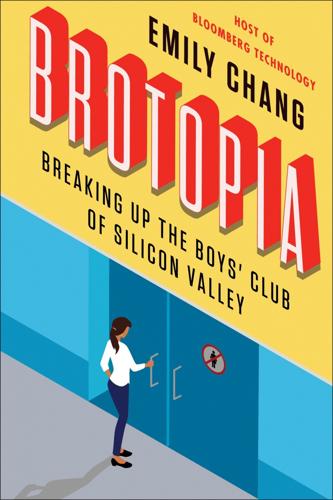
Brotopia: Breaking Up the Boys' Club of Silicon Valley
by
Emily Chang
Published 6 Feb 2018
It wouldn’t last. Innovation at Flickr died under the Yahoo umbrella and Facebook and Instagram ran away with the mobile photo-sharing market. Naturally, Butterfield started over. He built another game that failed, then, in 2012, shut the operation down, laying off all but eight people. But again, a side project of his company’s showed great promise. Butterfield’s employees had built new software to track projects and communicate with each other internally. That accidental, modern take on a chat room—now called Slack—quickly became one of the most highly valued unicorns in Silicon Valley. Like many tech successes, Slack grew quickly—in four years expanding from twenty to over a thousand employees in five countries.
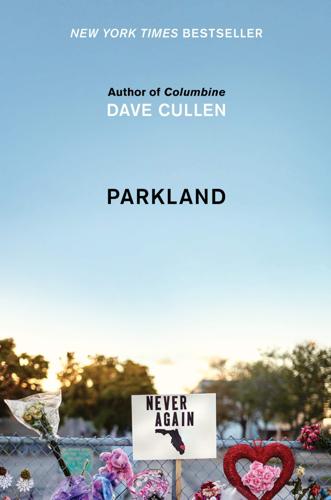
Parkland: Birth of a Movement
by
Dave Cullen
Published 12 Feb 2019
They had thousands of new affiliates in the field, and the big task for the fall would be building a stronger infrastructure, “so a random kid from Texas could talk to someone in Idaho and connect and organize together,” Jackie said. They had twelve weeks to tighten up their organization for Election Day, and two years to prepare for 2020. Three days later, Jackie was back in Parkland for the first day of her senior year. A week later, I asked about school, and she groaned. “Oh God. It feels like a side project for me now. Every year of my life it would’ve been my main priority, and now it kind of feels like an extracurricular. Every day I go to school, and then I go work on March for Our Lives for the rest of my night. I don’t really know what my main thing is, but I’m pretty sure it’s March for Our Lives.”

Genius Makers: The Mavericks Who Brought A. I. To Google, Facebook, and the World
by
Cade Metz
Published 15 Mar 2021
After all, this was Dean’s expertise—pooling computing power from hundreds and even thousands of machines and applying them to a single problem. That winter, he set up an extra desk inside Google X and embraced Ng’s project during his “20 percent time”—the one day a week Googlers traditionally spend on side projects. In the beginning, Project Marvin was just another experiment, with Ng, Dean, and Corrado lending only some of their attention to the effort. They built a system that echoed a very human pastime of the early 2010s: It looked at cats in YouTube videos. Drawing on the power of over sixteen thousand computer chips spread across a Google data center, it analyzed millions of these videos and taught itself to recognize a cat.
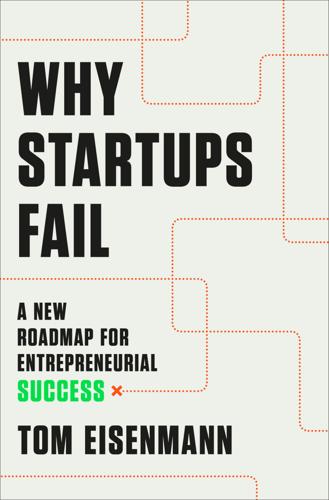
Why Startups Fail: A New Roadmap for Entrepreneurial Success
by
Tom Eisenmann
Published 29 Mar 2021
If you have bad bedfellows, growth may exacerbate quality problems and depress profit margins. Focus! Resources are limited in an early-stage startup, and as an entrepreneur you can only do so much. So, you should focus on what’s most important. Find your target customers and create a product that dazzles them. Anything that distracts from that priority is a problem. Scuttle your side projects. Skip the conference speaking engagement. But excessive focus comes with risks. If you concentrate all of your efforts on a single customer segment, your logical target will be early adopters. But focusing only on them and ignoring the needs of mainstream customers can yield a false positive.
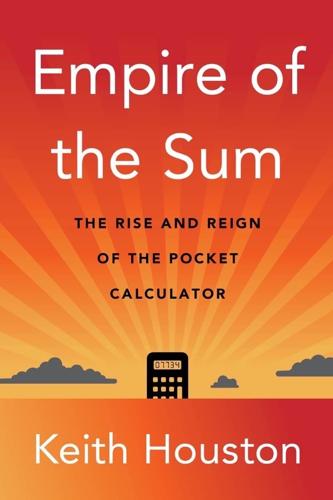
Empire of the Sum: The Rise and Reign of the Pocket Calculator
by
Keith Houston
Published 22 Aug 2023
By all accounts, the two hit it off.10 Kepler saw a kindred spirit in Schickard and encouraged the younger man, already a creditable painter, engraver, and mechanic, to develop his abilities as an astronomer and mathematician. He showed Schickard tables of John Napier’s logarithms, then still a novelty, and asked Schickard to engrave some of the copper plates for a book on planetary motion.11 And it was in the course of the many letters exchanged between the two that Schickard revealed a side project inspired by an astronomer’s need to crunch large quantities of large numbers. On September 20, 1623, Schickard described to Kepler what he called an arithmeticum organum, or arithmetical instrument: What you have done in a logistical way (i.e., by calculation), I have just tried to do by mechanics.
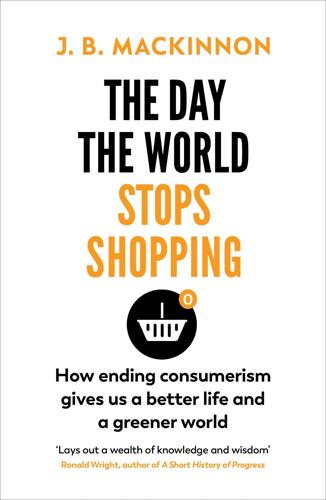
The Day the World Stops Shopping
by
J. B. MacKinnon
Published 14 May 2021
Thousands of examples conflict with the idea that innovation depends on a desire for money and growth. Perhaps the most famous case is the American moon landing in 1969, much more the result of Cold War rivalry and exploratory zeal than a race to profit from outer space. Another is email, which programmer Ray Tomlinson invented as a side project while working on ARPANET, a government-funded precursor to the internet. “Our sponsor, the Department of Defense, never said anything about wanting email. My boss didn’t say anything about email,” Tomlinson said later. “It just seemed like an interesting thing to do with a computer and a network.”
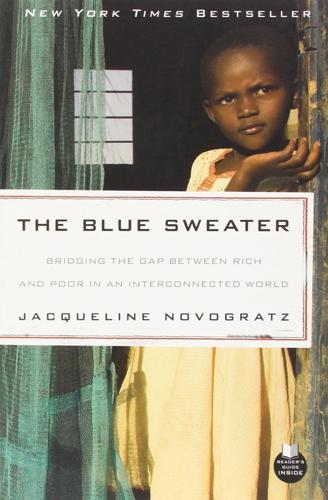
The Blue Sweater: Bridging the Gap Between Rich and Poor in an Interconnected World
by
Jacqueline Novogratz
Published 15 Feb 2009
As in every other office, Veronique’s space was furnished with two desks, both constructed of dark wood, both covered with piles of papers and books, some yellowed, apparently from remaining in the same place for years. Standing next to Veronique in the dark and dingy office was a shy, unassuming woman wearing a long skirt and flat black shoes. She was just a few inches over 5 feet tall, with a broad face and skin the color of coffee beans. She had large brown eyes that drooped at the sides, projecting a crinkly empathy further emphasized by a gaptoothed smile. Her hair was combed back into a loose crown. Her only adornments were a wedding band and a tiny gold cross on a chain around her neck. She introduced herself shyly: “Amakuru, Jacqueline. My name is Honorata.” “Bonjour.” Veronique, already a teacher to me, gave me a gentle shove and laughed.

The Confidence Game: The Psychology of the Con and Why We Fall for It Every Time
by
Maria Konnikova
Published 28 Jan 2016
And the presence of Machiavellianism or psychopathy or narcissism no more marks someone as a grifter than the presence of charisma or nonchalance. James Fallon discovered he was a psychopath by accident. He’d been running two projects simultaneously: a large imaging study of Alzheimer’s patients, where his own family served as “normal” control brains, and a small side project on the brains of psychopaths. As he was going through the Alzheimer’s scans, one brain popped out. It had all the markings of the psychopath. Hmm. Clearly, someone had made a mistake and mixed one of the psychopathic scans in with the Alzheimer’s data. Normally, results in typical lab studies are anonymized so that nothing tips the experimenter off to the identity of the subject.
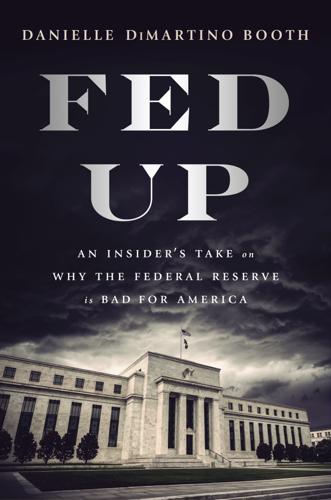
Fed Up: An Insider's Take on Why the Federal Reserve Is Bad for America
by
Danielle Dimartino Booth
Published 14 Feb 2017
Born in 1978, Pozsar came to the United States when he was twenty-four, after receiving a graduate degree in finance from a university in South Korea. Definitely not the Ivy League. He had been working for six years as senior economist and right-hand man for Mark Zandi, chief economist for Moody’s Analytics. Somewhat bored with his day job, at night and on the weekends Pozsar began working on a side project that he found fascinating: the structure and growth of the shadow banking system. The term “shadow banking” had first been coined at the Fed’s 2007 Jackson Hole symposium by Paul McCulley, then chief economist of Pacific Investment Management Company (Pimco). Son of a Baptist preacher, McCulley has a knack for colorful metaphors.

System Error: Where Big Tech Went Wrong and How We Can Reboot
by
Rob Reich
,
Mehran Sahami
and
Jeremy M. Weinstein
Published 6 Sep 2021
He’d thought of the start-up when he was living in London before college: “I got thirty parking tickets in the UK when I was in high school at about eighteen years old, the driving age. I couldn’t pay for any of the tickets. I probably deserved them, but because I couldn’t afford them, I created software for myself and my friends to get out of them.” Seems simple enough for a side project during your first year of college, but of course Browder discovered that “everyone in the world hates parking tickets.” Fast-forward a few years, and Browder was on leave from Stanford as the CEO of a tech company called DoNotPay, which provides a free and automated mechanism for challenging parking tickets issued in big cities, including London and New York.
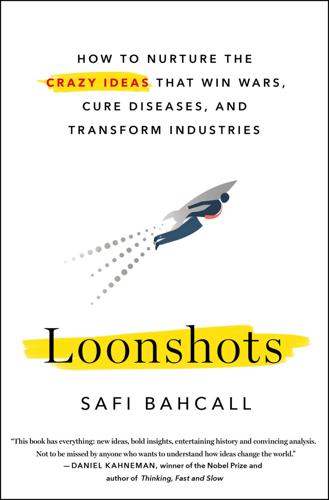
Loonshots: How to Nurture the Crazy Ideas That Win Wars, Cure Diseases, and Transform Industries
by
Safi Bahcall
Published 19 Mar 2019
Polaroid followed the first sepia prints in 1947 with black and white (1950); automatic exposure (1960); instant color (1963); non-peel-apart film (1971); the SX-70 all-in-one, foldable camera (1972); sonar auto-focus (1978); and countless other advances in between. For anyone interested in technology, the stories of these inventions are fascinating. To achieve instant color printing, for example, Land and his team invented a new molecule. As a side project, stimulated by a chance observation in the lab, Land invented a new theory of color vision, now called color constancy, which explains why we will see red apples as red even as the color of the light they reflect changes. Land seemed to produce one or two discoveries per year that others would be thrilled to see in a lifetime.
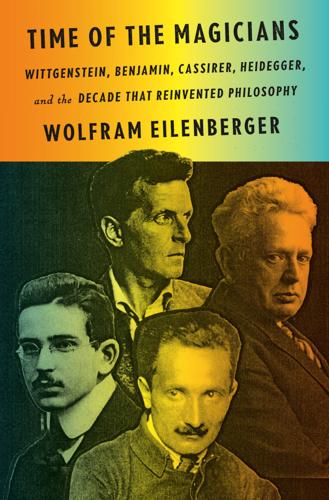
Time of the Magicians: Wittgenstein, Benjamin, Cassirer, Heidegger, and the Decade That Reinvented Philosophy
by
Wolfram Eilenberger
Published 14 Sep 2020
God knows what it will do if I let it off the leash one day,” he established as early as May 1928.18 A year later nothing had changed. Extensive research on the Arcades Project in the Berlin State Library took up almost all of his time. All other articles and commissioned pieces of writing were subordinated to it, and at best fell under the category of quasi-original side projects. This remained true in March 1929, when Benjamin was working on two major essays for Literarische Welt. One was devoted to Proust’s oeuvre, and titled “On the Image of Proust,”19 and the other to the development of contemporary French Surrealism since 1919, and titled “Surrealism: The Last Snapshot of the European Intelligentsia.”20 Every line of both indicates the consistency with which Benjamin’s thought (and that of the authors he engages with) took as its point of departure the constantly accelerating experiences of the metropolis that a denizen of the countryside simply cannot know or comprehend.
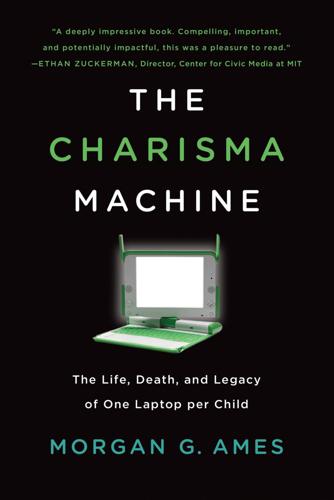
The Charisma Machine: The Life, Death, and Legacy of One Laptop Per Child
by
Morgan G. Ames
Published 19 Nov 2019
Also included was the programming environment Scratch, which became widely popular through the 2010s but was still up and coming in the mid-2000s, spearheaded by Mitch Resnick, an MIT Media Lab professor and Papert’s former student. Scratch’s design lent itself to storytelling and game creation, and a website to encourage sharing and “remixing” Scratch code—though initially developed as a side project by Media Lab student Andrés Monroy-Hernández in 2008—developed into a large online community of open-source Scratch projects. The central mechanism for interaction in both Scratch and Turtle Art was block-based programming: programming commands were encapsulated in drag-and-drop shapes that only fit together if they were compatible, and advanced students could create their own programming blocks.

Billionaire, Nerd, Savior, King: Bill Gates and His Quest to Shape Our World
by
Anupreeta Das
Published 12 Aug 2024
In April 1994, he published a memo called “Internet Strategy and Technical Goals” that he had written during his annual “think week,” when he went to a secret hideaway cottage every February to read prodigiously and delve deeply into Microsoft papers.22 He also sent a confidential memo to a group of Microsoft executives describing the rise of electronic communication as a “sea change” that the company was going to lose out to rivals on.23 But he considered it a side project inside Microsoft. The internet was going to be a free service, and there was little money to be made, he told Microsoft executives and board members. He expected the PC and not the internet browser to be the gateway to future products and services that could be offered to consumers. Also, Microsoft executives were preoccupied with testing and perfecting Windows 95, which had already suffered from multiple delays.

The Invisible Web: Uncovering Information Sources Search Engines Can't See
by
Gary Price
,
Chris Sherman
and
Danny Sullivan
Published 2 Jan 2003
By being able to reference anything with equal ease, a computer could represent associations between things that might seem unrelated but somehow did, in fact, share a relationship. A Web of information would form.” — Tim Berners-Lee, Weaving the Web The Web was created in 1990 by Tim Berners-Lee, who at the time was a contract programmer at the Organization for Nuclear Research (CERN) high-energy physics laboratory in Geneva, Switzerland. The Web was a side project Berners-Lee took on to help him keep track of the mind-boggling diversity of people, computers, research equipment, and other resources that are de rigueur at a massive research institution like CERN. One of the primary challenges faced by CERN scientists was the very diversity that gave it strength.
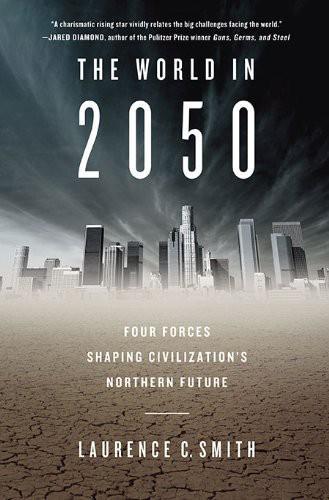
The World in 2050: Four Forces Shaping Civilization's Northern Future
by
Laurence C. Smith
Published 22 Sep 2010
Landing a meeting with one is largely a matter of getting to the sign-up sheet first, which of course I did. When my time slot arrived I went to meet Alley, armed with a list of questions about his Nature papers so I could hear more from the great man himself. That lasted about forty-five seconds, before he insisted on hearing all about my work. I couldn’t believe it. It was a dumb little side project of my research, but Alley’s enthusiasm was totally contagious. We relocated to my lab hole, where he huddled alongside me, giving all manner of helpful advice and inspiration. By the time he ran off late to his next appointment, I was so excited about my project I barely remembered I’d forgotten to ask more about his.

The Big Roads: The Untold Story of the Engineers, Visionaries, and Trailblazers Who Created the American Superhighways
by
Earl Swift
Published 8 Jun 2011
Men in the auto business have talked about the appeal of alternative fuels since before World War I, when the prospect of the world's running out of oil seemed preposterously remote. It should come as no surprise, blessed as he was with a nose for future profit, that among the enthusiastic seekers of a gasoline substitute was Carl Fisher. In June 1914, Fisher, busy at the time with the Dixie Highway and Florida and a blizzard of side projects, was visited in Indianapolis by one John Andrews, an amateur inventor from McKeesport, Pennsylvania, and, in Fisher's estimation, a "poor, apparently ignorant Portuguese." Andrews told Fisher he had developed a water-based fuel that could be made for under 2 cents a gallon. "We put the material in an auto," Fisher wrote, "and it tested up in one case about twenty percent more mileage than a gallon of gasoline would give."
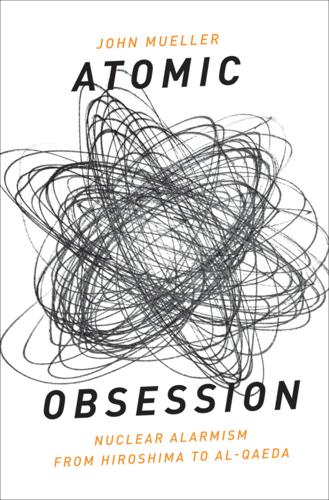
Atomic Obsession: Nuclear Alarmism From Hiroshima to Al-Qaeda
by
John Mueller
Published 1 Nov 2009
However brutally capable they may be at preserving the privileges of the elite and of the top leader, they are headed by people who are selfish, prideful, mercurial, impatient, distrustful (if not fully paranoid), and often brutal, and they routinely promote political hacks, churn personnel, alienate the best scientists and technicians, find it difficult to make coherent long-term plans, make poor technical choices, and exhaust resources with repeated crash programs that have unreasonable deadlines and distracting side projects.3 If the development of rocketry proved to be a very substantial waste to the comparatively well-oiled German regime in World War II, any attempt by contemporary dysfunctional rogue states to carry out an expensive high-tech venture like the development of nuclear weapons and their attendant delivery systems is likely to become a major, even overwhelming, economic and organizational strain.
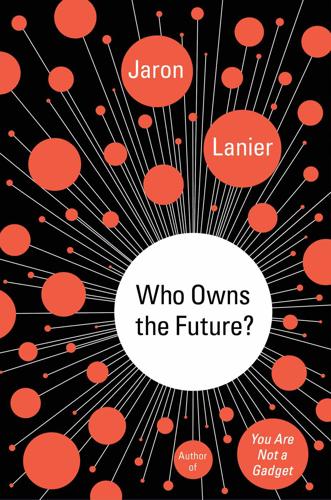
Who Owns the Future?
by
Jaron Lanier
Published 6 May 2013
Other futuristic candidates for jobs for big companies are stabilization of the climate, repositioning earthquakes,* or creating launch structures that make space access inexpensive.† *Gluing existing faults and using explosives to open up new ones in less destructive locations, such as in the oceans, might accomplish this. Yes, this is one of my crazy, speculative side projects. †In a humanistic economy, big companies would trade within the chain of commerce just as they do today. Big companies should do better in the world proposed here, not only because the economy would be expanding but because regulation in a high-tech information economy would be more readily expressed incrementally instead of in big, unpredictable, punitive chunks.

Extreme Economies: Survival, Failure, Future – Lessons From the World’s Limits
by
Richard Davies
Published 4 Sep 2019
Human capital, like informality, is a pool of resilience. John Stuart Mill knew this in the mid-1800s; the people of Aceh showed it as they rebuilt following the 2004 tsunami. Yet most countries make no serious attempt to measure human capital, and the few that do (including the UK) treat it as a side project. Yet the biggest gap in economics is the way it completely ignores social capital. In part, this is because the concept is controversial. Critics on the left say that an economic system relying on social capital would give right-wing politicians headroom to slash public services. Those on the right think it is best left to arise spontaneously, and not the sort of thing governments should interfere with or spend money on.

The Man From the Future: The Visionary Life of John Von Neumann
by
Ananyo Bhattacharya
Published 6 Oct 2021
Semiconductor-based electronic devices would be practically impossible to make on the moon, so in a charming 1950s twist, they plan to use vacuum tubes instead. ‘When I came across RepRap, although it was a modest start, for me it was catalytic,’ says Alex Ellery, who leads the group. ‘What began as a side project now consumes my thoughts.’3 Once they are established on the moon, Ellery’s machines could multiply to form a self-expanding, semi-autonomous space factory making … virtually anything. They might, for example, print bases ready for human colonizers – or even, as Ellery hopes, help to mitigate global warming by making swarms of miniature satellites that can shield us from solar radiation or beam energy down to Earth.4 The inspiration for all these efforts and more is a book entitled Theory of Self-reproducing Automata; its author, John von Neumann.
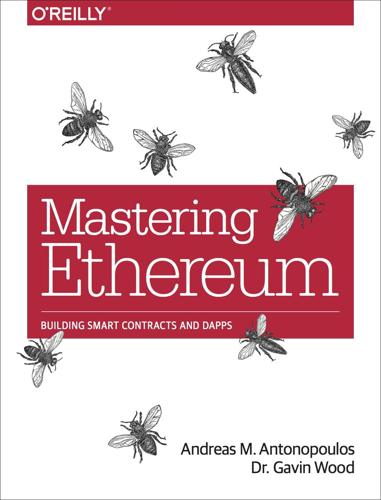
Mastering Ethereum: Building Smart Contracts and DApps
by
Andreas M. Antonopoulos
and
Gavin Wood Ph. D.
Published 23 Dec 2018
GitHub: https://github.com/ethereumjs Website: https://ethereumjs.github.io/ web3j web3j is a Java and Android library for integrating with Ethereum clients and working with smart contracts. GitHub: https://github.com/web3j/web3j Website: https://web3j.io Documentation: https://docs.web3j.io EtherJar EtherJar is another Java library for integrating with Ethereum and working with smart contracts. It’s designed for server-side projects based on Java 8+ and provides low-level access and a high-level wrapper around RPC, Ethereum data structures, and smart contract access. GitHub: https://github.com/infinitape/etherjar Nethereum Nethereum is the .Net integration library for Ethereum. GitHub: https://github.com/Nethereum/Nethereum Website: http://nethereum.com/ Documentation: https://nethereum.readthedocs.io/en/latest/ ethers.js The ethers.js library is a compact, complete, full-featured, extensively tested MIT-licensed Ethereum library, which has received a DevEx grant from the Ethereum Foundation toward its extension and maintenance.

The Long History of the Future: Why Tomorrow's Technology Still Isn't Here
by
Nicole Kobie
Published 3 Jul 2024
First, it bought VueTool, a digital mapping technology out of Stanford’s AI lab that formed the basis of Google Street View, and a subsequent digital mapping project called Ground Truth that was staffed by Thrun – who gave up tenure at Stanford for the gig, no small thing – Levandowski, Stanford’s Mike Montemerlo (who like Thrun also used to work with Whittaker at CMU) and Dmitri Dolgov. While the team worked on mapping, which used a machine-imaging system developed by Levandowski’s 510 Systems, Levandowski also had a side project: building a self-driving pizza delivery car for a TV show called Prototype This! Google didn’t want to participate in the project, so Levandowski founded his own company, Anthony’s Robots, to make what he dubbed the Pribot, using a Toyota Prius and the driving technology developed by 510 Systems.
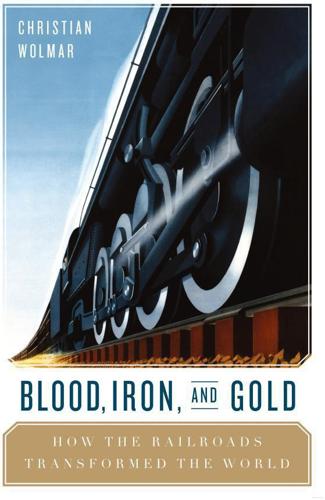
Blood, Iron, and Gold: How the Railways Transformed the World
by
Christian Wolmar
Published 1 Mar 2010
More controversially, though, he then organized the prisoners to pull the trains, which was by no means an easy task as the gradient leaving the prison was relatively steep. An early visitor, a Captain Stonor, described the carriages as ‘very rude construction, very low, double seated with four very small cast iron wheels. On either side projected two long handles which the prisoners lean on to propel the carriage.’ 33 Stonor was appalled at the sight of the poor prisoners, who were dressed in saffron prison garb complete with arrows, having to ‘puff and blow pushing on the carriage’ up the hill but noted that ‘when descending they jump alongside of you and away you go, dashing, crashing, tearing on.’ 34 At the mid point of the line, there was a rest station where the crew changed, and the maintenance gang was housed.
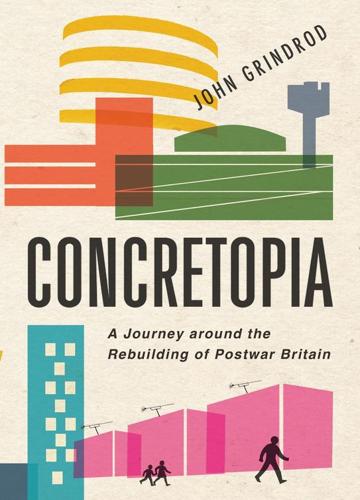
Concretopia: A Journey Around the Rebuilding of Postwar Britain
by
John Grindrod
Published 2 Nov 2013
A total of 157 entries were received, and in January 1950 it was revealed that the dynamic partnership of Powell & Moya had won with a structure that became known as the Skylon: a 250-foot, 12-sided hollow metal structure, to be made from steel and aluminium. Philip Powell and Jacko Moya were both still in their twenties, but when it came to audacious competition victories they were already veterans. In 1946 they’d triumphed in a rather different Thames-side project – to turn the bomb-damaged wasteland of Pimlico into a vast housing estate of 1,600 flats. Not completed until 1962, Churchill Gardens became one of London’s most significant and influential modern housing estates, still held in high regard by residents and architects alike. ‘Jacko and I did separate entries,’ recalled Powell of their Festival of Britain design.

Advertisers at Work
by
Tracy Tuten
Published 28 May 2012
They are a chance to put the pencils down and get away from computer screens. Sometimes we meet off site or bring speakers in. We may go see an art exhibit or a show. We may do a show-and-tell session. For example, our most recent session was Friday. We had a couple of different things going on. Some of our creatives presented side projects. These were cheeky videos which brought the freaking house down. Lastly we did a kind of deep dive on media. Our media staffers presented on key terms, industry developments, new metrics, and that kind of thing. It was very well received. Last month we went to the Tim Burton exhibit at the LACMA, the Los Angeles Contemporary Museum of Art, and sometimes we will go to a Dodger game or what have you.
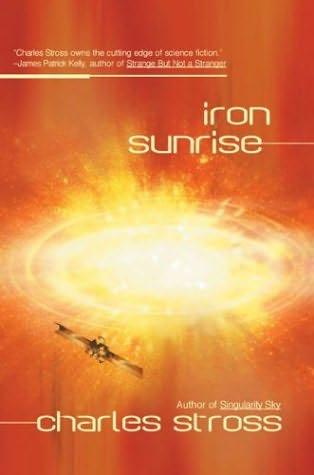
Iron Sunrise
by
Stross, Charles
Published 28 Oct 2004
However, the ReMastered are prone to internal rifts and departmental feuding. They can be manipulated by outside influences such as the Eschaton. It is possible that one such department within the Ministry of State Security on Newpeace was induced to exploit their growing influence over domestic political figures in Moscow to use them as a proxy agency in a side project, the development of a causality-violation weapon. Such devices are hazardous not only because the Eschaton intervenes to prevent their deployment later up the time line, but because they tend to be unstable—” “Later up the what? Hey, I thought you were the Eschaton! What is this?” “Can a T-helper lymphocyte in a capillary in your little finger claim to be you?

Ready Player One
by
Ernest Cline
Published 15 Feb 2011
In my grail diary, I had every single Rush song, album, bootleg, and music video ever made. I had high-res scans of all their liner notes and album artwork. Every frame of Rush concert footage in existence. Every radio and television interview the band had ever done. Unabridged biographies on each band member, along with copies of their side projects and solo work. I pulled up the band’s discography and selected the album I was looking for: 2112, Rush’s classic sci-fi–themed concept album. A high-resolution scan of the album’s cover appeared on my display. The band’s name and the album’s title were printed over a field of stars, and below that, appearing as if reflected in the surface of a rippling lake, was the symbol I’d seen on the Black Tiger game’s monitor: a red five-pointed star enclosed in a circle.
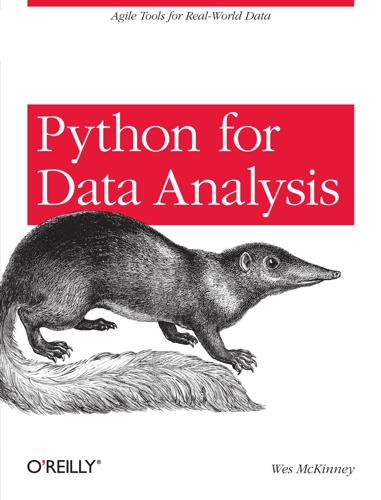
Python for Data Analysis
by
Wes McKinney
Published 30 Dec 2011
You may choose to substitute an Integrated Development Environment (IDE) for a text editor in order to take advantage of more advanced graphical tools and code completion capabilities. Even if so, I strongly recommend making IPython an important part of your workflow. Some IDEs even provide IPython integration, so it’s possible to get the best of both worlds. The IPython project began in 2001 as Fernando Pérez’s side project to make a better interactive Python interpreter. In the subsequent 11 years it has grown into what’s widely considered one of the most important tools in the modern scientific Python computing stack. While it does not provide any computational or data analytical tools by itself, IPython is designed from the ground up to maximize your productivity in both interactive computing and software development.
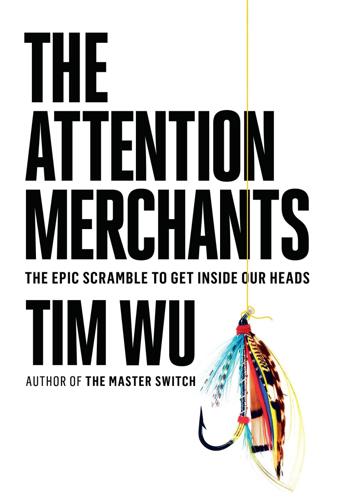
The Attention Merchants: The Epic Scramble to Get Inside Our Heads
by
Tim Wu
Published 14 May 2016
In this way video games were arguably the killer app—the application that justifies the investment—of many computers in the home. As a game machine, sometimes used for other purposes, computers had gained their foothold. There they would lie for some time, a sleeping giant.7 * * * * Breakout was written by Apple’s cofounders, Steve Wozniak and Steve Jobs, as a side project, as described in the Master Switch, chapter 20. CHAPTER 16 AOL PULLS ’EM IN In 1991, when Steve Case, just thirty-three years old, was promoted to CEO of AOL, there were four companies, all but one lost to history, that shared the goal of trying to get Americans to spend more leisure time within an abstraction known as an “online computer network.”
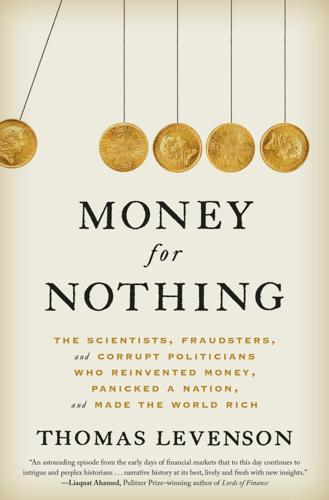
Money for Nothing
by
Thomas Levenson
Published 18 Aug 2020
Once the cash-and-credit crunch of the late 1790s eased, Britain in the Napoleonic era never approached the precipice that King William had faced in the 1690s—that cliff-edge past which the nation might simply run out of money. All that followed—the navy’s victories from St. Vincent to Trafalgar; the army’s work in the Peninsular War and beyond; that little side project known in the United States as the War of 1812—every skirmish and grand conflagration rode on the steady flow of borrowed money from the heart of London to the tip of the spear. * * * — PUT ANOTHER WAY: The United Kingdom’s secret weapon in the fight against Napoleon was the successful implementation of new financial technology.

Surveillance Valley: The Rise of the Military-Digital Complex
by
Yasha Levine
Published 6 Feb 2018
Claiming that harassment from the US government was too much to bear, he spent most of his time in Berlin in a sort of self-imposed exile. There, he continued to do the job Dingledine had hired him to do. He traveled the world training political activists and persuading techies and hackers to join up as Tor volunteers. He also did various side projects, some of which blurred the line between activism and intelligence gathering. In 2012, he made a trip to Burma, a longtime target of US government regime-change efforts.105 The purpose of the trip was to probe the country’s Internet system from within and collect information on its telecommunications infrastructure, information that was then used to compile a government report for policymakers and “international investors” interested in penetrating Burma’s recently deregulated telecom market.106 Appelbaum continued to draw a high five-figure salary from Tor, a government contractor funded almost exclusively by military and intelligence grants.
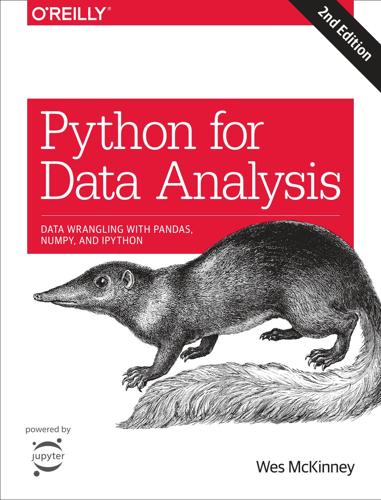
Python for Data Analysis: Data Wrangling with Pandas, NumPy, and IPython
by
Wes McKinney
Published 25 Sep 2017
While there are other visualization libraries available to Python programmers, matplotlib is the most widely used and as such has generally good integration with the rest of the ecosystem. I think it is a safe choice as a default visualization tool. IPython and Jupyter The IPython project began in 2001 as Fernando Pérez’s side project to make a better interactive Python interpreter. In the subsequent 16 years it has become one of the most important tools in the modern Python data stack. While it does not provide any computational or data analytical tools by itself, IPython is designed from the ground up to maximize your productivity in both interactive computing and software development.

The Cult of We: WeWork, Adam Neumann, and the Great Startup Delusion
by
Eliot Brown
and
Maureen Farrell
Published 19 Jul 2021
Founders Fund even wrote on its website that “entrepreneurs who make it have a near-messianic attitude.” Money flowed to those like Brian Chesky, the magnetic co-founder and CEO of Airbnb, who had impressed his first funders at Y Combinator not with his idea—they thought people wouldn’t cede their homes to strangers—but with the creativity he exhibited in a side project, a cereal called Obama O’s. It flowed to Alex Karp, the quirky CEO of the data analysis firm Palantir, who wasn’t a data analyst—he holds a PhD in social theory—but was a fantastic storyteller. Distinctive sartorial choices, like the Steve Jobsian black turtlenecks, were a plus. A little bit of crazy never hurt.
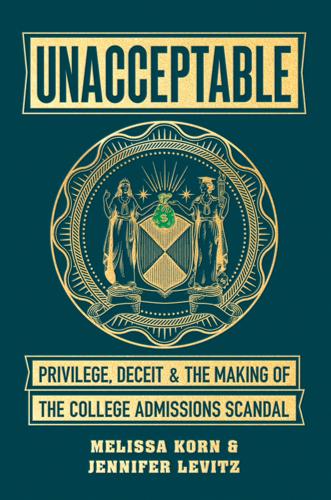
Unacceptable: Privilege, Deceit & the Making of the College Admissions Scandal
by
Melissa Korn
and
Jennifer Levitz
Published 20 Jul 2020
It takes a lot of mental energy to carry on as if all is normal, while moonlighting as a snitch. Singer had the feds contacting him regularly to make sure he was staying in line. He had people listening to him every day. And he couldn’t tell anyone. He seemed a bit frayed by it. For one of his countless side projects, he had invested around $1 million in USA-UES, a Los Angeles education technology startup aimed at serving Chinese students. He usually held productive and regular catch-up calls with Chris Li, the president and CEO, to talk patiently through goals and targets. But Singer had grown short and snippy, for no apparent reason.

Open: The Story of Human Progress
by
Johan Norberg
Published 14 Sep 2020
He eventually developed this into an idea of a digital platform that could gather all information on the internet, based on a previous platform called SGML developed at IBM in the 1960s. After having received the official blessing to continue this research from CERN, where he then worked, it only took a year before he could present the first web server, web browser and website. But ‘it was a side project that his superiors knew next to nothing about’.38 As Berners-Lee himself has noted: Inventing the World Wide Web involved my growing realization that there was a power in arranging ideas in an unconstrained, weblike way. And that awareness came to me through precisely that kind of process. The Web arose as the answer to an open challenge, through the swirling together of influences, ideas, and realizations from many sides.39 And nothing but the unconstrained swirling together of ideas from all sides could fill this web with life.

Power Play: Tesla, Elon Musk, and the Bet of the Century
by
Tim Higgins
Published 2 Aug 2021
He had no desire to send an investment into bankruptcy and he disputed the idea that he wanted to take over running Tesla. The deal closed on Christmas Eve. Musk, who was at his brother’s home in Boulder, Colorado, broke down in tears. He had barely averted a crisis that could just as easily have cratered his dream of an electric car. What had begun more than four years earlier as a side project to SpaceX had evolved into a major drain on his time, money, and love. All of his fortune was now on the line. From the depths of the Great Recession, he’d done something that other U.S. automakers were unable to do: avoid bankruptcy. Congress had rejected a bailout of GM and Chrysler that December.
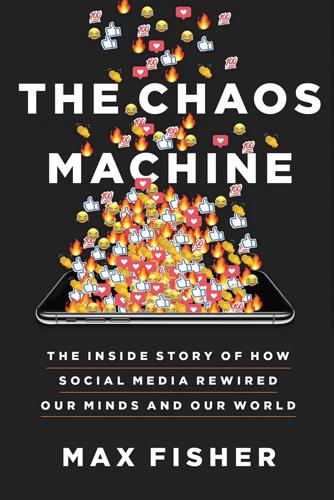
The Chaos Machine: The Inside Story of How Social Media Rewired Our Minds and Our World
by
Max Fisher
Published 5 Sep 2022
Video-makers realized that titles like “THE TRUTH ABOUT FEMINISM” brought viewers pouring in, so made more. One of Google’s most cherished freedoms, inherited from Silicon Valley’s midcentury founders and borrowed outright from Stanford’s research programs across town, is the 80/20 rule. Employees owe 80 percent of their time to formal assignments but can spend the other 20 pursuing side projects. Chaslot and his team leader, who shared his concerns, dedicated their 20 to developing a new algorithm that might balance profit goals with public well-being. That fall, in 2012, at a YouTube leadership conference in Los Angeles, an executive pulled aside Goodrow and a few others to tell them he was going to make a surprise announcement.
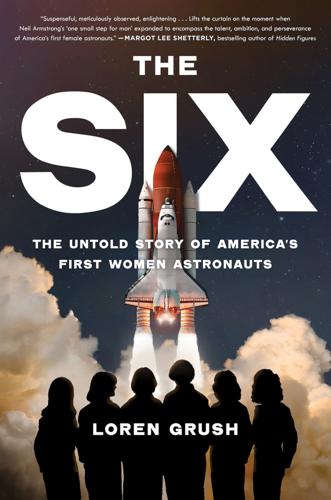
The Six: The Untold Story of America's First Women Astronauts
by
Loren Grush
Published 11 Sep 2023
The Space Shuttle crews would be bigger, with more coordination between the vehicle’s inhabitants, which meant people would need to rely on each other to a greater degree. That meant big egos were summarily dismissed. The panel also sought people who could be flexible, with interests in more than one field. Sure, getting a master’s or PhD was impressive, but the board looked for hobbies or side projects that indicated the candidate didn’t just focus on work alone. Say, for instance, an interest in flying, playing classical piano, or playing amateur tennis. This was key, since Space Shuttle crews would wear a diverse array of hats during their missions, and they’d need to understand various disciplines—from engineering and rocketry to astronomy and Earth science.

Makers at Work: Folks Reinventing the World One Object or Idea at a Time
by
Steven Osborn
Published 17 Sep 2013
So I realized, at that moment in 2002, that the state of electronics stores, electronic parts—it was really hard to get anything online. So I thought, “Well, maybe I can start my own little store.” The goal was just to feed my own addiction. The goal was to make enough money so that I could continue to build my own side projects. Osborn: So your goal was to have it all online, even in 2002? From really early on? Seidle: Yeah. In 2002, I assumed that there were other people like me that didn’t want to make a phone call, didn’t really have a fax or want to fax in an order with a credit card number. In 2002, I said, “This should be easy.
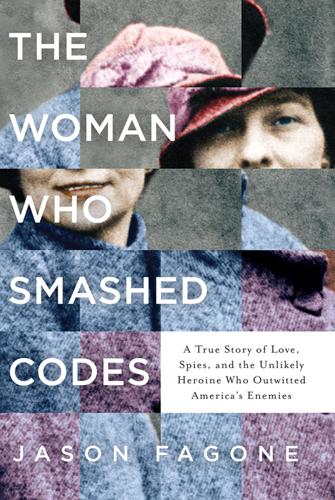
The Woman Who Smashed Codes: A True Story of Love, Spies, and the Unlikely Heroine Who Outwitted America's Enemies
by
Jason Fagone
Published 25 Sep 2017
Cultured, businesslike, cunning, and, despite her 45 years of age, most attractive, she presented one of the most difficult problems in detection the FBI has tackled in this war.” And while readers learned of the Doll Lady’s treachery from Hoover, the woman who analyzed the Doll Lady’s letters in her spare time, quietly, as a side project, returned to her primary task of hunting Nazi spies. Through the rest of 1944, as Elizebeth and her coast guard team continued to decrypt Nazi radio messages, she noticed an uptick in paranoia in the plaintexts, a creeping sense of doom. All along, Elizebeth had been watching the Nazis build a spy network, and now, after invisibly undermining that network, she was watching it die—and stepping on its neck when need be.

We Are Anonymous: Inside the Hacker World of LulzSec, Anonymous, and the Global Cyber Insurgency
by
Parmy Olson
Published 5 Jun 2012
The associates were hackers like Neuron, an easygoing exploit enthusiast; Storm, who was mysterious but highly skilled; Joepie91, the well-known and extremely loquacious Anon who ran the AnonNews.net website; M_nerva, a somewhat aloof but attentive young hacker; and Trollpoll, a dedicated anti–white hat activist. In the most busy periods of LulzSec, both the core and secondary crew were in #pure-elite or online for most of the day and sometimes through the night. Some were talented coders who could create new scripts for the team as their own side projects; Pwnsauce, for instance, had been working on a project to create a new type of encryption. In the end, Topiary never invited anyone he knew into #pure-elite, and while Kayla had recommended a few friends, Sabu wasn’t comfortable with letting them in either. According to Topiary, about 90 percent of the hackers who ended up in #pure-elite were Sabu’s friends or acquaintances from the underground.

London: The Autobiography
by
Jon E. Lewis
Published 25 Aug 2009
And they wafted to him round foils of silver intermingled with thin round wafers, and wine from the channels and cocks of the conduit, so that they might receive him with bread and wine as Melchisedech received Abraham when he returned from the fall of the four kings. And when they came to the cross in Cheapside . . . it was hidden by a beautiful castle of wood, very ingeniously and prettily constructed, and adorned with three beautiful columns, . . . which had . . . arches on either side projecting over the street, and stretching to the buildings on each side of the road . . . And across the front of the arches was written, ‘Glorious things of thee are spoken, O city of God’. This castle was covered with linen painted the colour of white marble, and green and red jasper, as if the whole work had been the result of the mason’s art, fashioned from blocks of masonry and perfect precious stones.
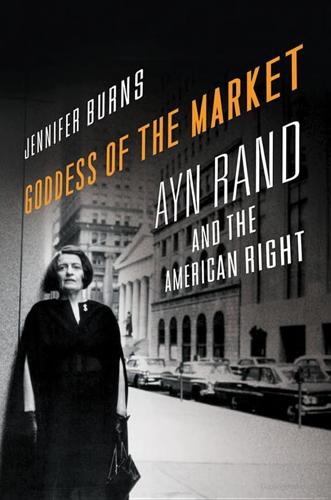
Goddess of the Market: Ayn Rand and the American Right
by
Jennifer Burns
Published 18 Oct 2009
Although the Liberty League made several awkward attempts at populism, its main financial backers were the conservative Du Pont family. Tarred as fascists after several of the group’s members praised Mussolini and called for an American dictator, the Liberty League disintegrated within a few years of its founding.30 Even as she dwelled on Roosevelt’s perfidy, Rand pursued a number of side projects. Prompted by the interest of a theater producer, she began a stage adaptation of We the Living, entitled The Unconquered.31 When Frank found work in a summer stock production of Night of January 16th the two spent an idyllic few weeks in Stonington, Connecticut. There, in a flash of inspiration, Rand completed a new manuscript, a novel of scarcely a hundred pages that she titled Anthem.
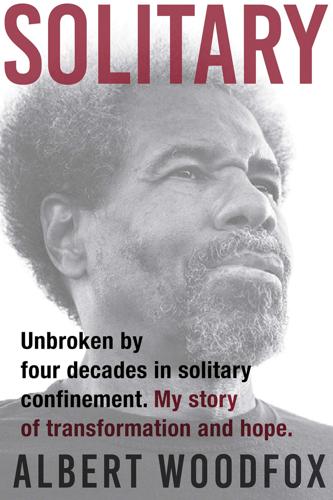
Solitary
by
Albert Woodfox
Published 12 Mar 2019
They were paid $16,000 a year to infiltrate, disrupt, and destroy the SDS at LSU, acting as spies and agents provocateurs, making up stories to create mistrust among the students and antiwar protesters, and shaming many of them into taking more extreme actions than they wanted to, which led to their arrests. As a side project, they took on the Angola 4 support committee and played a part in its demise. In the summer of 1972, Huey Newton, while attempting to centralize activities within the party, called the members of the New Orleans Black Panther Party chapter to Oakland and sent replacement Panthers from Cincinnati to New Orleans.
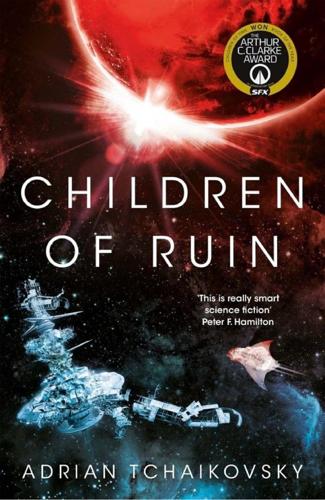
Children of Ruin
by
Adrian Tchaikovsky
Published 13 May 2019
That would set the oxygen meter creeping upwards, but, of course, that in itself would be robbing the planet of heat-retaining CO2, meaning the whole volcanism and greenhouse gassery would need to be kicked up a notch, and the equilibrium of the atmosphere kept balanced like a spun plate that couldn’t be allowed to so much as wobble for year upon year. And then there would come some more waiting, and he’d sleep out most of it. Except the current bout of watch-and-wait had tested his patience enough to set him on some side-projects, and now they were sufficiently advanced that he was contemplating spending another year of his life on them rather than saving it for the actual terraforming. He glanced at his companion, who had come out to stare through the glass at him. ‘Hungry, yet?’ he asked, but he didn’t think so. Paul was just curious.
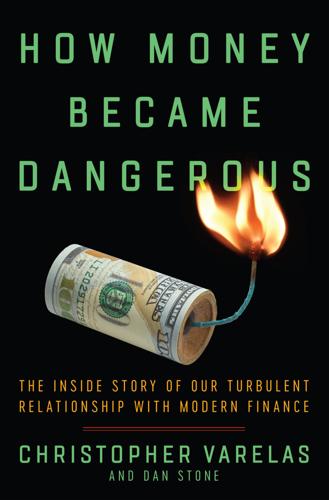
How Money Became Dangerous
by
Christopher Varelas
Published 15 Oct 2019
“That should be easy,” I said. “One mention of working at Disneyland and we should be okay.” I liked Mark and Caesar, and despite the fact that I was more than busy running the technology M&A effort as the dotcom industry continued to explode, working with those guys on U.S. Filter sounded like a fun side project. So I found myself on a plane for Palm Springs, headed out to present some acquisition ideas. * * * Andy Seidel had the longest tongue anyone had ever seen. The great thing about Andy was that, even though he was COO of what was fast becoming a massive and successful water company, he had no problem showing his tongue.

Coders: The Making of a New Tribe and the Remaking of the World
by
Clive Thompson
Published 26 Mar 2019
Linux is now so widely relied upon by the computing world that many tech firms, including Intel, Red Hat, and Samsung, pay employees to be fullor part-time contributors to Linux. Being a core Linux contributor is regarded as a pretty auspicious item on a coder’s CV. Contributing to a popular open source project is usually a career-enhancing move, which is why so many coders try to get involved in one. It’s also why so many release their weekend just-for-fun side-projects as open source code on sites like GitHub. There’s the pleasure of letting others see your work, the joy of discovering that some weird tool you crafted for yourself is also useful for others; plus, you can learn a lot from looking at other people’s open code and seeing how they built things. Coders also told me they felt an ecological sense of obligation: They open source their own code—and contribute to other people’s projects—as a way of giving back to a scene that has helped them out.
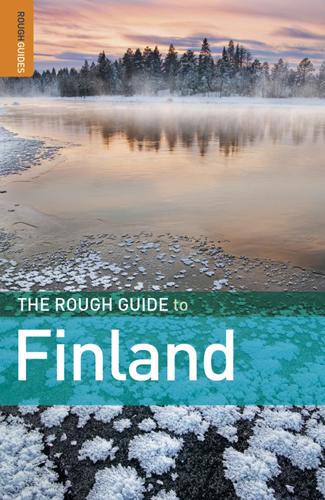
The Rough Guide to Finland
by
Rough Guides
Published 31 May 2010
The Government Palace (Valtioneuvosto), known as the Senate House until independence, consumes the entire eastern side at Snellmaninkatu 1. Constructed in 1822, it was Engel’s first building on the square, a colossal Corinthian-columned structure 110m in length with a domed central projection and side projections at each end of the facade. It was here that an angry Finnish civil servant, Eugen Schauman, became a national hero by assassinating the much-hated Russian governor-general Bobrikov in 1904. The entire building underwent a renovation in the 1980s, bringing its staircase and presidential chamber back to their original lustre.
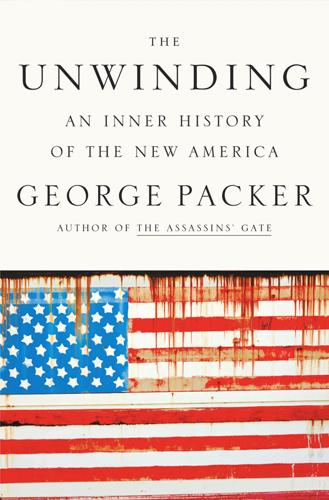
The Unwinding: An Inner History of the New America
by
George Packer
Published 4 Mar 2014
After Granny stopped working they lived on her Social Security and Vickie’s welfare checks, and there was so little money that sometimes the gas was shut off. When her father and grandmother were still living in the West Lake projects, north of downtown, Tammy sometimes visited them, and when she was a little older she had friends living in the east side projects, generation after generation on welfare who never got out. They could buy things only at the start of the month, when stores raised prices to take advantage of the checks. Even if they got on a program to pay their gas bill they would always owe, they’d die owing that money. Tammy vowed to herself that she would not go on welfare and live in the projects.

A Generation of Sociopaths: How the Baby Boomers Betrayed America
by
Bruce Cannon Gibney
Published 7 Mar 2017
* It’s doubtful that a malevolent Skynet will be the author of catastrophe; more likely, AIs responsible for essential systems like power plants, autonomous weapons, dams, and so on will make mistakes that could unleash catastrophe. Then again, the possibility of a rogue supercomputer is not zero, though it remains distant. * Full disclosure: I invested in DeepMind personally in its earlier years; the company was then acquired by Google, in which I now hold stock. Wall Street has long dismissed Google’s side projects like self-driving cars and AI as money sinks, but Google has a thoughtful plan and one you may not be fully comfortable with. Google (in the verb sense; may as well start there) “self-driving car,” “AlphaGo,” and “Android Marketshare” and you’ll get a sense for the future Google might have in mind.

Editing Humanity: The CRISPR Revolution and the New Era of Genome Editing
by
Kevin Davies
Published 5 Oct 2020
It was sent by Lin Shuailiang, a Chinese student who had spent nine months at the Broad from October 2011 through June 2012 and was a coauthor on Zhang’s Science article. Lin raised allegations about the provenance of the CRISPR work in Zhang’s lab. Lin called the PTO decision “a joke” and claimed, “Feng is not only unfair to me but also the science history.” He continued: I began the CRISPR project solely the first day I came to Feng Zhang’s lab in 2011 as a side project for a visiting student. At that time, the whole lab except me focused on TALEN projects. I was working on the CRISPR project until I went back to China [in] 2012 June for my PhD… After seeing your [Science] paper, Feng Zhang and Le Cong quickly jumped to the project without letting me know. My lab notebooks, emails and other files… recorded every step of the lab’s failure process… We did not work it out before seeing your paper, it’s really a pity.

The Asylum: The Renegades Who Hijacked the World's Oil Market
by
Leah McGrath Goodman
Published 15 Feb 2011
He wanted to make it easier for power plants, specifically his power plants, to buy and sell their electricity. In 1997, he purchased an exchange in Atlanta from Warren Buffett, gutting it and assembling a global electronic-trading platform that could handle a wide array of futures and over-the-counter trades. He’d only intended it to be a side project, but it ended up consuming him. He left his full-time job as president of the power-plant development firm he’d started with some business-school friends to give it his full attention. His project soon piqued the interest of Enron, which, by 1992, was North America’s largest merchant of natural gas, the lifeblood of power plants.

Velocity Weapon
by
Megan E. O'Keefe
Published 10 Jun 2019
Once the guardcore had identified Jules as the killer, they’d trace her steps, find this autocab, and listen to every word they’d said inside. Including everything that’d come before—talk of the lab, of Silverfang. Jules wanted to be a fly on that wall when the members of the guardcore who weren’t in on the stealth-ops side project heard what they’d said. Or maybe they were all in on it. She just didn’t know. And chances were good now she’d never know. They had to disappear, and fast, and to hell with the lab and all its entanglements. They’d come back for Lolla. When it was safe. CHAPTER 54 PRIME STANDARD YEAR 3543 DAY FORTY OF TOO MANY She sucked air through her teeth and hunched over, gripping the sides of her head with both hands and squeezing, squeezing.

The Alignment Problem: Machine Learning and Human Values
by
Brian Christian
Published 5 Oct 2020
A day-long workshop was held at that year’s conference in Montreal, with Barocas and Hardt introducing the proceedings and Dwork giving the first talk. Hardt graduated and went from Princeton to IBM Research. He kept chipping away at fairness questions in the background. “I always had to have another thing to continue to exist as a computer scientist. In terms of my career, this was always like a side project.” IBM, to its credit, gave him a lot of freedom, even if his passion wasn’t widely shared. “My group at IBM wasn’t particularly interested in that topic,” he says, “but neither was anybody else.” The two came back and repeated the conference again in 2015. “The room was full,” Hardt recalls, “people attended, but it didn’t spark a revolution at that point, it’s safe to say.”
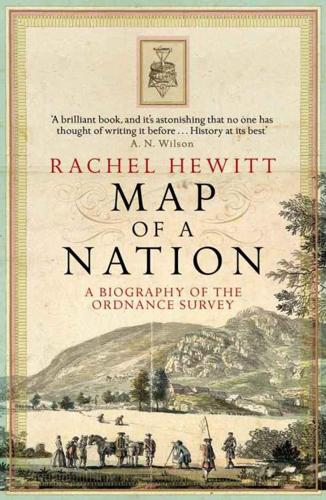
Map of a Nation: A Biography of the Ordnance Survey
by
Rachel Hewitt
Published 6 Jul 2011
Its superintendents (Edward Williams only excepted) had all been ambitious perfectionists, whose intentions to create an utterly truthful image of the British Isles led them repeatedly into a number of distractions from the central task of map-making, such as the measurement of the meridian arc through England, and the Shetlands venture. Even Colby’s decisions to map Ireland and Scotland were diversions from the completion of the First Series of Ordnance Survey maps, which ostensibly formed the project’s principal focus. Although one cannot help but contemplate these side projects with awed admiration, it is also true that they slowed down the production of complete maps of England and Wales by decades, and increased the Ordnance Survey’s expenditure by eyewatering amounts. As we shall see, this would cause significant problems for Colby. BY 1830 THOMAS AISKEW LARCOM had been moved from Ireland’s ‘great outdoors’ to the comfort of the Ordnance Survey’s head-quarters at Mountjoy House, in Phoenix Park, about two miles north-west of central Dublin.
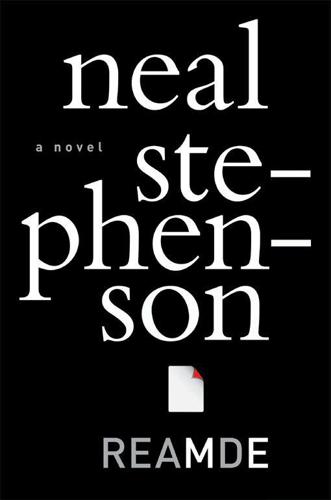
Reamde
by
Neal Stephenson
Published 19 Sep 2011
Zula’s Prius was shifted deeper into the bay and Wallace’s sports car was moved in next to it, clearing the alley. During these efforts, Zula’s phone was retrieved and presented to her, by Ivanov, as if it were a Swarovski necklace. “ZULA.” “C-plus, hi.” “It’s not often that I have the pleasure of talking to someone in the magma department.” “C-plus, that is because I am working on a side project here—long story—that Richard sort of put me on.” “Management by founder,” Corvallis said, in a tone of ironic disapproval. Supposedly, “management by founder”—a term of art for Richard doing whatever struck his fancy—had been eradicated from Corporation 9592 a few years ago when professional executives had been parachuted in to run things.
…
“Unknown,” C-plus said, “but thanks to your niece, we’re pretty sure he’s in Xiamen.” “The place with the terra-cotta soldiers?” “No, you’re thinking of Xian.” “Zula’s been helping you track these guys down?” C-plus looked a bit taken aback. “I thought you were aware of it.” “Of what?” “Her participation. She said it was a side project that you had put her on.” Had it been anyone else, Richard would have said, I have no idea what the hell you are talking about, but since it was family, his instinct was to cover for her. “There may have been some mission drift,” he speculated. “Whatever. Anyway, we have an IP address in Xiamen, but nothing else.”

The Architecture of Open Source Applications
by
Amy Brown
and
Greg Wilson
Published 24 May 2011
At the time I wrote sendmail the model was that you only sent messages to Unix users. Today, that is almost never the case; even on systems that do use that model, there are system accounts that should never receive e-mail. 17.8.2. Things I Would Do The Same Of course, some things did work well… Syslog One of the successful side projects from sendmail was syslog. At the time sendmail was written, programs that needed to log had a specific file that they would write. These were scattered around the filesystem. Syslog was difficult to write at the time (UDP didn't exist yet, so I used something called mpx files), but well worth it.

The Practice of Cloud System Administration: DevOps and SRE Practices for Web Services, Volume 2
by
Thomas A. Limoncelli
,
Strata R. Chalup
and
Christina J. Hogan
Published 27 Aug 2014
The rest of the team didn’t know about this pre-check, but now it could be added to the procedure book and everyone would know to do it. More importantly, this realization raised an important issue: why wasn’t the amount of free disk space always being monitored? What would happen if an emergency failover was needed and disk space was too low? A side project was spawned to monitor the system’s available disk space. Many similar issues were discovered and fixed. Eventually the process got more reliable and soon confidence increased. The team had one less source of stress. * * * 15.2 Individual Training: Wheel of Misfortune There are many different ways a system can break.

Site Reliability Engineering: How Google Runs Production Systems
by
Betsy Beyer
,
Chris Jones
,
Jennifer Petoff
and
Niall Richard Murphy
Published 15 Apr 2016
Dedicated project time is necessary to enable progress on a project, because it’s nearly impossible to write code—much less to concentrate on larger, more impactful projects—when you’re thrashing between several tasks in the course of an hour. Therefore, the ability to work on a software project without interrupts is often an attractive reason for engineers to begin working on a development project. Such time must be aggressively defended. The majority of software products developed within SRE begin as side projects whose utility leads them to grow and become formalized. At this point, a product may branch off into one of several possible directions: Remain a grassroots effort developed in engineers’ spare time Become established as a formal project through structured processes (see “Getting There”) Gain executive sponsorship from within SRE leadership to expand into a fully staffed software development effort However, in any of these scenarios—and this is a point worth stressing—it’s essential that the SREs involved in any development effort continue working as SREs instead of becoming full-time developers embedded in the SRE organization.

Tribe of Mentors: Short Life Advice From the Best in the World
by
Timothy Ferriss
Published 14 Jun 2017
But it didn’t have to be that way. That experience taught me to take agency in my own professional narratives, and that endings don’t have to be failures, especially when you choose to end a project or shut down a business. Shortly after the restaurant closed, I started a food market as a small side project, and it ended up being wildly successful. I had more press and customers than I could handle. I had investors clamoring to get in on the action. But all I wanted to do was write. I didn’t want to run a food market, and since my name was all over it, I didn’t want to hand it off to anyone else, either.

The Secret of Our Success: How Culture Is Driving Human Evolution, Domesticating Our Species, and Making Us Smarter
by
Joseph Henrich
Published 27 Oct 2015
Their approach also allowed one to think systematically about how natural selection might have shaped human learning abilities and psychology. I didn’t know any population genetics, but because I knew about state variables, differential equations, and stable equilibria (I was an aerospace engineer), I could more or less read and understand their papers. By the end of my first year, working on a side project under Rob’s guidance, I’d written a MATLAB program to study the evolution of conformist transmission (you’ll hear more about this in chapter 4). Entering my third year, with a master’s under my belt, I decided to go back to the drawing board—to start over, in a sense. I consciously took a “reading year,” though I knew it would extend my time to the PhD by one year.

This Is Service Design Doing: Applying Service Design Thinking in the Real World: A Practitioners' Handbook
by
Marc Stickdorn
,
Markus Edgar Hormess
,
Adam Lawrence
and
Jakob Schneider
Published 12 Jan 2018
Based on feedback we received from our consulting clients and the wider service design community, we realized that we need to build web-based software that allows users to create professional journey maps (e.g., after a workshop to share with all participants and as an input for further iterations). What started as a simple side project to our service design consulting developed into a startup. We even had a business plan … Smaply became a web-based tool to visualize personas, stakeholder maps, and journey maps. This case focuses on our prototyping process and how we prototyped, tested, and changed our business model over the years.

Valley of Genius: The Uncensored History of Silicon Valley (As Told by the Hackers, Founders, and Freaks Who Made It Boom)
by
Adam Fisher
Published 9 Jul 2018
Paul Buchheit: AdSense, the content-targeted ads, was actually something that, if I recall, I did on a Friday. It was an idea that we had talked about for a long time, but there was this belief that somehow it wouldn’t work. But it seemed like an interesting problem, so one evening I implemented this content-targeting system, just as sort of a side project, not because I was supposed to. And it turned out to work. Susan Wojcicki: It was a really novel idea at the time to serve ads that were targeted dynamically. People were saying, “This is a sports site, so we’ll serve a sports ad.” And we were saying, “No. We can actually look at the page in real time and figure out what this page is about.”
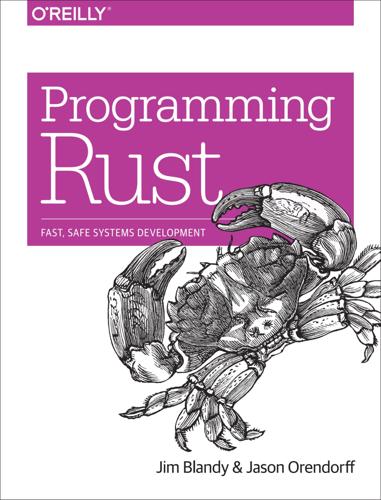
Programming Rust: Fast, Safe Systems Development
by
Jim Blandy
and
Jason Orendorff
Published 21 Nov 2017
If you’re an experienced developer in any programming language, whether that’s C#, Java, Python, JavaScript, or something else, this book is for you too. However, you don’t just need to learn Rust. To get the most out of the language, you also need to gain some experience with systems programming. We recommend reading this book while also implementing some systems programming side projects in Rust. Build something you’ve never built before, something that takes advantage of Rust’s speed, concurrency, and safety. The list of topics at the beginning of this preface should give you some ideas. Why We Wrote This Book We set out to write the book we wished we had when we started learning Rust.

This Is How They Tell Me the World Ends: The Cyberweapons Arms Race
by
Nicole Perlroth
Published 9 Feb 2021
I am eternally grateful to the Deans: Dean Baquet, the Times executive editor, for inviting me into the room of classified secrets, and Dean Murphy, who generously gave me the time to write this book. Pui-Wing Tam and James Kerstetter have built the best technology team around. Both afforded me the time to pursue this side project and the encouragement I needed to stay the course, even when I was on the brink of mental and physical exhaustion. A special thanks to John Markoff, for patiently listening to my (many) questions, offering sources and advice when I took over his beat, and being such an inspiring role-model for so many frightened reporters joining the San Francisco bureau.
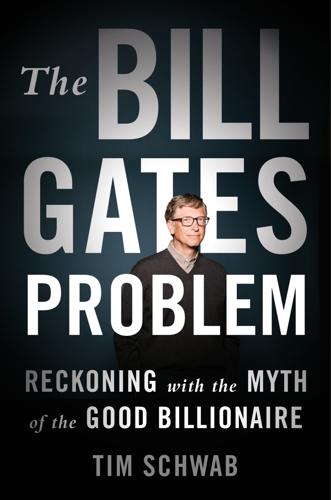
The Bill Gates Problem: Reckoning With the Myth of the Good Billionaire
by
Tim Schwab
Published 13 Nov 2023
As weak as current regulations around private foundations are, they at least give us some sight line into the Gates Foundation’s work—like its annual tax filings, which allow us to see how some of the money flows. In some respects, Bill and Melinda French Gates already appear to be following Zuckerberg’s lead, spending more and more time and money on side projects like Breakthrough Energy, Pivotal Ventures, Gates Ventures, and other quasi-philanthropic efforts organized as companies, not private foundations. This is where it becomes clear that really fixing our Bill Gates problem has to go beyond congressional reforms to the Gates Foundation. As long as Bill Gates maintains his extreme wealth, he will remain a canker on democracy.

NeuroTribes: The Legacy of Autism and the Future of Neurodiversity
by
Steve Silberman
Published 24 Aug 2015
One night, the topic of conversation was theoretical physics; the next, it was the gliding tones of Cantonese opera, followed by thoughts on why so many coders and mathematicians are also chess players and musicians. The tireless curiosity of these middle-aged wizards gave them an endearingly youthful quality, as if they’d found ways of turning teenage quests for arcane knowledge into rewarding careers. On weekends, they coded recreationally, spinning off side projects that lay the foundations of new technologies and startups. After a few days on the ship, I came to feel that my fellow passengers were not just a group of IT experts who happened to use the same tools. They were more like a tribe of digital natives with their own history, rituals, ethics, forms of play, and oral lore.

The Data Warehouse Toolkit: The Definitive Guide to Dimensional Modeling
by
Ralph Kimball
and
Margy Ross
Published 30 Jun 2013
Ten cost facts may mean 10 different extract and transformation programs. Before signing up for mission impossible, be certain to perform a detailed assessment of what is available and feasible from the source systems. You certainly don't want the DW/BI team saddled with driving the organization to consensus on activity-based costing as a side project, on top of managing a number of parallel extract implementations. If time and organization patience permits, profitability is often tackled as a consolidated dimensional model after the components of revenue and cost have been sourced and delivered separately to business users in the DW/BI environment.

Facebook: The Inside Story
by
Steven Levy
Published 25 Feb 2020
“Just don’t fuck it up”: Sarah Lacy, Once You’re Lucky, Twice You’re Good (Avery; reprint edition, 2009), 154. Lacy’s book is another valuable account of Facebook’s early days. obsessed with movies: The Facebook Effect has an extensive description of how early Facebookers used movie quotes. See 97–98. “We put a bullet in that thing”: M. G. Siegler, “Wirehog, Zuckerberg’s Side Project That Almost Killed Facebook,” TechCrunch, May 26, 2010. too old when you return: Kevin J. Feeney, “Business, Casual,” Harvard Crimson, February 24, 2005. landlady: Mike Swift, “Mark Zuckerberg of Facebook: Focused from the Beginning,” Mercury News, February 5, 2012. “Everyone else was like”: Feeney, “Business, Casual.”

The Code: Silicon Valley and the Remaking of America
by
Margaret O'Mara
Published 8 Jul 2019
Within months, the two had decamped from Boston to Albuquerque, and Traf-O-Data had a new name: Micro-soft.23 Bill Gates had been like most hackers, with little compunction about the backdoors and gray areas that would allow him to get things for free. He’d gotten in trouble at Lakeside and Harvard for hogging free computer time and for using school and university computers for his own side projects. But now that he and Allen were devoting every waking moment to building a software business, his outrage grew about those who thought they could get code for nothing. Only a few months into Gates and Allen’s MITS adventure, a spool of their Altair BASIC tape got into the hands of a Homebrewer, who, in classic hacker fashion, made fifty copies of it to distribute to other members.

Four Battlegrounds
by
Paul Scharre
Published 18 Jan 2023
“I’d never had a job that was that big and important and you could easily feel how you were doing good,” she said. Liz and a few other employees who were working on social good within Clarifai got together to create what she called “Clarifai-for-good Voltron,” covering issues including diversity in recruitment, charity matching, mentorship, and AI ethics. Their efforts weren’t merely a side project; they worked with the company leadership to build a formal structure for integrating ethics into the company’s practices. Clarifai was at the front of a trend. Liz was in line to take an official role leading ethics oversight. “It was just a dream come true that you could do this stuff and get paid for it at the same time,” she said.
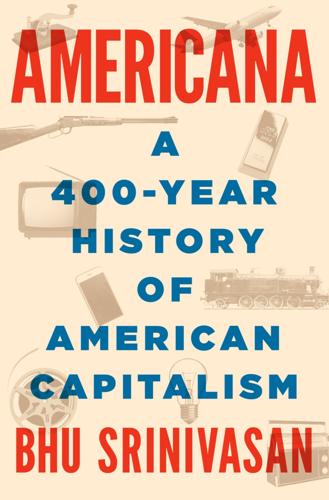
Americana: A 400-Year History of American Capitalism
by
Bhu Srinivasan
Published 25 Sep 2017
Knight assumed that the impression of Japanese quality would change over time and ordered a few samples. Knight then reached out to his former track coach at the University of Oregon, Bill Bowerman. Investing $500 each to form Blue Ribbon Sports, the men started importing Onitsukas from Japan. For both men, the venture was a side project. Knight started a day job at Price Waterhouse as a CPA. After four years, he was able to earn enough from Blue Ribbon sales to quit his job. By 1972 Blue Ribbon was selling nearly $2 million worth of Onitsuka shoes in America. But soon after that, Onitsuka decided to cut Knight out as a middleman and handle its own U.S. distribution.

Americana
by
Bhu Srinivasan
Knight assumed that the impression of Japanese quality would change over time and ordered a few samples. Knight then reached out to his former track coach at the University of Oregon, Bill Bowerman. Investing $500 each to form Blue Ribbon Sports, the men started importing Onitsukas from Japan. For both men, the venture was a side project. Knight started a day job at Price Waterhouse as a CPA. After four years, he was able to earn enough from Blue Ribbon sales to quit his job. By 1972 Blue Ribbon was selling nearly $2 million worth of Onitsuka shoes in America. But soon after that, Onitsuka decided to cut Knight out as a middleman and handle its own U.S. distribution.

Coders at Work
by
Peter Seibel
Published 22 Jun 2009
Seibel: So you've hired for your own company, and I assume you've been involved in hiring at Google. How do you recognize a great programmer? Fitzpatrick: I often look for people that have done, like, a lot of stuff on their own that wasn't asked of them. Not just their school project or just what their previous employer had them do. Somebody who was passionate about something and had some side project. How did they maintain it and how serious did they get with it? Or do they do a lot of quick hacks and abandon them? Seibel: Do you have favorite interview questions? Fitzpatrick: One of the ones I've given a few times because it was on my AP programming test is given two decimal numbers as strings of arbitrary length, multiply them.
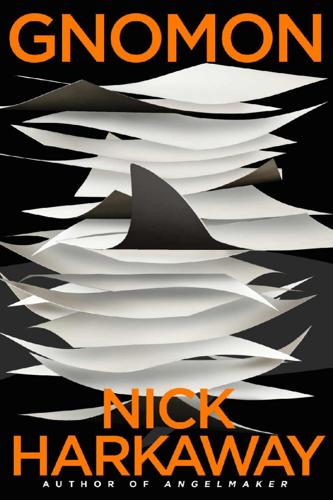
Gnomon
by
Nick Harkaway
Published 18 Oct 2017
It invents ghost people to start the right discussions, counter-movements in the body politic. It engineers encounters for a sufficient number of people who are voting foolishly, individual, tailored experiences in the everyday which organically alter their perception.’ ‘Serendipitously.’ ‘Yes, of course, Oliver’s side project. Indeed. The System pushes us in the best available direction when we are foolish. It weeds out ugliness. The Monitoring Bill, for example. Two months ago there was simply no chance of it passing. We maintain an irrational boundary at the skin, as if we are not transparent to the machine in a thousand ways already.
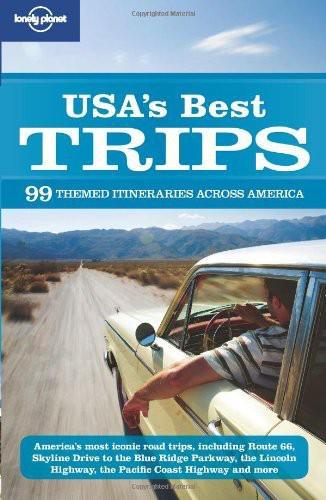
USA's Best Trips
by
Sara Benson
Published 23 May 2010
Monday nights, Arlene’s Grocery, a dive bar near Moby’s Lower East Side home, showcases rock ’n’ roll karaoke. “I’m a very provincial person,” says Moby, who was drafted to play guitar in the karaoke band. “The appeal of a place is largely determined by its distance from my apartment.” As such, Moby’s rock side project The Little Deaths made its debut at Arlene’s. When working on music at 3am, Moby often heads to the oldest part of Chinatown (Mott St, south of Canal St) and literally loses himself in his city. “Most of the city is built on a grid system, so this is one of the only places you can do that. All the signs are in Cantonese or Mandarin and the streets are narrow and winding…I’ll listen to my headphones, walk around and just get totally lost.”
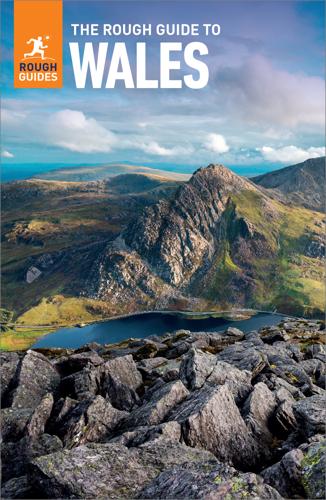
The Rough Guide to Wales
by
Rough Guides
Published 14 Oct 2024
Save for the odd gig, the band remain on sabbatical at present, though a couple of members have undertaken solo projects, not least the prolific frontman, Gruff Rhys, whose albums Hotel Shampoo (2011), Babelsberg (2018), Pang! (2019) and Sadness Sets Me Free (2024), are all typically off-kilter affairs, though the most interesting is American Interior (2014), a combined album/film project. Check out, too, Rhys’ side-project, Neon Neon, and their two releases to date, Stainless Style (2008) and Praxis Makes Perfect (2013). Meanwhile, the Super Furries’ keyboard player Cian Ciaran has also released two albums, the latest being the excellent They Are Nothing Without Us in 2013. In a similar vein, indie-psych band Gorky’s Zygotic Mynci were responsible for a handful of marvellously quirky records, such as the folksy Barafundle (1997) and the gorgeous The Blue Trees (2000), before splitting in 2006.
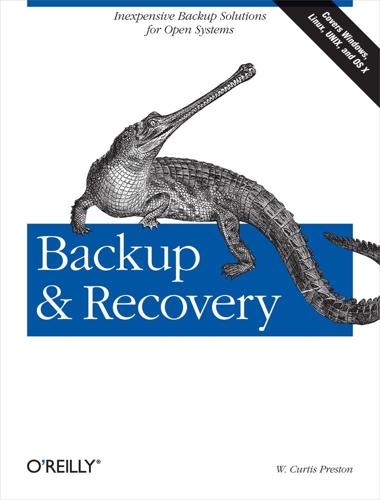
Backup & Recovery
by
W. Curtis Preston
Published 9 Feb 2009
When posting to the mailing list, try to include as much information as possible, such as the OS of the server and the client, a copy of the config files, and the error sections from the logs. The Future of BackupPC Features are steadily being added to BackupPC. Recent additions include a full CGI-based configuration editor and improved internationalization support. Currently, the big development activity is around BackupPCd, a side project being worked on in tandem with the work being done on the main server. BackupPCd is a client for the BackupPC server that will handle all the issues involved in dealing with the client. It will also implement its own transport protocol with the server. This protocol is being based on the rsync protocol, ensuring a reliable and efficient transport.

Wanderers: A Novel
by
Chuck Wendig
Published 1 Jul 2019
We have to go to the FBI. You have to come clean.” “I need you to trust me,” she said, her voice dire. She clasped her hands together, as if to pray for his mercy. “It’s not all as it seems. You can come with me. We’ll go to Atlanta. I can show you things. I can—” “Show me what? Was this some side project of yours? What are these things? What is their purpose?” He felt nauseated. Everything had gone topsy-turvy, like a nightmare that followed him out of sleep and into reality. “And how does Marcy Reyes factor into it? She’s a receiver? You said something about a, a, a signal—” Someone knocked at the door.
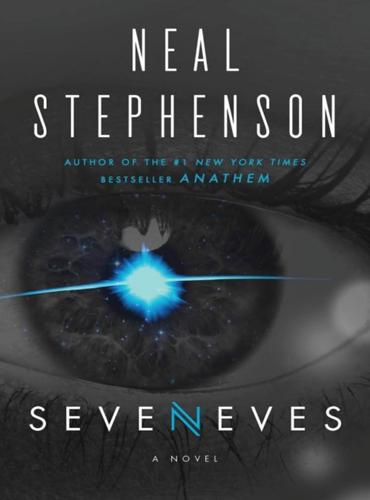
Seveneves
by
Neal Stephenson
Published 19 May 2015
“Not surprisingly, the powers that be are a little nervous about that and so word came down from on high that we ought to be preparing a backup plan, so we can go pull Ymir’s fat from the fire if need be. Well. That couldn’t be better, from a Martian point of view! As you know, we have been planning this mission for years. After Zero, I kept it going as a side project all through the development of the MIV program, and we managed to grease it in as one of the use cases.” “Use cases?” “One of the hypothetical uses to which the MIV kit might eventually be put,” Spencer explained. “Basically it just gave us an excuse to include a few components, like throttleable landing engines and aeroshield material, that might not have made it in otherwise,” Paul went on.
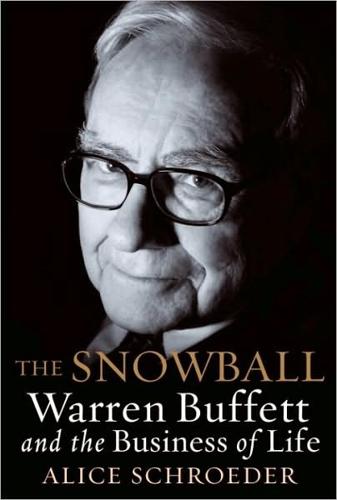
The Snowball: Warren Buffett and the Business of Life
by
Alice Schroeder
Published 1 Sep 2008
At the end of 1956, Warren wrote a letter to the partners outlining the partnership’s results at year-end. He reported that it had earned a total income of slightly more than $4,500, beating the market by about four percent.22 By then, Dan Monen, his lawyer, had withdrawn from the first partnership, with Doc Thompson buying out his share. Monen had joined Warren on a personal side project that he had been pursuing for some time: buying the stock of an Omaha-based insurer, National American Fire Insurance. This company’s worthless stock had been sold to farmers all over Nebraska in 1919 by unscrupulous promoters in exchange for the Liberty Bonds issued during World War I.23 Since then, its certificates had lain crumbling in drawers, while their owners gradually lost hope of ever seeing their money again.

The Rough Guide to South America on a Budget (Travel Guide eBook)
by
Rough Guides
Published 1 Jan 2019
AR$1000 Eating and drinking Restaurants and cafés surround the main plaza, where in summer you can join crowds of locals strolling through the city at dusk with an ice cream. Bad Brothers Camila Quintana de Niño 59, 03868 426 039 badbrotherswe.com. This remodelled house and garden offers up a great wine experience with vinos from the eponymous label and the winemaker’s side projects. Small plates for sharing include tasty braised beef rib (AR$170). Wine flights from AR$100. Mon–Wed & Sun 6.30pm–1am, Thurs–Sat noon–3pm & 6.30pm–1am. Baco Güemes Norte, at Rivadavia, 03868 566 185. Simple decor and friendly staff make this corner restaurant popular, as do its pizzas, trout and local wines.